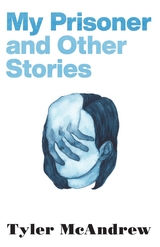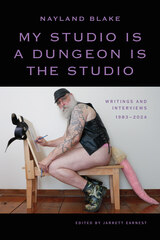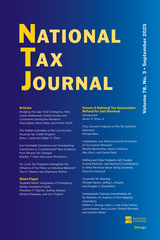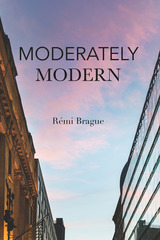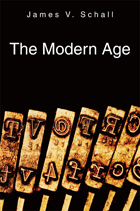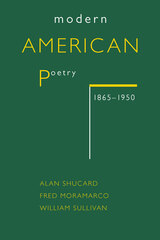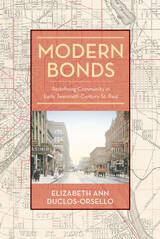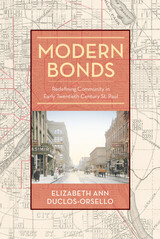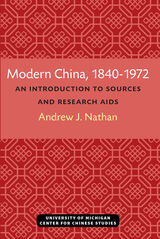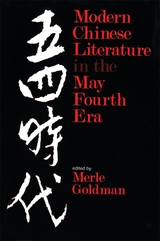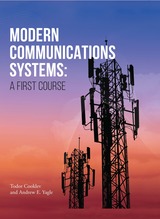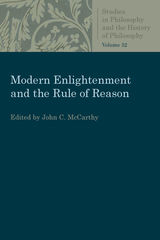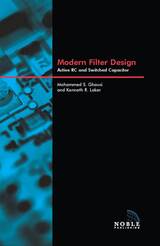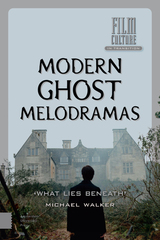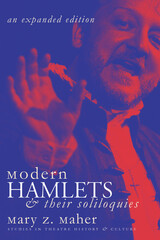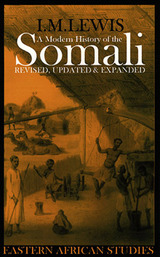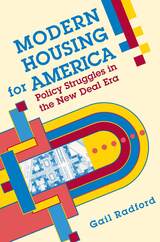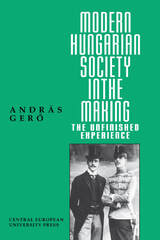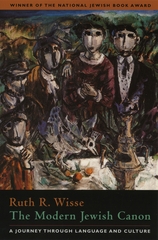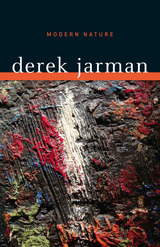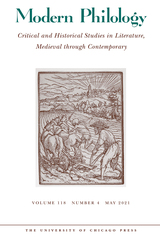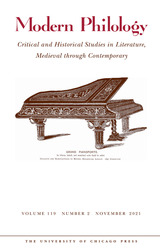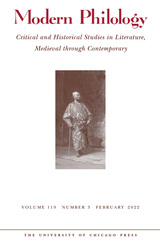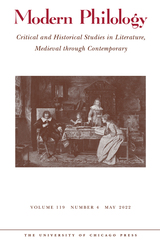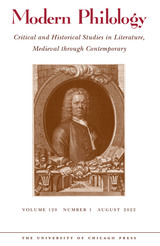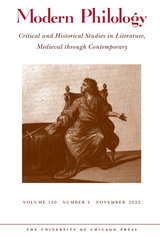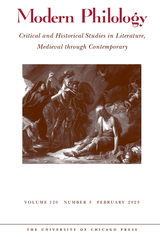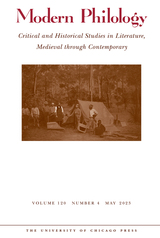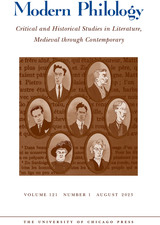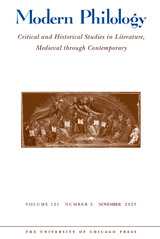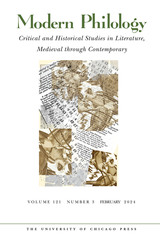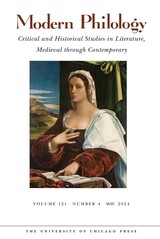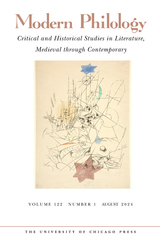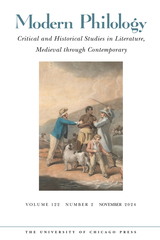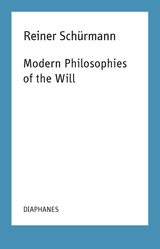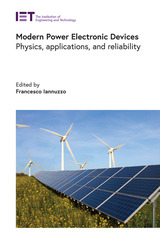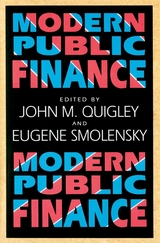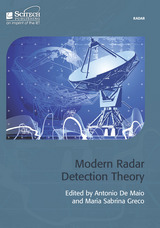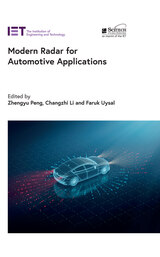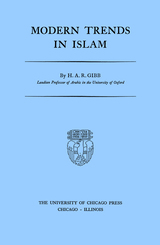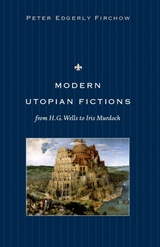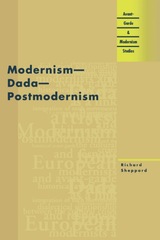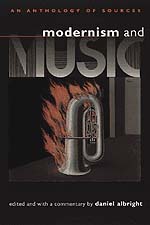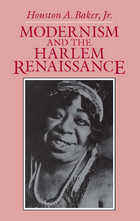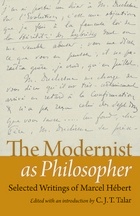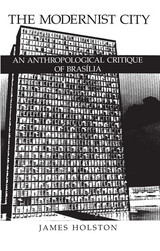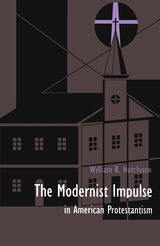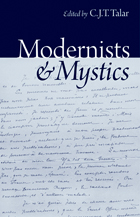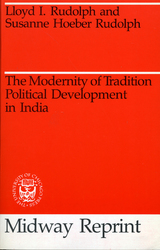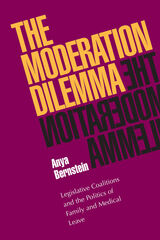 The Moderation Dilemma: Legislative Coalitions and the Politics of Family and Medical Leave
Anya Bernstein
University of Pittsburgh Press, 2001 The effort to legislate family and medical leave policies in the United States illustrates a dilemma at the heart of the American political process. Faced with strong opposition from business lobbies, proponents of leaves in the late 1980s and early 1990s had to balance their desire to pass the policy they wanted against the desire to pass a policy at all.
In this lucid and timely book, Anya Bernstein analyzes how this "moderation dilemma" played out at the federal level and in four states. In so doing, she develops a new model of policy innovation based on the debate between the ideologically committed who want all or nothing (and often get nothing) and compromisers who will settle for less (and often get a lot less). Hers is a unique perspective on one of the few major policy innovations of the 1990s, and on the contentious issue of the role of the state in American family life.
Based on interviews with activists, legislators, staff members, and observers, The Moderation Dilemma uncovers the process by which advocates for family and medical leave determined what they would propose, chose their strategies, lobbied, and bargained. Bernstein found that groups were successful when they had access to
substantial resources, were willing to frame their proposals in culturally appropriate ways, and “fit” their strategies to the political context. In the case of family and medical leave, this meant co-opting the tactics of the new right and framing family leave as family values, as well as making significant compromises. But not all groups were willing to make these compromises. The fact that the laws mandating family and medical leaves cover barely half the population, and are unpaid, raises questions about the costs and benefits of moderation.
Bernstein also takes a fresh look at women’s movement groups in the 1990s. She compares those who have learned to work within the political system (insiders) with those that still focus on challenging it (outsiders). The women’s groups that led the fight to pass family and medical leave had to rethink their goals as supporters both of equality for women and of accommodation for women’s role as mothers. The Moderation Dilemma examines that transition and its debates, as well as the implications for the women’s movement as a whole.
Students and professionals in political science, sociology, and organizational theory will want to read The Moderation Dilemma, as will anyone concerned with the behavior of interest groups and social movements.
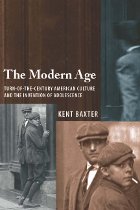 The Modern Age: Turn-of-the-Century American Culture and the Invention of Adolescence
Kent Baxter
University of Alabama Press, 2008 The Modern Age examines the discourses that have come to characterize adolescence and argues that commonplace views of adolescents as impulsive, conflicted, and rebellious are constructions inspired by broader cultural anxieties that characterized American society in early-twentieth-century America. The idea of adolescence, argues Kent Baxter, came into being because it fulfilled specific historical and cultural needs: to define a quickly expanding segment of the population, and to express concerns associated with the movement into a new era. Adolescence—a term that had little currency before 1900 and made a sudden and pronounced appearance in a wide variety of discourses thereafter—is a “modern age” not only because it sprung from changes in American society that are synonymous with modernity, but also because it came to represent all that was threatening about “modern life.” Baxter provides a preliminary history of adolescence, focusing specifically on changes in the American educational system and the creation of the juvenile justice system that carved out a developmental space between the child and the adult. He looks at the psychological works of G. Stanley Hall and the anthropological works of Margaret Mead and explores what might have inspired their markedly negative descriptions of this new demographic. He examines the rise of the Woodcraft Indian youth movement and its promotion of “red skin” values while also studying the proliferation of off-reservation boarding schools for Native American youth, where educators attempted to eradicate the very “red skin” values promoted by the Woodcraft movement. Finally Baxter studies reading at the turn of the century, focusing specifically on Horatio Alger (the Ragged Dick series) and Edward Stratemeyer (the Tom Swift, Nancy Drew, and Hardy Boys series) and what those works reveal about the “problem” of adolescence and its solutions in terms of value, both economic and moral.
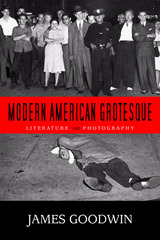 Modern American Grotesque: Literature and Photography
James Goodwin
Ohio State University Press, 2009 Modern American Grotesque by James Goodwin explores meanings of the grotesque in American culture and explains their importance within our literature and photography. What Flannery O’Connor said in the 1950s of American mass media—that the problem for a serious writer of the grotesque is “one of finding something that is not grotesque”—is incalculably truer today. Ask people what they find grotesque in the national scene and many will readily offer examples from tabloid journalism, extreme movie genres, reality shows, celebrity news, YouTube, and the like. As contemporary life is increasingly given over to such surface phenomena, it is an appropriate time to examine the more deeply rooted places of the grotesque as a literary and visual tradition over the last full century. A lineage of the modern grotesque evolved in the fiction of Sherwood Anderson, Nathanael West, and Flannery O’Connor, and the photography of Weegee and Diane Arbus. Each of these artists adopts the grotesque in order to recontextualize American culture and society and thereby to advance an attitude toward our collective history. To understand the deep structure of the grotesque Goodwin’s book calls upon contexts that involve visual aesthetics, theories of comedy, prose stylistics, the technology of photography, ideas of reflexivity, and concepts of racial difference.
Modern American Poetry, 1865-1950
Alan Shucard
University of Massachusetts Press, 1990 An examination of the origins and evolution of modernism in American verse from Dickinson to the objectivist movement, this book offers imaginative readings of those writers who helped create a distinctive American poetic voice.
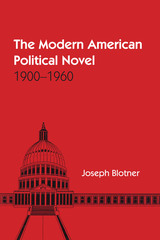 The Modern American Political Novel: 1900-1960
By Joseph Blotner
University of Texas Press, 1966 Politics, the workings of government and of people in government, has long been a fertile field for exploration by the novelist. The political arena offers many examples of conflict—between individuals, groups, or the individual and the group, or within the individual. It is natural then that a sizable body of fiction has grown up using politics as a main source of action.
In this study Joseph Blotner attempts "to discover the image of American poIitics as presented in American novels over a sixty-year span." His major discussion is limited to 138 novels dealing directly with candidates, officeholders, party officials, or "individuals performing political acts as they are conventionally understood." He also refers to nineteenth-century predecessors, European analogues, or other twentieth-century American novels as they bear on his discussions.
Blotner gives a thorough examination of certain archetypal figures (the young hero, the political boss, and the Southern demagogue), which appear in central or subordinate positions in the action of many political novels. He finds that the novels reflect certain major movements or upheavals in the political history of the United States or the world (in particular, fascism and McCarthyism), and that they also give the political aspects of universal attitudes or problems (corruption, disillusionment, reaction, and the role of women and of the intellectual). The author presents a detailed analysis of each of these subjects, prefacing each analysis by a survey of the historical background out of which the fiction grew, and including a brief and often pungent assessment of the literary merits of each novel discussed. He also surveys a large body of political fiction which cuts across all of these categories: the novel of the future—both utopian and apocalyptic.
The Modern American Political Novel will be of great interest to the student of twentieth-century literature; the political scientist, the sociologist, and even the practicing politician will also find its analyses useful and illuminating.
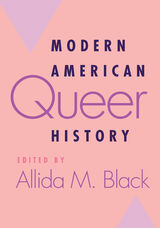 Modern American Queer History
Allida Black
Temple University Press, 2001 In the twentieth century, countless Americans claimed gay, lesbian, bisexual, and transgender identities, forming a movement to secure social as well as political equality. This collection of essays considers the history as well as the historiography of the queer identities and struggles that developed in the United States in the midst of widespread upheaval and change.
Whether the subject is an individual life story, a community study, or an aspect of public policy, these essays illuminate the ways in which individuals in various locales understood the nature of their desires and the possibilities of resisting dominant views of normality and deviance. Theoretically informed, but accessible, the essays shed light too on the difficulties of writing history when documentary evidence is sparse or "coded." Taken together these essays suggest that while some individuals and social networks might never emerge from the shadows, the persistent exploration of the past for their traces is an integral part of the on-going struggle for queer rights.
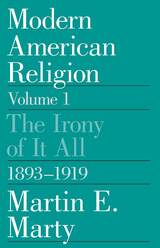 Modern American Religion, Volume 1: The Irony of It All, 1893-1919
Martin E. Marty
University of Chicago Press, 1986 Martin E. Marty argues that religion in twentieth-century America was essentially shaped by its encounter with modernity. In this first volume, he records and explores the diverse ways in which American religion embraced, rejected, or cautiously accepted the modern world.
"Marty writes with the highest standards of scholarship and with his customary stylistic grace. No series of books is likely to tell us as much about the religious condition of our own time as "Modern American Religion."—Robert L. Spaeth, Minneapolis Star Tribune
"The wealth of material and depth of insight are beyond reproach. This book will clearly stand as an important meteorological guide to the storm front of modernity as it swept Americans into the twentieth century."—Belden C. Lane, Review of Religions
"Whatever one thinks about Marty's theological or philosophical position as a historian, the charm of his friendly circumspective approach to American religious history is irresistible."—John E. Wilson, Theological Studies
"Marty attempts to impose historical order on the divergent ways a century of Americans have themselves tried to find order in their worlds. . . . [He] meets the challenge deftly. . . . It is a book relevant to our time. . . . Engages the heart and mind jointly."—Andy Solomon, Houston Post
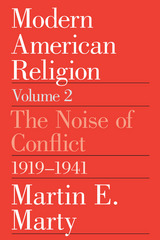 Modern American Religion, Volume 2: The Noise of Conflict, 1919-1941
Martin E. Marty
University of Chicago Press, 1991 Not since the Civil War had America been so divided by conflict. Religion was the prime agent in this unusual war: Left versus Right, Fundamentalists versus Modernists; Christians versus Jews; Protestant versus Catholic; white versus black. In this volume, Martin E. Marty tells the riveting story of how America has survived religious disturbances and culturally prospered from them.
"He tells the story [of the 1920s and 1930s] with a verve seldom equaled and manages to condense in one volume the results of dozens of specialized monographs. . . . [It] bears the usual hallmarks of a Marty book: a smoothly flowing narrative, passages studded with suggestive insight inviting further research, and apt quotations that capture the gist of complicated issues. . . . [A] splendid book. . . . Deserves a wide readership and undoubtedly will receive it." —James H. Moorhead, Chicago Sunday Tribune
"There is simply no better source, certainly none so engaging, for the interactions of religion and the larger culture in the interwar period." —Robert Booth Fowler, Journal of American History
"[This book is] not merely a history of American religion, but what might better be called a religious history" —David M. Kennedy, New York Times Book Review
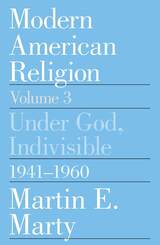 Modern American Religion, Volume 3: Under God, Indivisible, 1941-1960
Martin E. Marty
University of Chicago Press, 1996 In this third volume of his acclaimed chronicle of faith in twentieth-century America, Martin E. Marty presents the first authoritative account of American religious culture from the entry of the United States into World War II through the Eisenhower years.
Under God, Indivisible, 1941-1960 is the first book to systematically address religion and the roles it played in shaping the social and political life of mid-century America. A work of exceptional clarity and historical depth, it will interest general readers as well as historians of American and church history.
"The series will become a standard account of the nation's variegated religious culture during the current century. The four volumes, the fruition of decades of research, may rank as much honored Marty's most significant contribution to U.S. studies."—Richard N. Ostling, Time
"When America needs some advice or commentary on the state of modern theology, the person it turns to is Martin Marty."—Publishers Weekly
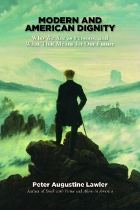 MODERN AND AMERICAN DIGNITY: Who We Are as Persons, and What That Means for Our Future
Peter Augustine Lawler
Intercollegiate Studies Institute, 2010
“Lawler proves himself again one of liberal democracy’s most perceptive friendly critics. . . . Lawler ranges widely—drawing on Socrates, Tocqueville, Solzhenitsyn, and Benedict XVI, among others—to explore the disturbing challenge modern liberalism poses to human dignity.” —First Things
“Written with grace, wit, and irrepressible self-assurance, [Modern and American Dignity] explores the moral, philosophical, and religious sources of human dignity. . . . Lawler argues that human rights and choices must rest on human dignity, and that dignity requires ontology—a concept of a person as a whole being—at odds with both neo-Darwinian sociobiology and Enlightenment individualism. . . . Recommended.” —Choice
“Lawler’s study excels at introducing critical themes in the discussion of what it means to be human . . . One of the most intellectually stimulating studies I’ve read in a long time. . . . Lawler is brilliant in his analysis. . . . The separate points of each chapter rise to the level of seminal insights. And in the end, like all profitable lines of thought once properly balanced, they form a very satisfying whole: They converge.” — Dr. Jeff Mirus, CatholicCulture.org
“As go the souls of individual Americans will go the future of our country. . . . Peter Lawler’s book should be studied so that we too can be open to the truth about ourselves and our country.” —University Bookman
“A lively and illuminating book . . . Lawler’s wide learning is never merely academic, but always at the service of understanding the human soul, and the political predicament of late modern man. . . . This is a book that allows us to think realistically about personal virtue.” —Journal of Markets and Morality
“Puts Mr. Lawler firmly in the rank of generally Christian and usually progressive-conservative thinkers identified by Russell Kirk as contributing to the uniquely Anglospheric form of the Conservative Mind. He is a real joy to read. . . . Grade: A+.” —BrothersJudd.com
Winner of “Author of the Year Award for Essay” from the Georgia Writers Association
An Indispensable Guide to Our Most Pressing Moral and Political Debates
The horrors of the twentieth century exposed the insufficiency of speaking of human rights. In intending to extinguish whole classes of human beings, the Nazis and Communists did something much worse than violating rights; they aimed to reduce us all to less than who we really are. As political philosopher Peter Augustine Lawler shows in this illuminating book, rights are insecure without some deeper notion of human dignity.
The threats to human dignity remain potent today—all the more so for being less obvious. Our anxious and aging society has embraced advances in science, technology, and especially biotechnology—from abortion and embryonic stem-cell research to psychopharmacology, cosmetic surgery and neurology, genetic manipulation, and the detachment of sex from reproduction. But such technical advances can come at the expense of our natural and creaturely dignity, of what we display when we know who we are and what we’re supposed to do. Our lives will only become more miserably confused if we cannot speak confidently about human dignity.
In Modern and American Dignity, Lawler, who served on President George W. Bush’s Council on Bioethics, reveals the intellectual and cultural trends that threaten our confidence in human dignity. The “modern” view of dignity, as he calls it, denies what’s good about who we are by nature, understanding human dignity to mean moral autonomy (freedom from nature) or productivity (asserting our mastery over nature by devising ingenious transformations). This new understanding of dignity stands at odds with the “American” view, which depends on the self-evidence of the truth that we are all created equally unique and irreplaceable. The American view, which is indebted to classical, Christian, and modern sources, understands that free persons are more than merely autonomous or productive beings—or, for that matter, clever chimps. It sees what’s good in our personal freedom and our technical mastery over nature, but only in balance with the rest of what makes us whole persons—our dignified performance of our “relational” duties as familial, political, and religious beings.
Modern and American Dignity explores these topics with wit and elegance. To make sense of contemporary political and moral debates, Lawler draws on a wide range of thinkers—from Socrates to Solzhenitsyn, from Tocqueville to Chesterton, from John Courtney Murray to our philosopher-pope Benedict XVI. In revealing the full dimensions of these debates, he exposes the emptiness of glib pronouncements—such as President Obama’s—that our bioethical conflicts can be resolved by a consensus of scientific experts. As the experience of the Bush Bioethics Council demonstrated, there is no scientific consensus about who a human being is.
Lawler has provided an indispensable guide to today’s complex political, bioethical, and cultural debates.
 The Modern Arabic Literary Language: Lexical and Stylistic Developments
Jaroslav Stetkevych. Foreword by Roger Allen
Georgetown University Press, 2006 The Modern Arabic Literary Language is a thoughtful examination of the changes that the Arabic language has undergone in its transition from its roots in classical Arabic to a language able to meet the demands of twentieth-century life. In this volume a respected and masterful scholar of the Arabic language Jaroslav Stetkevych notes the ways that new words have been incorporated into the language, ranging from deriving new terms from existing roots (for example, the word for "newspaper" derives from the word meaning "sheet to write on") to downright assimilation of foreign words. Also noting the changes in grammar and semantics, Stetkevych illustrates how literary Arabic has become a more flexible language. Originally published in 1970, this volume is a clear assessment of lexical and stylistic developments in Modern Literary Arabic. This classic book is an important resource for scholars and advanced students of Arabic language and linguistics who wish to study the complexities of language change and lexical expansion.
 Modern Arabic Literature
Paul Starkey
Georgetown University Press, 2006 In this succinct introduction to modern Arabic literature of the nineteenth and twentieth centuries, Paul Starkey traces its development from the medieval Arabic literary tradition—beginning in the sixth-century with nomadic Bedouin poetry and the Qur'an—through new literary forms adapted from Western imaginative literature. He explores the interaction between social, political, and cultural change in the Middle East and northern Africa and the development of a modern Arabic literary tradition. From the early nineteenth century through World War I, the Western genres of poetry, the novel, short story, and drama reached various parts of the Arabic-speaking world. Starkey discusses the resultant evolution of Arabic literature in separate sections on poetry, prose writing, and the theatre in Egypt, the Levant, Iraq, and northern Africa, from early contact through the emergence of women's literary voices in the 1960s to contemporary writers. Arabic terms are presented in transcription, and an extensive bibliography provides suggestions for further reading. Modern Arabic Literature is the perfect introduction for readers interested in the contemporary Middle East or in comparative, colonial, world, or modern literature.
 Modern Arabic: Structures, Functions, and Varieties, Revised Edition
Clive Holes. Foreword by Roger Allen
Georgetown University Press, 2004 The revised and updated edition of Modern Arabic takes this authoritative, concise linguistic description of the structure and use of modern Arabic to an invaluable new level. Clive Holes traces the development of the Arabic language from Classical Arabic, the written language used in the 7th century for the Qur'an and poetry, through the increasingly symbiotic use of Modern Standard Arabic or MSA (the language of writing and formal speech) and dialectal Arabic (the language of normal conversation). He shows how Arabic has been shaped over the centuries by migration, urbanization, and education—giving us "a balanced, dispassionate, and accurate picture of the structures, functions, and varieties of the contemporary Arabic language." Holes explains the structural characteristics—phonology, morphology, syntax, semantics, and lexical and stylistic developments—that the majority of the dialects share, as distinguished from Modern Standard Arabic. He also shows how native speakers use both types of Arabic for different purposes, with MSA being the language of power and control as used on television and in political speeches, and the dialects serving as the language of intimacy and domesticity. He further shows how MSA and spoken dialects are not as compartmentalized as one might be led to believe. Modern Arabic illustrates the use of the Arabic language in real life, whether in conversation, news bulletins and newspaper articles, serious literature, or song. This new edition takes into account research published in several areas of Arabic linguistics since the first edition was published in 1995. It includes more extensive comment on the North African Arabic vocabulary of Modern Standard Arabic, more information about "mixed" varieties of written Arabic that are not in MSA (especially in Egypt), updated references, explanations, and many new examples. All Arabic is transcribed, except for an appendix presenting the Arabic alphabet and script. Students of the Arabic language will find Modern Arabic without peer—as will those general linguists who are interested in discovering how Arabic compares structurally and sociolinguistically with European languages.
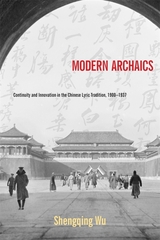 Modern Archaics: Continuity and Innovation in the Chinese Lyric Tradition, 1900–1937
Shengqing Wu
Harvard University Press After the collapse of the Qing dynasty in 1911 and the rise of a vernacular language movement, most scholars and writers declared the classical Chinese poetic tradition to be dead. But how could a longstanding high poetic form simply grind to a halt, even in the face of tumultuous social change? In this groundbreaking book, Shengqing Wu explores the transformation of Chinese classical-style poetry in the early twentieth century. Drawing on extensive archival research into the poetry collections and literary journals of two generations of poets and critics, Wu discusses the continuing significance of the classical form with its densely allusive and intricately wrought style. She combines close readings of poems with a depiction of the cultural practices their authors participated in, including poetry gatherings, the use of mass media, international travel, and translation, to show how the lyrical tradition was a dynamic force fully capable of engaging with modernity. By examining the works and activities of previously neglected poets who maintained their commitment to traditional aesthetic ideals, Modern Archaics illuminates the splendor of Chinese lyricism and highlights the mutually transformative power of the modern and the archaic.
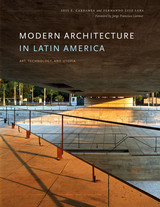 Modern Architecture in Latin America: Art, Technology, and Utopia
By Luis E. Carranza and Fernando Luiz Lara; foreword by Jorge Francisco Liernur
University of Texas Press, 2015 Designed as a survey and focused on key examples and movements arranged chronologically from 1903 to 2003, this is the first comprehensive history of modern architecture in Latin America in any language.
Runner-up, University Co-op Robert W. Hamilton Book Award, 2015 Modern Architecture in Latin America: Art, Technology, and Utopia is an introductory text on the issues, polemics, and works that represent the complex processes of political, economic, and cultural modernization in the twentieth century. The number and types of projects varied greatly from country to country, but, as a whole, the region produced a significant body of architecture that has never before been presented in a single volume in any language. Modern Architecture in Latin America is the first comprehensive history of this important production. Designed as a survey and focused on key examples/paradigms arranged chronologically from 1903 to 2003, this volume covers a myriad of countries; historical, social, and political conditions; and projects/developments that range from small houses to urban plans to architectural movements. The book is structured so that it can be read in a variety of ways—as a historically developed narrative of modern architecture in Latin America, as a country-specific chronology, or as a treatment of traditions centered on issues of art, technology, or utopia. This structure allows readers to see the development of multiple and parallel branches/historical strands of architecture and, at times, their interconnections across countries. The authors provide a critical evaluation of the movements presented in relationship to their overall goals and architectural transformations.
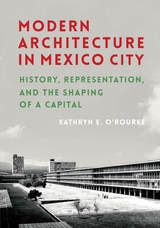 Modern Architecture in Mexico City: History, Representation, and the Shaping of a Capital
Kathryn E. O'Rourke
University of Pittsburgh Press, 2016 Winner, 2018 SAH Alice Davis Hitchcock Award
Mexico City became one of the centers of architectural modernism in the Americas in the first half of the twentieth century. Invigorated by insights drawn from the first published histories of Mexican colonial architecture, which suggested that Mexico possessed a distinctive architecture and culture, beginning in the 1920s a new generation of architects created profoundly visual modern buildings intended to convey Mexico’s unique cultural character. By midcentury these architects and their students had rewritten the country’s architectural history and transformed the capital into a metropolis where new buildings that evoked pre-conquest, colonial, and International Style architecture coexisted.
Through an exploration of schools, a university campus, a government ministry, a workers’ park, and houses for Diego Rivera and Luis Barragán, Kathryn O’Rourke offers a new interpretation of modern architecture in the Mexican capital, showing close links between design, evolving understandings of national architectural history, folk art, and social reform. This book demonstrates why creating a distinctively Mexican architecture captivated architects whose work was formally dissimilar, and how that concern became central to the profession.
Modern Argentine Masculinities
Edited by Carolina Rocha
Intellect Books, 2013 Setting new standards in assessing how masculinity in Argentina has been represented in film, literature, and music, this collection untangles Argentinian construction of masculinity, manhood, and gendered difference from the nineteenth century to the present. With methodologies ranging from literary analysis of novels to historical approaches to the construction and performance of gender, these essays offer a dramatic, new multidisciplinary approach to modern Argentinian masculinity.
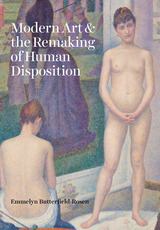 Modern Art and the Remaking of Human Disposition
Emmelyn Butterfield-Rosen
University of Chicago Press, 2021 How artists at the turn of the twentieth century broke with traditional ways of posing the bodies of human figures to reflect modern understandings of human consciousness.
With this book, Emmelyn Butterfield-Rosen brings a new formal and conceptual rubric to the study of turn-of-the-century modernism, transforming our understanding of the era’s canonical works. Butterfield-Rosen analyzes a hitherto unexamined formal phenomenon in European art: how artists departed from conventions for posing the human figure that had long been standard. In the decades around 1900, artists working in different countries and across different media began to present human figures in strictly frontal, lateral, and dorsal postures. The effect, both archaic and modern, broke with the centuries-old tradition of rendering bodies in torsion, with poses designed to simulate the human being’s physical volume and capacity for autonomous thought and movement. This formal departure destabilized prevailing visual codes for signifying the existence of the inner life of the human subject.
Exploring major works by Georges Seurat, Gustav Klimt, and the dancer and choreographer Vaslav Nijinsky— replete with new archival discoveries—Modern Art and the Remaking of Human Disposition combines intensive formal analysis with inquiries into the history of psychology and evolutionary biology. In doing so, it shows how modern understandings of human consciousness and the relation of mind to body were materialized in art through a new vocabulary of postures and poses.
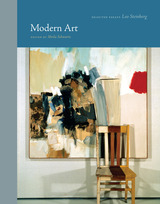 Modern Art: Selected Essays
Leo Steinberg
University of Chicago Press, 2023 The fifth and final volume in the Essays by Leo Steinberg series, focusing on modern artists.
Leo Steinberg was one of the most original art historians of the twentieth century, known for taking interpretive risks that challenged the profession by overturning reigning orthodoxies. In essays and lectures ranging from old masters to modern art, he combined scholarly erudition with eloquent prose that illuminated his subject and a credo that privileged the visual evidence of the image over the literature written about it. His writings, sometimes provocative and controversial, remain vital and influential reading. Steinberg’s perceptions evolved from long, hard looking at his objects of study. Almost everything he wrote included passages of formal analysis that were always put into the service of interpretation.
Following the series publication on Pablo Picasso, this volume focuses on other modern artists, including Cézanne, Monet, Matisse, Max Ernst, Jasper Johns, Robert Rauschenberg, Roy Lichtenstein, Hans Haacke, and Jeff Koons. Included are seven unpublished lectures and essays, Steinberg’s landmark essay “Encounters with Rauschenberg,” a survey of twentieth-century sculpture, and an examination of the role of authorial predilections in critical writing. The final chapter presents a collection of Steinberg’s humorous pieces, witty forays penned for his own amusement.
Modern Art is the fifth and final volume in a series that presents Steinberg’s writings, selected and edited by his longtime associate Sheila Schwartz.
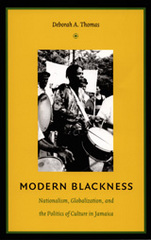 Modern Blackness: Nationalism, Globalization, and the Politics of Culture in Jamaica
Deborah A. Thomas
Duke University Press, 2004 Modern Blackness is a rich ethnographic exploration of Jamaican identity in the late twentieth century and early twenty-first. Analyzing nationalism, popular culture, and political economy in relation to one another, Deborah A. Thomas illuminates an ongoing struggle in Jamaica between the values associated with the postcolonial state and those generated in and through popular culture. Following independence in 1962, cultural and political policies in Jamaica were geared toward the development of a multiracial creole nationalism reflected in the country’s motto: “Out of many, one people.” As Thomas shows, by the late 1990s, creole nationalism was superseded by “modern blackness”—an urban blackness rooted in youth culture and influenced by African American popular culture. Expressions of blackness that had been marginalized in national cultural policy became paramount in contemporary understandings of what it was to be Jamaican. Thomas combines historical research with fieldwork she conducted in Jamaica between 1993 and 2003. Drawing on her research in a rural hillside community just outside Kingston, she looks at how Jamaicans interpreted and reproduced or transformed on the local level nationalist policies and popular ideologies about progress. With detailed descriptions of daily life in Jamaica set against a backdrop of postcolonial nation-building and neoliberal globalization, Modern Blackness is an important examination of the competing identities that mobilize Jamaicans locally and represent them internationally.
Modern Bonds: Redefining Community in Early Twentieth-Century St. Paul
Elizabeth Ann Duclos-Orsello
University of Massachusetts Press, 2018 What does community mean, exactly? In this interdisciplinary study, Elizabeth Ann Duclos-Orsello takes seriously the concept of community as an object of historical analysis.
Focusing on St. Paul, Minnesota, from 1900 to 1920, Modern Bonds explores the diverse ways that its people renegotiated private and public affiliations during a period of modernization.
The book examines a wide range of subjects and materials, including photographs from an African American family, fictional depictions of middle-class women, built environments that created enclaves of immigrants, and public festivals designed to unite all citizens. As Duclos-Orsello demonstrates, it was in this period that a complex set of activities, policies, and practices led to new understandings of community that continue to shape life today.
Modern Bonds: Redefining Community in Early Twentieth-Century St. Paul
Elizabeth Ann Duclos-Orsello
University of Massachusetts Press, 2018 What does community mean, exactly? In this interdisciplinary study, Elizabeth Ann Duclos-Orsello takes seriously the concept of community as an object of historical analysis. Focusing on St. Paul, Minnesota, from 1900 to 1920, Modern Bonds explores the diverse ways that its people renegotiated private and public affiliations during a period of modernization. The book examines a wide range of subjects and materials, including photographs from an African American family, fictional depictions of middle-class women, built environments that created enclaves of immigrants, and public festivals designed to unite all citizens. As Duclos-Orsello demonstrates, it was in this period that a complex set of activities, policies, and practices led to new understandings of community that continue to shape life today.
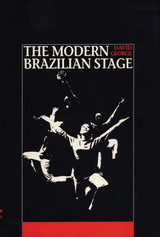 The Modern Brazilian Stage
By David George
University of Texas Press, 1992 Reading a play and watching it performed onstage are quite different experiences. Likewise, studying a country's theatrical tradition with reference only to playtexts overlooks the vital impact of a play's performance on the audience and on the whole artistic community. In this performance-centered approach to Brazilian theatre since the 1940s, David George explores a total theatrical language—the plays, the companies that produced them, and the performances that set a standard for all future stagings. George structures the discussion around several important companies. He begins with Os Comediantes, whose revolutionary 1943 staging of Nelson Rodrigues' Vestido de Noiva (Bridal Gown) broke with the outmoded comedy-of-manners formula that had dominated the national stage since the nineteenth century. He considers three companies of the 1950s and 1960s—Teatro Brasileiro de Comédia, Teatro de Arena, and Teatro Oficina—along with the 1967 production of O Rei da Vela (The Candle King) by Teatro Oficina. The 1970s represented a wasteland for Brazilian theatre, George finds, in which a repressive military dictatorship muzzled artistic expression. The Grupo Macunaíma brought theatre alive again in the 1980s, with its productions of Macunaíma and Nelson 2 Rodrigues. Common to all theatrical companies, George concludes, was the desire to establish a national aesthetic, free from European and United States models. The creative tension this generated and the successes of modern Brazilian theatre make lively reading for all students of Brazilian and world drama.
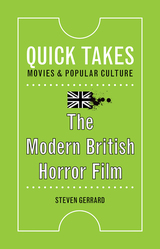 The Modern British Horror Film
Gerrard, Steven
Rutgers University Press, 2017 When you think of British horror films, you might picture the classic Hammer Horror movies, with Christopher Lee, Peter Cushing, and blood in lurid technicolor. Yet British horror has undergone an astonishing change and resurgence in the twenty-first century, with films that capture instead the anxieties of post-Millennial viewers.
Tracking the revitalization of the British horror film industry over the past two decades, media expert Steven Gerrard also investigates why audiences have flocked to these movies. To answer that question, he focuses on three major trends: “hoodie horror” movies responding to fears about Britain’s urban youth culture; “great outdoors” films where Britain’s forests, caves, and coasts comprise a terrifying psychogeography; and psychological horror movies in which the monster already lurks within us.
Offering in-depth analysis of numerous films, including The Descent, Outpost, and The Woman in Black, this book takes readers on a lively tour of the genre’s highlights, while provocatively exploring how these films reflect viewers’ gravest fears about the state of the nation. Whether you are a horror buff, an Anglophile, or an Anglophobe, The Modern British Horror Film is sure to be a thrilling read.
Modern Business Cycle Theory
Robert Barro
Harvard University Press, 1989 The new classical approach to macroeconomics, which assumes that people gather and use economic information efficiently, has been the most important theoretical advance since the Keynesian revolution of the 1930s. This book surveys the major contributions of the “second generation” of proponents of the new classical approach, emphasizing real business cycle theories and applying them to a variety of phenomena.
The chapters include expositions of growth theory, real models of business fluctuations, the informational role of prices, consumption, fiscal policy, rules versus discretion in monetary policy, time consistency and policy, and monetary models. Although the chapters are aimed at advanced undergraduate- and graduate-level students, they will also be of interest to researchers who are looking for a compact and original exposition of the new classical macroeconomics.
 Modern Catholic Social Documents and Political Economy
Albino F. Barrera, OP
Georgetown University Press, 2001 As western economies have moved from feudalism to industrialism to the information age, Catholic social thought has kept pace, responding to the economic realities of the day. Linking Catholic social teaching with modern economic theory, Albino F. Barrera examines the changing political economy embedded within the moral theology and social justice documents issued by the Church during the last hundred years. Barrera discusses the evolution of Catholic social teachings, from scholastic thinking on the concept of the "just price" to a modern emphasis on the importance of a living wage. As the conduct of economic life according to traditional custom and common law has given way to institutional and impersonal market forces, these teachings have moved from a preoccupation with personal moral behavior to an intense scrutiny of the structures of society. Amidst these changes, the Church's social documents have sought to address systemic shortcomings as a means of promoting the common good through economic justice. Barrera also looks ahead to the challenges posed by a postindustrial society characterized by a global, knowledge-based economy, arguing that Catholic social thought will likely shift its focus from advocacy of the living wage to demands for greater equality of socioeconomic participation. Written for scholars and students of economics, theology, and political science interested in religious social thought, this book bridges the gap between moral theology and economic theory.
 Modern Catholic Social Teaching: Commentaries and Interpretations
Kenneth R. Himes, Editor, Lisa Sowle Cahill, Charles E. Curran, David Hollenbach, and Thomas Shannon, Associate Editors
Georgetown University Press, 2005 With an equal emphasis on every word in the title—and with a distinctly American perspective—Himes and his distinguished associate editors and contributors, have assembled the most thorough and authoritative assessment of modern Roman Catholic social teaching to date, likely to remain the touchstone volume for decades. This culmination of many years of effort by twenty stellar scholars has produced a reference work for anyone interested in understanding or studying the key documents that comprise the central corpus of Catholic social teaching. In addition to interrogations of the major documents, this volume provides an understanding of the biblical and philosophical foundations of Catholic social teaching, addresses the doctrinal issues that arise in such a context, and explores the social thought leading up to the "modern" era, generally accepted as beginning in 1891 with the publication of Pope Leo XIII's Rerum Novarum. Finally, there is a review of how Catholic social teaching has been received in the United States, and an informed look at the shortcomings and questions that future generations must address. By any standard, Modern Catholic Social Teaching is a remarkable work—intellectually rigorous and deeply faithful, it provides accessible and thought-provoking insights into the heart of a belief tradition that every Catholic will find invaluable.
 Modern Catholic Social Teaching: Commentaries and Interpretations, Second Edition
Kenneth R. Himes, Editor
Georgetown University Press Including contributions from twenty-two leading moral theologians, this volume is the most thorough assessment of modern Roman Catholic social teaching available. In addition to interrogations of the major documents, it provides insight into the biblical and philosophical foundations of Catholic social teaching, addresses the doctrinal issues that arise in such a context, and explores the social thought leading up to the "modern" era, which is generally accepted as beginning in 1891 with the publication of Pope Leo XIII's Rerum Novarum. The book also includes a review of how Catholic social teaching has been received in the United States and offers an informed look at the shortcomings and questions that future generations must address. This second edition includes revised and updated essays as well as two new commentaries: one on Pope Benedict XVI's encyclical Caritas in Veritate and one on Pope Francis's encyclical Laudato Si'. An outstanding reference work for anyone interested in studying and understanding the key documents that make up the central corpus of modern Catholic social teaching.
Modern China, 1840–1972: An Introduction to Sources and Research Aids
Andrew J. Nathan
University of Michigan Press, 1973 Graduate students have traditionally learned a good part of what they know about sources and research aids on modern China through hearsay and serendipity, in unsystematic and unreliable bits and pieces. The field has now developed to the point where this need not and ought not to be so. It is now possible for beginning researchers to start with some shared basic knowledge of research aids and documentary resources. This research guide is meant to provide that knowledge. The user of this guide is envisaged as an American graduate student in history or the social sciences who is already familiar with the major English-language secondary literature on modern China and is about to begin original research, either for a seminar paper or for a dissertation.
 Modern China: A Guide to a Century of Change
Graham Hutchings
Harvard University Press, 2001 In the new millennium all eyes are on China, which many believe has the potential in the near future to rise to world prominence as a political leader and an economic powerhouse. Yet several aspects of Chinese society remain an obstacle to internal growth and of deep concern to the outside world.
In Modern China Graham Hutchings offers a timely and useful reference guide to the people, places, ideas, and events crucial to an understanding of this rising power. The focus is on society and politics and their impact on both China and the world. After an introduction that discusses key themes in twentieth-century China, Hutchings provides over two hundred insightful short essays, arranged alphabetically, that cover central figures and events from Sun Yat-sen to Jiang Zemin and the Boxer Rebellion to Tiananmen Square. Included are separate entries on each province, the current political leadership, and the two colonies recently returned to Chinese control, Hong Kong and Macau, as well as trenchant essays on subjects that remain sensitive within and controversial outside China, such as religion, ethnic minorities, Tibet, Taiwan, and human rights.
Accessible and authoritative, Modern China is invaluable for anyone interested in the transformation of this ancient land into a modern power.
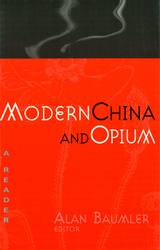 Modern China and Opium: A Reader
Alan Baumler, Editor
University of Michigan Press, 2001 The Chinese struggle to create a modern nation was tied closely to the opium trade. Throughout much of the nineteenth and early twentieth centuries, China's economy, politics, and society were steeped in opium and opium money. All of China's modern governments took the crusade to liberate the nation from this "plague" as one of their essential tasks. However, the opium problem proved to be more complex than many had imagined. There was much disagreement over both the nature of the problem and the solution. Was opium a relatively harmless substance--only a danger to the weak-willed--or a poison that would inevitably destroy the nation? How could the state control this slippery substance and the people who used it? These were more than abstract questions, as all Chinese states profited from the opium trade and most Chinese either used the substance or knew people who did. By presenting a selection of original source readings from the Qing dynasty, the Republic, and the Communist government, this book makes comprehensible the many debates among Chinese involving opium in the modern period. The readings are drawn from a variety of sources including memoirs, diplomatic reports, and journals. It will be of particular interest to students of modern China. Alan Baumler is Assistant Professor of History, Indiana University of Pennsylvania.
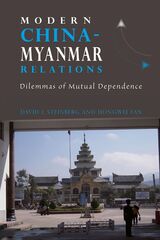 Modern China-Myanmar Relations: Dilemmas of Mutual Dependence
David I. Steinberg and Hongwei Fan
National University of Singapore Press, 2012 This volume examines the changing relations between China and Burma/Myanmar since Burmese independence in 1948 and the formation of the People's Republic of China in 1949. Drawing on hitherto unavailable Chinese sources, it documents the negotiations and settlement of outstanding issues such as the border demarcation, the Chinese Nationalist forces in Burma, the status of the overseas Chinese residents, and the Burma Communist Party. The study documents the Sino-Burmese riots of 1967, the improvement of relations, culminating in the close bilateral association since 1988-89. It analyses in detail Myanmar's changing role in Chinese strategy, concentrating on trade and investment relations, oil, gas, hydroelectric power, natural resources and improved transportation. It outlines military cooperation, narcotics control, and migration while emphasizing Indian and ASEAN concerns and responses. The volume outlines a set of policy dilemmas facing the central and provincial Chinese authorities, the Myanmar government and Burmese ethnic minorities, while analysing dilemmas for the United States, India, ASEAN and Japan in responding to the changed interdependent Sino-Burmese relationship.
 Modern China’s Foreign Policy
Werner Levi
University of Minnesota Press, 1953 Modern China's Foreign Policy was first published in 1953. Minnesota Archive Editions uses digital technology to make long-unavailable books once again accessible, and are published unaltered from the original University of Minnesota Press editions. What are China's objectives in world affairs and what course will she pursue to achieve her goals? These are the questions of vital concern to the Western democracies, questions that can be approached intelligently only from a knowledge of how China's foreign policy has developed. In this illuminating and carefully documented book, Professor Levi analyzes china's attitudes and actions toward the rest of the world and clarifies many motivations behind her behavior, past and present. He traces the development of her foreign relations from the beginning of the modern era of Chinese contacts with Westerners, a little more than hundred years ago. The emphasis, however, is on the twentieth century, and particularly on the years since the peace settlements of World War I. The complex balance of relationships between China and the United States, on the one hand, and China and the Soviet Union, on the other, since the end of World War II is discussed in detail. Communist doctrine, notwithstanding its apparent rigidity, is shown to be a conveniently adjustable tool, capable of adaptation to the needs and strategies of present-day China. An integral part of the account is the attempt to single out and interpret the internal forces -- cultural, social, and economic -- that have influenced and shaped China's external policies. Thus, it is shown that the determinants of China's foreign policy have often been pressures and complexities within the country and that and understanding of the Chinese people and their traditions is essential to nations in their dealings with China.
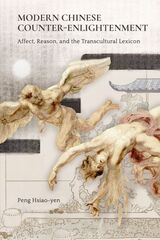 Modern Chinese Counter-Enlightenment: Affect, Reason, and the Transcultural Lexicon
Peng Hsiao-yen
Hong Kong University Press, 2023 An examination of the Counter-Enlightenment movement in China.
In Modern Chinese Counter-Enlightenment, Peng Hsiao-yen argues that a trend of Counter-Enlightenment had grown from the late Qing to the May Fourth era in the 1910s to the 1920s and continued to the 1940s. She demonstrates how Counter-Enlightenment was manifested with case studies such as Lu Xun’s writings in the late 1900s, the Aesthetic Education movement from the 1910s to 1920s, and the Science and Lifeview debate in the 1920s. During the period, the life philosophy movement, highlighting the epistemic debate on affect and reason, is connected with its counterparts in Germany, France, and Japan. The movement had a widespread and long-term impact on Chinese philosophy and literature. Using the transcultural lexicon as methodology, this book traces how the German term Lebensanschauung (life view), a key concept in Rudolf Eucken’s life philosophy, constituted a global tide of Counter-Enlightenment that influenced the thought of leading Chinese intellectuals in the Republican era. Peng contends that Chinese intellectuals’ transcultural connections with others in the philosophical pursuit of knowledge triggered China’s self-transformation. She successfully reconstructs the missing link in the Chinese theater of the worldwide dialectic of Enlightenment and Counter-Enlightenment.
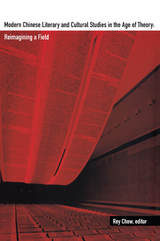 Modern Chinese Literary and Cultural Studies in the Age of Theory: Reimagining a Field
Rey Chow, ed.
Duke University Press, 2000 These groundbreaking essays use critical theory to reflect on issues pertaining to modern Chinese literature and culture and, in the process, transform the definition and conceptualization of the field of modern Chinese studies itself. The wide range of topics addressed by this international group of scholars includes twentieth-century literature produced in Taiwan, Hong Kong, and mainland China; film, art, history, popular culture, and literary and cultural criticism; as well as the geographies of migration and diaspora. One of the volume’s provocative suggestions is that the old model of area studies—an offshoot of U.S. Cold War strategy that found its anchorage in higher education—is no longer feasible for the diverse and multifaceted experiences that are articulated under the rubric of “Chineseness.” As Rey Chow argues in her introduction, the notion of a monolithic Chineseness bound ultimately to mainland China is, in itself, highly problematic because it recognizes neither the material realities of ethnic minorities within China nor those of populations in places such as Tibet, Taiwan, and post–British Hong Kong. Above all, this book demonstrates that, as the terms of a chauvinistic sinocentrism become obsolete, the critical use of theory—particularly by younger China scholars whose enthusiasm for critical theory coincides with changes in China’s political economy in recent years—will enable the emergence of fresh connections and insights that may have been at odds with previous interpretive convention. Originally published as a special issue of the journal boundary 2, this collection includes two new essays and an afterword by Paul Bové that places its arguments in the context of contemporary cultural politics. It will have far-reaching implications for the study of modern China and will be of interest to scholars of theory and culture in general. Contributors. Stanley K. Abe, Ien Ang, Chris Berry, Paul Bové, Sung-cheng Yvonne Chang, Rey Chow, Dorothy Ko, Charles Laughlin, Leung Ping-kwan, Kwai-cheung Lo, Christopher Lupke, David Der-wei Wang, Michelle Yeh
Modern Chinese Literature in the May Fourth Era
Merle Goldman
Harvard University Press, 1977 One of the most creative and brilliant episodes in modern Chinese history, the cultural and literary flowering that takes the name of the May Fourth Movement, is the subject of this comprehensive and insightful book. This is the first study of modern Chinese literature that shows how China’s Confucian traditions were combined with Western influences to create a literature of new values and consciousness for the Chinese people.
Modern Communications Systems: A First Course
Todor Cooklev
Michigan Publishing, 2024 Modern Communications Systems is a senior-level introduction to communications systems, although it can also serve as a reference for graduate students and practicing engineers. It includes treatments of wireless and cabled transmission, cellular systems, and analog and discrete modulation and coding techniques. Examples include Wi-Fi, 4G and 5G cellular systems and DSL. Multicarrier and MIMO communication systems are also covered. All of the mathematics needed is included where it is used rather than in an early introduction, which makes it easier to follow. An extensive number of end-of-chapter problems, along with summaries of concepts, formulas and terms presented in each chapter, are included. Solutions to the end-of-chapter problems are available to instructors teaching from the book.
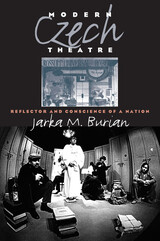 Modern Czech Theatre: Reflector and Conscience of a Nation
Jarka M. Burian
University of Iowa Press, 2000 The story of Czech theatre in the twentieth century involves generations of mesmerizing players and memorable productions. Beyond these artistic considerations, however, lies a larger story: a theatre that has resonated with the intense concerns of its audiences acquires a significance and a force beyond anything created by striking individual talents or random stage hits. Amid the variety of performances during the past hundred years, that basic and provocative reality has been repeatedly demonstrated, as Jarka Burian reveals in his extraordinary history of the dramatic world of Czech theatre. Following a brief historical background, Burian provides a chronological series of perspectives and observations on the evolving nature of Czech theatre productions during this century in relation to their similarly evolving social and political contexts. Once Czechoslovak independence was achieved in 1918, a repeated interplay of theatre with political realities became the norm, sometimes stifling the creative urge but often producing even greater artistry. When playwright Václav Havel became president in 1990, this was but the latest and most celebrated example of the vital engagement between stage and society that has been a repeated condition of Czech theatre for the past two hundred years. In Jarka Burian's skillful hands, Modern Czech Theatre becomes an extremely important touchstone for understanding the history of modern theatre within western culture.
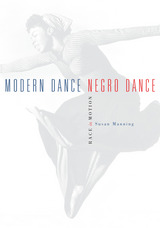 Modern Dance, Negro Dance: Race in Motion
Susan Manning
University of Minnesota Press, 2006 At the New School for Social Research in 1931, the dance critic for the New York Times announced the arrival of modern dance, touting the “serious art” of such dancers as Mary Wigman, Martha Graham, and Doris Humphrey. Across town, Hemsley Winfield and Edna Guy were staging what they called “The First Negro Dance Recital in America,” which Dance Magazine proclaimed “the beginnings of great and important choreographic creations.” Yet never have the two parallel traditions converged in the annals of American dance in the twentieth century.Modern Dance, Negro Dance is the first book to bring together these two vibrant strains of American dance in the modern era. Susan Manning traces the paths of modern dance and Negro dance from their beginnings in the Depression to their ultimate transformations in the postwar years, from Helen Tamiris’s and Ted Shawn’s suites of Negro Spirituals to concerts sponsored by the Workers Dance League, from Graham’s American Document to the debuts of Katherine Dunham and Pearl Primus, from José Limón’s 1954 work The Traitor to Merce Cunningham’s 1958 dances Summerspace and Antic Meet, to Ailey’s 1960 masterpiece Revelations.Through photographs and reviews, documentary film and oral history, Manning intricately and inextricably links the two historically divided traditions. The result is a unique view of American dance history across the divisions of black and white, radical and liberal, gay and straight, performer and spectator, and into the multiple, interdependent meanings of bodies in motion. Susan Manning is associate professor of English, theater, and performance studies at Northwestern University. She is the author of Ecstasy and the Demon: Feminism and Nationalism in the Dances of Mary Wigman, winner of the 1994 de la Torre Bueno Prize for the year’s most important contribution to dance studies.
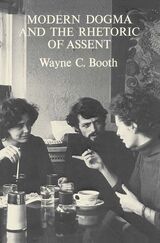 Modern Dogma and the Rhetoric of Assent
Wayne C. Booth
University of Chicago Press, 1974 When should I change my mind? What can I believe and what must I doubt? In this new "philosophy of good reasons" Wayne C. Booth exposes five dogmas of modernism that have too often inhibited efforts to answer these questions. Modern dogmas teach that "you cannot reason about values" and that "the job of thought is to doubt whatever can be doubted," and they leave those who accept them crippled in their efforts to think and talk together about whatever concerns them most. They have willed upon us a "befouled rhetorical climate" in which people are driven to two self-destructive extremes—defenders of reason becoming confined to ever narrower notions of logical or experimental proof and defenders of "values" becoming more and more irresponsible in trying to defend the heart, the gut, or the gonads.
Booth traces the consequences of modernist assumptions through a wide range of inquiry and action: in politics, art, music, literature, and in personal efforts to find "identity" or a "self." In casting doubt on systematic doubt, the author finds that the dogmas are being questioned in almost every modern discipline. Suggesting that they be replaced with a rhetoric of "systematic assent," Booth discovers a vast, neglected reservoir of "good reasons"—many of them known to classical students of rhetoric, some still to be explored. These "good reasons" are here restored to intellectual respectability, suggesting the possibility of widespread new inquiry, in all fields, into the question, "When should I change my mind?"
 Modern Enchantments: The Cultural Power of Secular Magic
Simon During
Harvard University Press, 2004 Magic, Simon During suggests, has helped shape modern culture. Devoted to this deceptively simple proposition, During's superlative work, written over the course of a decade, gets at the aesthetic questions at the very heart of the study of culture. How can the most ordinary arts--and by "magic," During means not the supernatural, but the special effects and conjurings of magic shows--affect people?
Modern Enchantments takes us deeply into the history and workings of modern secular magic, from the legerdemain of Isaac Fawkes in 1720, to the return of real magic in nineteenth-century spiritualism, to the role of magic in the emergence of the cinema. Through the course of this history, During shows how magic performances have drawn together heterogeneous audiences, contributed to the molding of cultural hierarchies, and extended cultural technologies and media at key moments, sometimes introducing spectators into rationality and helping to disseminate skepticism and publicize scientific innovation. In a more revealing argument still, Modern Enchantments shows that magic entertainments have increased the sway of fictions in our culture and helped define modern society's image of itself.
Modern Enlightenment and the Rule of Reason
John C. McCarthy
Catholic University of America Press, 2018 The essays in this volume pose the question common usage has obscured: was "the Enlightenment" truly enlightened or enlightening? Scholarly investigation has sometimes avoided the question by confining itself to historical particulars of 18th-century Euro
The Modern Epidemic: A History of Tuberculosis in Japan
William Johnston
Harvard University Press, 1995 Through a historical and comparative analysis of modern Japan's epidemic of tuberculosis, William Johnston illuminates a major but relatively unexamined facet of Japanese social and cultural history. He utilizes a broad range of sources, including medical journals and monographs, archaeological evidence, literary works, ethnographic data, and legal and government documents to reveal how this and similar epidemics have been the result of social changes that accompanied the process of modernization. Johnston also shows the ways in which modern states, private organizations, and individual citizens have responded to epidemics, and in the process reexamines the concept of the epidemic itself, showing that epidemics must be thought of not only in medical and biological terms but in political, social and cultural terms as well.
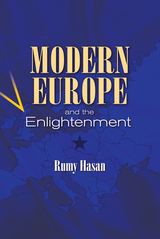 Modern Europe and the Enlightenment
Rumy Hasan
Sussex Academic Press, 2022 In June 2019, in an interview given to the Financial Times;, Russian President Vladimir Putin baldly declared that the liberal idea had outlived its purpose as the public turned against immigration, open borders, and multiculturalism. If liberalism has indeed come into conflict with the interests of the overwhelming majority of the population, then evidence should show that it is in retreat. Ipso facto, so should Enlightenment values that underpin liberal democracy. A key aim of the book is to garner evidence. Is the liberal idea characterised by Putin accurate or rather a caricature divorced from reality? Modern Europe and the Enlightenment ;explores whether the policy stance on the issues outlined above, and a host of similar topics being tackled by European governments, are consonant with Enlightenment values. The Enlightenment covered an array of issues on every aspect of life wherein reason was rigorously applied to solve problems, gain understanding, and discover facts. It was a successor to the scientific revolution. The assumption is that the Enlightenment left a profound legacy on Western Europe, which lingers till the present day. The following broad areas of Enlightenmentvalues are covered: reason, human rights, religion and secularism, freedom of expression, political and economic open-mindedness, race, and women's issues. The book examines the extent to which Enlightenment values are adhered to in various parts of modern Europe delineated into Western Europe, the progenitor of the Enlightenment; former communist countries that have joined the European Union; and former communist countries that are not in the EU. Discussion also focuses on the modern Counter-Enlightenment movement.
Modern Factor Analysis
Harry H. Harman
University of Chicago Press, 1976 This thoroughly revised third edition of Harry H. Harman's authoritative text incorporates the many new advances made in computer science and technology over the last ten years. The author gives full coverage to both theoretical and applied aspects of factor analysis from its foundations through the most advanced techniques. This highly readable text will be welcomed by researchers and students working in psychology, statistics, economics, and related disciplines.
Modern Filter Design: Active RC and switched capacitor
Mohammed S. Ghausi
The Institution of Engineering and Technology, 2003 A comprehensive tutorial on active filter design analysis and design procedures. This book covers: Basic systems classifications together with filter transmission and approximations; Operational amplifiers, including bipolar and MOS integrators; Definitions of sensitivity and statistical sensitivity measures; Continuous-time second-order active sections; Higher-order filter design; Switched capacitor filters.
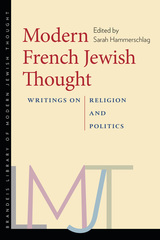 Modern French Jewish Thought: Writings on Religion and Politics
Edited by Sarah Hammerschlag
Brandeis University Press, 2018 “Modern Jewish thought” is often defined as a German affair, with interventions from Eastern European, American, and Israeli philosophers. The story of France’s development of its own schools of thought has not been substantially treated outside the French milieu. This anthology of modern French Jewish writing offers the first look at how this significant and diverse body of work developed within the historical and intellectual contexts of France and Europe. Translated into English, these documents speak to two critical axes—the first between Jewish universalism and particularism, and the second between the identification and disidentification of French Jews with France as a nation. Offering key works from Simone Weil, Vladimir Jankélévitch, Emmanuel Levinas, Albert Memmi, Hélène Cixous, Jacques Derrida, and many others, this volume is organized in roughly chronological order, to highlight the connections linking religion, politics, and history, as they coalesce around a Judaism that is unique to France.
Modern Ghost Melodramas: 'What Lies Beneath'
Michael Walker
Amsterdam University Press, 2017 The popular and critical successes of films like The Sixth Sense and the Ring film and its sequels in the late 1990s led to an impressive international explosion of scary films dealing with ghosts. This book takes a close look at a number of those films from different countries, including the United States, Japan, South Korea, Spain, and Great Britain. Making a crucial distinction between these atmospheric films and conventional horror, Michael Walker argues that they are most productively seen as ghost melodramas, which opens them up to a powerful range of analytic tools from the study of melodrama, including, crucially, psychoanalysis.
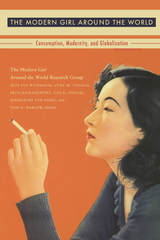 The Modern Girl Around the World: Consumption, Modernity, and Globalization
The Modern Girl Around the World Research Group
Duke University Press, 2008 During the 1920s and 1930s, in cities from Beijing to Bombay, Tokyo to Berlin, Johannesburg to New York, the Modern Girl made her sometimes flashy, always fashionable appearance in city streets and cafes, in films, advertisements, and illustrated magazines. Modern Girls wore sexy clothes and high heels; they applied lipstick and other cosmetics. Dressed in provocative attire and in hot pursuit of romantic love, Modern Girls appeared on the surface to disregard the prescribed roles of dutiful daughter, wife, and mother. Contemporaries debated whether the Modern Girl was looking for sexual, economic, or political emancipation, or whether she was little more than an image, a hollow product of the emerging global commodity culture. The contributors to this collection track the Modern Girl as she emerged as a global phenomenon in the interwar period. Scholars of history, women’s studies, literature, and cultural studies follow the Modern Girl around the world, analyzing her manifestations in Germany, Australia, China, Japan, France, India, the United States, Russia, South Africa, and Zimbabwe. Along the way, they demonstrate how the economic structures and cultural flows that shaped a particular form of modern femininity crossed national and imperial boundaries. In so doing, they highlight the gendered dynamics of interwar processes of racial formation, showing how images and ideas of the Modern Girl were used to shore up or critique nationalist and imperial agendas. A mix of collaborative and individually authored chapters, the volume concludes with commentaries by Kathy Peiss, Miriam Silverberg, and Timothy Burke. Contributors: Davarian L. Baldwin, Tani E. Barlow, Timothy Burke, Liz Conor, Madeleine Yue Dong, Anne E. Gorsuch, Ruri Ito, Kathy Peiss, Uta G. Poiger, Priti Ramamurthy, Mary Louise Roberts, Barbara Sato, Miriam Silverberg, Lynn M. Thomas, Alys Eve Weinbaum
Modern Hamlets & Soliloquies: An Expanded Edition
Mary Z. Maher
University of Iowa Press, 2003 In Modern Hamlets and Their Soliloquies (Iowa, 1992), Mary Maher examined how modern actors have chosen to perform Hamlet’s soliloquies, and why they made the choices they made, within the context of their specific productions of the play. Adding to original interviews with, among others, Derek Jacobi, David Warner, Kevin Kline, and Ben Kingsley, Modern Hamlets and Their Soliloquies: An Expanded Edition offers two new and insightful interviews, one with Kenneth Branagh, focusing on his 1997 film production of the play, and one with Simon Russell Beale, discussing his 2000-2001 run as Hamlet at the Royal National Theatre.
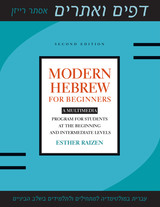 Modern Hebrew for Beginners: A Multimedia Program for Students at the Beginning and Intermediate Levels
By Esther Raizen
University of Texas Press, 2016 Modern Hebrew for Beginners—which is now revised and updated—and Modern Hebrew for Intermediate Students are the core of a multimedia program for the college-level Hebrew classroom developed at the University of Texas at Austin in the early 2000s. Within an intensive framework of instruction that assumes six weekly hours in the classroom, the program provides for two semesters of instruction, at the end of which most successful students will reach the intermediate-mid or intermediate-high levels of proficiency in speaking and reading, and some will reach advanced-low proficiency, as defined by the American Council on the Teaching of Foreign Languages (ACTFL). In addition to a variety of written exercises, the workbook includes vocabulary lists, reading selections, discussions of cultural topics, illustrations of grammar points, notes on registers, suggestions for class and individual activities, and glossaries. The workbook is complemented by a website (http://www.laits.utexas.edu/hebrew) that provides short video segments originally scripted and filmed in Israel and the United States, vocabulary flashcards with sound, interactive exercises on topics included in the workbook, sound files parallel to the reading selections in the workbook, and additional materials that enhance the learning experience. The stability of the workbook, combined with the dynamic nature of the website and the internet searches the students are directed to conduct, allows language instructors to reshape the curriculum and adapt it to the needs of their students and the goals of their programs.
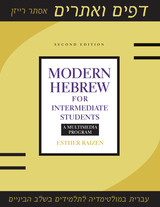 Modern Hebrew for Intermediate Students: A Multimedia Program
By Esther Raizen
University of Texas Press, 2016 Modern Hebrew for Intermediate Students—which is now revised and updated—and Modern Hebrew for Beginners are the core of a multimedia program for the college-level Hebrew classroom developed at the University of Texas at Austin in the early 2000s. Within an intensive framework of instruction that assumes six weekly hours in the classroom, the program provides for two semesters of instruction, at the end of which most successful students will reach the intermediate-mid or intermediate-high levels of proficiency in speaking and reading, and some will reach advanced-low proficiency, as defined by the American Council on the Teaching of Foreign Languages (ACTFL). In addition to a variety of written exercises, the workbook includes vocabulary lists, reading selections, discussions of cultural topics, illustrations of grammar points, notes on registers, suggestions for class and individual activities, and glossaries. The workbook is complemented by a website (http://www.laits.utexas.edu/hebrew) that provides short video segments originally scripted and filmed in Israel and the United States, vocabulary flashcards with sound, interactive exercises on topics included in the workbook, sound files parallel to the reading selections in the workbook, and additional materials that enhance the learning experience. The stability of the workbook, combined with the dynamic nature of the website and the internet searches the students are directed to conduct, allows language instructors to reshape the curriculum and adapt it to the needs of their students and the goals of their programs.
A Modern History of the Somali: Nation and State in the Horn of Africa
I. M. Lewis
Ohio University Press, 2002 This latest edition of A Modern History of the Somali brings I. M. Lewis’s definitive history up to date and shows the amazing continuity of Somali forms of social organization. Lewis’s history portrays the ingeniousness with which the Somali way of life has been adapted to all forms of modernity.
Modern Housing for America: Policy Struggles in the New Deal Era
Gail Radford
University of Chicago Press, 1996 In an era when many decry the failures of federal housing programs, this book introduces us to appealing but largely forgotten alternatives that existed when federal policies were first defined in the New Deal. Led by Catherine Bauer, supporters of the modern housing initiative argued that government should emphasize non-commercial development of imaginatively designed compact neighborhoods with extensive parks and social services. The book explores the question of how Americans might have responded to this option through case studies of experimental developments in Philadelphia and New York. While defeated during the 1930s, modern housing ideas suggest a variety of design and financial strategies that could contribute to solving the housing problems of our own time.
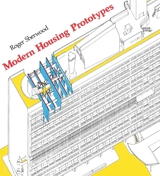 Modern Housing Prototypes
Roger Sherwood
Harvard University Press, 1978 The design of housing has commanded the attention of the greatest architects of the twentieth century. In this stunning volume, Roger Sherwood presents thirty-two notable examples of multi-family housing from many countries and four continents, selected for their importance as prototypes. Designed by such masters as Frank Lloyd Wright, Le Corbusier, Mies van der Rohe, and Alvar Aalto, they range from single-house clusters to row-houses, terrace houses, party-wall and large-courtyard housing, to urban high-rise towers and slabs.
The thirty-two buildings or housing complexes are illustrated with photographs, site plans, floor plans, elevations, and marvelous axonometric drawings. In each case Mr. Sherwood gives background information on the project, mention, factors the architect had to take into consideration (social, environmental, financial), points out creative solutions to particular problems, and comments on special features of the design. Laymen as well as professionals will find his presentations enlightening.
In the Introduction, Mr. Sherwood sets forth the basic principles of organization that apply to housing. He analyzes first the limited number of ways in which individual apartments or living units can be laid out (each type or plan lending itself to variations and permutations) and then the ways in which different units can be vertically and horizontally organized within a single building. Drawings and plans of more than eighty housing complexes in twenty countries accompany his analysis.
Mr. Sherwood offers his book in the belief that there is no excuse for shoddy architecture; that no branch of architecture is more important than the design of human habitations; and that much is to be learned from the study of significant buildings of the recent past.
Modern Hungarian Society in the Making
András Gero
Central European University Press, 1995 Illuminates the problems connected with Hungary's transition to a civil society while providing insights into the development of political culture and the rise of civil and national consequences.
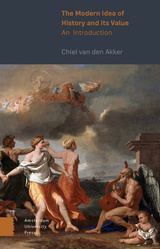 The Modern Idea of History and its Value: An Introduction
Chiel van den Akker
Amsterdam University Press, 2020 This is an original and accessible introduction to the modern idea of history and its value, and an indispensable companion to the study of history and its philosophical underpinnings.
The book answers two basic questions: What is history? And what is its value? It also shows how the answers to these questions are mutually dependent. The old view that history is the teacher of life, for instance, assumes that the past is a reservoir of examples from which moral lessons for the present can be drawn.
The subjects discussed include history as the teacher of life, the need for truth and objectivity, the moral standards of the historian, realism and the value of historical insight, historical explanation and understanding, the intelligibility of the historical process, the tragedy of history, the politics of history-writing, and the close connection between history, narrative, and the desire for justice.
These topics are discussed with the help of inspiring and influential historians and philosophers such as Thucydides, Ranke, Hegel, Nietzsche, Collingwood, Arendt, White, Hunt, and Ankersmit.
 Modern Ink: The Art of Qi Baishi
Britta Erickson, Craig Yee, and Jung Ying Tsao
University of Hawaii Press, 2014 Born into a poor farming family and coming of age during China’s century of civil strife, Qi Baishi transformed the elite brush art of China’s literati scholars into a universal art form appreciated by people of all social backgrounds. His distinctly modern art language breaks through class and cultural barriers through use of expressive “carved” brushwork, juxtaposition of vibrant colors against deep and rich ink tones, poetic economy in form and composition, and choice of emotionally resonant subject matter. For these reasons, Qi Baishi’s art is the ideal gateway through which art lovers of any class or culture can learn about the millenia-old tradition of Chinese brush painting.
A selection of Qi Baishi’s seal carving—the art of the “iron brush”—links his origins as an artisan carver to his life as China’s most celebrated calligrapher, poet and painter. The scholarly discipline calligraphy then forms the basis for our understanding Qi Baishi’s distinctive carved brushwork. In painting, landscapes and figures are two subjects that appear early in Qi Baishi’s career and provide us with an opportunity to appreciate the poetic economy of his brushwork and the universal appeal of his humanist themes. Finally, birds and flowers form the bulk of Qi Baishi’s oeuvre and a chronological selection allows us to explore the development of his unique brush, ink and color language over the span of his productive career.
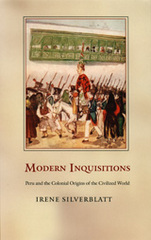 Modern Inquisitions: Peru and the Colonial Origins of the Civilized World
Irene Silverblatt
Duke University Press, 2004 Trying to understand how “civilized” people could embrace fascism, Hannah Arendt searched for a precedent in modern Western history. She found it in nineteenth-century colonialism, with its mix of bureaucratic rule, racial superiority, and appeals to rationality. Modern Inquisitions takes Arendt’s insights into the barbaric underside of Western civilization and moves them back to the sixteenth century and seventeenth, when Spanish colonialism dominated the globe. Irene Silverblatt describes how the modern world developed in tandem with Spanish imperialism and argues that key characteristics of the modern state are evident in the workings of the Inquisition. Her analysis of the tribunal’s persecution of women and men in colonial Peru illuminates modernity’s intricate “dance of bureaucracy and race.” Drawing on extensive research in Peruvian and Spanish archives, Silverblatt uses church records, evangelizing sermons, and missionary guides to explore how the emerging modern world was built, experienced, and understood by colonists, native peoples, and Inquisition officials: Early missionaries preached about world history and about the races and nations that inhabited the globe; Inquisitors, able bureaucrats, defined who was a legitimate Spaniard as they executed heretics for “reasons of state”; the “stained blood” of Indians, blacks, and descendants of Jews and Moors was said to cause their deficient character; and native Peruvians began to call themselves Indian. In dialogue with Arendt and other theorists of modernity, Silverblatt shows that the modern world’s underside is tied to its origins in colonialism and to its capacity to rationalize violence. Modern Inquisitions forces the reader to confront the idea that the Inquisition was not only a product of the modern world of the sixteenth and seventeenth centuries, but party to the creation of the civilized world we know today.
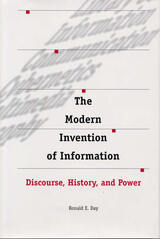 The Modern Invention of Information: Discourse, History, and Power
Ronald E. Day
Southern Illinois University Press, 2008 In The Modern Invention of Information: Discourse, History, and Power, Ronald E. Day provides a historically informed critical analysis of the concept and politics of information. Analyzing texts in Europe and the United States, his critical reading method goes beyond traditional historiographical readings of communication and information by engaging specific historical texts in terms of their attempts to construct and reshape history. After laying the groundwork and justifying his method of close reading for this study, Day examines the texts of two pre–World War II documentalists, Paul Otlet and Suzanne Briet. Through the work of Otlet and Briet, Day shows how documentation and information were associated with concepts of cultural progress. Day also discusses the social expansion of the conduit metaphor in the works of Warren Weaver and Norbert Wiener. He then shows how the work of contemporary French multimedia theorist Pierre Lévy refracts the earlier philosophical writings of Gilles Deleuze and Félix Guattari through the prism of the capitalist understanding of the “virtual society.” Turning back to the pre–World War II period, Day examines two critics of the information society: Martin Heidegger and Walter Benjamin. He explains Heidegger’s philosophical critique of the information culture’s model of language and truth as well as Benjamin’s aesthetic and historical critique of mass information and communication. Day concludes by contemplating the relation of critical theory and information, particularly in regard to the information culture’s transformation of history, historiography, and historicity into positive categories of assumed and represented knowledge.
 Modern Iraqi Arabic with MP3 Files: A Textbook, Second Edition
Yasin M. Alkalesi
Georgetown University Press, 2006 Modern Iraqi Arabic with MP3 Files is an introductory textbook—suitable for classroom or self-study—for those with no previous knowledge of Arabic or those who know Arabic but want to learn the Iraqi dialect. A detailed discussion of the consonants, vowels, and other characteristics of Iraqi phonetics—including pronunciation exercises on the CD—serves the needs of travelers, businesspeople, diplomats, archaeologists, and scholars who want to learn to speak the language quickly and efficiently. Using the dialect of middle-class Baghdad, twenty lessons are arranged in a story-like format and are based on everyday travel situations. From arriving at the airport to getting to the hotel, students will learn proper greetings and introductions; how to ask for directions, take a taxi, and tell time; and prepare for daily activities like visiting the bank, museum, post office, and restaurants. The book contains basic dialogue, grammar, vocabulary, drills, and an extensive glossary. A section of idiomatic phrases, accompanied by their cultural, religious, or proverbial explanations, offers insight into current Iraqi culture. NEW TO THIS EDITION:
• Arabic script has been added so the reader has a choice of following the Arabic writing or the transcription in the Roman alphabet.
• Four entirely new lessons cover medical care, media (radio, television, and journalism), telephone conversations, and cultural and folkloric tales.
• All audio materials from the first edition—plus new audio materials for the new lessons—are included as MP3 files on a CD bound into the book.
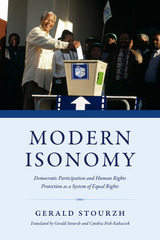 Modern Isonomy: Democratic Participation and Human Rights Protection as a System of Equal Rights
Gerald Stourzh
University of Chicago Press, 2021 Until the eighteenth century, Western societies were hierarchical ones. Since then, they have transformed themselves into societies dominated by two features: participatory democracy and the protection of human rights. In Modern Isonomy, distinguished political theorist Gerald Stourzh unites these ideas as “isonomy.”
The ideal, Stourzh argues, is a state, and indeed a world, in which individual rights, including the right to participate in politics equally, are clearly defined and possessed by all. Stourzh begins with ancient Greek thought contrasting isonomy—which is associated with the rule of the many—with “gradated societies,” oligarchies, and monarchies. He then discusses the American experiment with the development of representative democracy as well as the French Revolution, which proclaimed that all people are born and remain free and with equal rights. But progress on the creation and protection of rights for all has been uneven. Stourzh discusses specifically the equalization of slaves, peasants, women, Jews, and indigenous people. He demonstrates how deeply intertwined the protection of equal rights is with the development of democracy and gives particular attention to the development of constitutional adjudication, notably the constitutional complaint of individuals. He also discusses the international protection human rights. Timely and thought-provoking, Modern Isonomy is an erudite exploration of political and human rights.
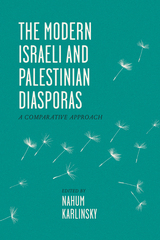 The Modern Israeli and Palestinian Diasporas: A Comparative Approach
Edited by Nahum Karlinsky
University of Texas Press, 2024 A comparative study of contemporary Israeli and Palestinian diasporas. Exilic and diasporic experience have become ubiquitous in recent decades. Jews, lacking a homeland, spread to various parts of the world, making the Jewish diaspora paradigmatic. But after the establishment of Israel in 1948, a different kind of diaspora emerged, as more than a tenth of Israeli citizens have chosen to leave their newly established state and resettle. Meanwhile, about half of all Palestinians, including Palestinian citizens of Israel, now reside in exile, predominantly as a result of the ongoing Palestinian-Israeli conflict. Recognizing that Israeli-Jewish and Palestinian-Arab societies coexist and are engaged in constant relations, Nahum Karlinsky has assembled an impressive array of contributors to explore these diasporas alongside one another and in dialogue with other diasporic communities. The collected essays cover such topics as Palestinian exiles and diasporas, the demographics of today’s Israeli diaspora, immigrant enterprises, transnationalism and development, the unique place of Israeli Jews in the United States, the literature of Palestinian transnationals, and the emergence of Berlin as a queer Israeli-Jewish immigrant enclave.The Modern Israeli and Palestinian Diasporas challenges and reimagines the very notion of a homeland.
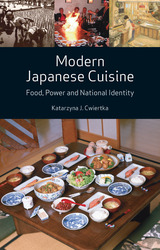 Modern Japanese Cuisine: Food, Power and National Identity
Katarzyna J. Cwiertka
Reaktion Books, 2015 Over the past two decades, the popularity of Japanese food in the West has increased immeasurably—a major contribution to the evolution of Western eating habits. But Japanese cuisine itself has changed significantly since pre-modern times, and the food we eat at trendy Japanese restaurants, from tempura to sashimi, is vastly different from earlier Japanese fare. Modern Japanese Cuisine examines the origins of Japanese food from the late nineteenth century to unabashedly adulterated American favorites like today’s California roll.
Katarzyna J. Cwiertka demonstrates that key shifts in the Japanese diet were, in many cases, a consequence of modern imperialism. Exploring reforms in military catering and home cooking, wartime food management and the rise of urban gastronomy, Cwiertka shows how Japan’s numerous regional cuisines were eventually replaced by a set of foods and practices with which the majority of Japanese today ardently identify.
The result of over a decade of research, Modern Japanese Cuisine is a fascinating look at the historical roots of some of the world’s best cooking and will provide appetizing reading for scholars of Japanese culture and foodies alike.
Modern Japanese Literary Studies
Seth Jacobowitz and Jonathan E. Abel, co-editors
University of Michigan Press, 2026 Explores new directions in modern Japanese literature
The Modern Jewish Canon: A Journey Through Language and Culture
Ruth R. Wisse
University of Chicago Press, 2003 What makes a great Jewish book? In fact, what makes a book "Jewish" in the first place? Ruth R. Wisse eloquently fields these questions in The Modern Jewish Canon, her compassionate, insightful guide to the finest Jewish literature of the twentieth century. From Isaac Babel to Isaac Bashevis Singer, Elie Wiesel to Cynthia Ozick, Wisse's The Modern Jewish Canon is a book that every student of Jewish literature, and every reader of great fiction, will enjoy.
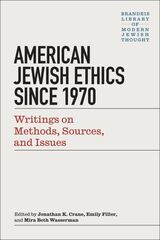 Modern Jewish Ethics since 1970: Writings on Methods, Sources, and Issues
Edited by Jonathan K. Crane, Emily A. Filler, and Mira Beth Wasserman
Brandeis University Press, 2025 The field of Jewish ethics is never far from foundational questions about how to do Jewish ethics – and these questions are inseparable from other kinds of scholarly conclusions or prescriptions. In part because Jewish ethics is inherently deliberative, the volume is organized not by standalone essays but by small sets of curated conversations between scholars from different time periods, academic subfields, and religious commitments (or lack thereof).
These deliberate juxtapositions are to encourage scholars and students to develop similar meta-ethical analyses on Jewish ethics, broadly construed. Jewish ethics is not just a set of propositions or principles; nor can it be reduced to a single trajectory of thought or abstracted as an elaborate system of ideas. Jewish ethics is the field of study that engages Jewish texts, ideas, history, and experience in conversations about values and virtues, justice and good judgment, human relations and responsibilities. This volume presents some of those conversations to spark many more.
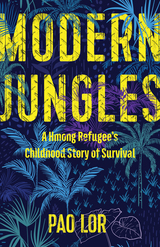 Modern Jungles: A Hmong Refugee’s Childhood Story of Survival
Pao Lor
Wisconsin Historical Society Press, 2021 As a five-year-old boy, Pao Lor joined thousands of Hmong who fled for their lives through the jungles of Laos in the aftermath of war. After a difficult and perilous journey that neither of his parents survived, he reached the safety of Thailand, but the young refugee boy’s challenges were only just beginning.
Born in a small farming village, Pao was destined to be a Hmong clan leader, wedding negotiator, or shaman. But the course of his life changed dramatically in the 1970s, when the Hmong faced persecution for their role in helping US forces fighting communism in the region. After more than two years in Thai refugee camps, Pao and his surviving family members boarded the belly of an “iron eagle” bound for the United States, where he pictured a new life of comfort and happiness. Instead, Pao found himself navigating a frightening and unfamiliar world, adjusting to a string of new schools and living situations while struggling to fulfill the hopes his parents had once held for his future. Now in Modern Jungles, Pao Lor shares his inspiring coming-of-age tale about perseverance, grit, and hope.
Included are discussion questions for use by book clubs, in classrooms, or around the dinner table.
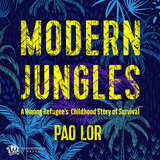 Modern Jungles: A Hmong Refugee's Childhood Story of Survival
Pao Lor
Wisconsin Historical Society Press, 2023 As a five-year-old boy, Pao Lor joined thousands of Hmong who fled for their lives through the jungles of Laos in the aftermath of war. After a difficult and perilous journey that neither of his parents survived, he reached the safety of Thailand, but the young refugee boy’s challenges were only just beginning.
Born in a small farming village, Pao was destined to be a Hmong clan leader, wedding negotiator, or shaman. But the course of his life changed dramatically in the 1970s, when the Hmong faced persecution for their role in helping US forces fighting communism in the region. After more than two years in Thai refugee camps, Pao and his surviving family members boarded the belly of an “iron eagle” bound for the United States, where he pictured a new life of comfort and happiness. Instead, Pao found himself navigating a frightening and unfamiliar world, adjusting to a string of new schools and living situations while struggling to fulfill the hopes his parents had once held for his future. Now in Modern Jungles, Pao Lor shares his inspiring coming-of-age tale about perseverance, grit, and hope.
Included are discussion questions for use by book clubs, in classrooms, or around the dinner table.
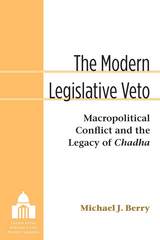 The Modern Legislative Veto: Macropolitical Conflict and the Legacy of Chadha
Michael J. Berry
University of Michigan Press, 2016 In The Modern Legislative Veto, Michael J. Berry uses a multimethod research design, incorporating quantitative and qualitative analyses, to examine the ways that Congress has used the legislative veto over the past 80 years. This parliamentary maneuver, which delegates power to the executive but grants the legislature a measure of control over the implementation of the law, raises troubling questions about the fundamental principle of separation of governmental powers.
Berry argues that, since the U.S. Supreme Court declared the legislative veto unconstitutional in Immigration and Naturalization Service (INS) v. Chadha (1983), Congress has strategically modified its use of the veto to give more power to appropriations committees. Using an original dataset of legislative veto enactments, Berry finds that Congress has actually increased its use of this oversight mechanism since Chadha, especially over defense and foreign policy issues. Democratic and Republican presidents alike have fought back by vetoing legislation containing legislative vetoes and by using signing statements with greater frequency to challenge the legislative veto’s constitutionality. A complementary analysis of state-level use of the legislative veto finds variation in oversight powers granted to state legislatures, but similar struggles between the legislature and the executive.
This ongoing battle over the legislative veto points to broader efforts by legislative and executive actors to control policy, efforts that continually negotiate how the democratic republic established by the Constitution actually operates in practice.
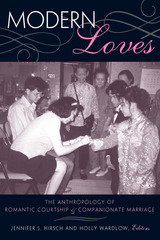 Modern Loves: The Anthropology of Romantic Courtship and Companionate Marriage
Jennifer S. Hirsch and Holly Wardlow, Editors
University of Michigan Press, 2006 How are love, marriage, and desire changing? This collection confronts that question, examining how global cultural flows, changing gender relations, specific economic structures, and state policies are reshaping intimate life around the world. Grounded in cutting edge feminist anthropological theory, these essays discuss how women and men craft courtship, intimacy, and marriage around the world, situating intimate relations in their respective social and economic contexts and exposing the dynamics that are shared cross-culturally, as well as those characteristics that are specific to each site. In this first comparative ethnographic look at the global transformation toward marital ideals characterized by emotional intimacy, companionship, and mutual choice—discussed here as "companionate marriage"— Modern Loves asks how this shift is occurring and explores the factors that promote and hinder it, just who is pushing for these more companionate relationships, and what advantages men and women see in modern love. The contributors analyze the intricate negotiations surrounding love, marriage, and sex in Mexico, India, Papua New Guinea, Brazil, Pakistan, Nigeria, Singapore, and Hong Kong and among Latino youth in East Los Angeles. Modern Loves presents the new global approach to kinship studies, examining both the microlevel practices that constitute and bind relationships and the macrolevel forces that shape the landscape of love. Contributors: Margaret E. Bentley, Selina Ching Chan, Pamela I. Erickson, Jessica Gregg, Jennifer Higgins, Jennifer S. Hirsch, Wynne Maggi, Constance A. Nathanson, Gayatri Reddy, Daniel Jordan Smith, and Holly Wardlow
Jennifer S. Hirsch is Associate Professor in the Department of Sociomedical Sciences, Mailman School of Public Health, Columbia University. Holly Wardlow is Assistant Professor of Anthropology at the University of Toronto.
"What‘s love got to do with it? Hirsch and Wardlow answer this question by demonstrating the relevance—indeed, centrality—of the ideologies and practices surrounding romantic love and companionate marriage to the study of social transformation more broadly. The essays compiled in this volume explore the material, structural, and demographic underpinnings of the global shift in marital ideals while also tracing some of the sources of this marital shift in mass media, missionization, and the spread of individualism. The contributors of the chapters provide ethnographically rich examples of the ways in which people living in different societies interpret and act upon these global forces and images in sometimes overlapping and sometimes varying ways. This volume is an important and thoughtful contribution to the study of emotion, gender, kinship, and social change." —Laura M. Ahearn, Department of Anthropology, Rutgers University
"With its rich descriptions of the nuances in romantic love and its lucid analysis of the political economy of conjugal relations, this book will be widely read and loved by anthropologists as well as the concerned public."
—Yunxiang Yan, Department of Anthropology, UCLA
"Modern Loves offers an overview of current scholarship on love in the context of sexual relationships cross-culturally, and provides a view of the complexity of varied aspects of emotion, social structure, and social change in contemporary sexual relationships. It clearly makes the case for a political economic understanding of the emergence of ideologies of love, marriage, and courtship as part of expanding global economies."
—Linda-Anne Rebhun, Department of Anthropology, Yale University
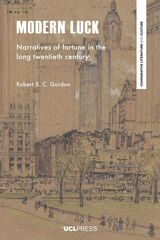 Modern Luck: Narratives of Fortune in the Long Twentieth Century
Robert S. C. Gordon
University College London, 2023 An exploration of luck in modernity, modern imagination, and modern stories.
Beliefs, superstitions, and tales about luck are present across all human cultures. Humans are perennially fascinated by luck and by its association with happiness and danger, uncertainty and aspiration. Yet it remains an elusive, ungraspable idea, one that slips and slides over time: all cultures reimagine what luck is and how to tame it at different stages in their history, and our own era is no exception to the rule.
Modern Luck sets out to explore the enigma of luck’s presence in modernity, examining the hybrid forms it has taken on in the modern imagination, and in particular in the field of modern stories. Analyzing a rich and unusually eclectic range of narratives taken from literature, film, music, television, and theatre, from Dostoevsky to Philip K. Dick, Pinocchio to Cimino, Curtiz to Kieslowski, it lays out first the usages and meanings of the language of luck, and then the key figures, patterns, and motifs that govern the stories told about it, from the late nineteenth century to the present day.
 Modern Melbourne: City and Site of Nature and Culture
Rod Giblett
Intellect Books, 2020 Melbourne, founded in 1835 among marshes and beside a sluggish stream, grew from wetlands into a world-class modern city. Drawing on a wide range of historical, literary, and artistic sources, this book explores the cultural and environmental history of the city and its site. Tracing the city from its swampy beginnings in a squatter’s settlement nestled in the marshy delta of the Yarra and Maribyrnong Rivers, Rod Giblett illuminates Melbourne through its visible structures and the invisible history of its site.
It places Melbourne within an international context by comparing and contrasting it to other cities built on or beside wetlands, including London, New York, Paris, Los Angeles, and Toronto. Further, it is the first book to apply the work of European thinkers and writers on modernity and the modern city—such as Walter Benjamin and Peter Sloterdijk—to an analysis of Melbourne. Giblett considers the intertwining of nature and culture, people and place, and cities and wetlands in this bioregional and ecocultural analysis. Placing the city in its proper bioregional and international contexts, Modern Melbourne provides a rich historical analysis of the cultural capital of Australia.
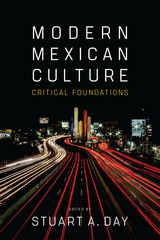 Modern Mexican Culture: Critical Foundations
Edited by Stuart A. Day
University of Arizona Press, 2017 Diego Rivera’s mural Sueño de una tarde dominical en la Alameda Central is a fascinating critique of high society and wealthy elites. It also offers a multitude of other stories that intersect in a web of historical memory. The massive mural, the histories it depicts, and even its physical journey after a devastating earthquake, hold answers to many of the questions readers might ask about Mexico. It also demonstrates how cultural artifacts explain the world around us and expose intersections and entanglements of specific power dynamics.
Modern Mexican Culture offers an enriching and deep investigation of key ideas and events in Mexico through an examination of art and history. Experts in Mexican cultural and literary studies cover the 1968 Tlatelolco student massacre, the figure of the charro (cowboy), the construct of the postrevolutionary teacher, the class-correlated construct of gente decente, a borderlands response to the rhetoric of dominance, and the “democratic transition” in late twentieth-century Mexico. Each essay is a rich reading experience, providing teachers and students alike with a deep and well-contextualized sense of Mexican life, culture, and politics.
Each chapter provides a historical grounding of its topic, followed by a multifaceted analysis through various artistic representations that provide a more complex view of Mexico. Chapters are accompanied by lists of readily available murals, political cartoons, plays, pamphlets, posters, films, poems, novels, and other cultural products. Modern Mexican Culture demonstrates the power of art and artists to question, explain, and influence the world around us.
Contributors:
Rafael Acosta Morales
Jacqueline E. Bixler
Marta Caminero-Santangelo
Debra A. Castillo
Christopher Conway
David S. Dalton
Stuart A. Day
Emily Hind
Robert McKee Irwin
Ryan Long
Dana A. Meredith
Magalí Rabasa
Luis Alberto Rodríguez Cortés
Fernando Fabio Sánchez
Ignacio M. Sánchez Prado
Analisa Taylor
Oswaldo Zavala
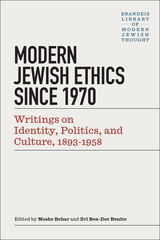 Modern Middle Eastern Jewish Thought: Writings on Identity, Politics, and Culture, 1893–1958
Edited by Moshe Behar and Zvi Ben-Dor Benite
Brandeis University Press, 2013 This volume opens the canon of modern Jewish thought to the all too often overlooked writings of Jews from the Arab East, from the close of the nineteenth century to the middle of the twentieth. Whether they identified as Sephardim, Mizrahim, anticolonialists, or Zionists, these thinkers engaged the challenges and transformations of Middle Eastern Jewry in this decisive period. Moshe Behar and Zvi Ben-Dor Benite present Jewish culture and politics situated within overlapping Arabic, Islamic, and colonial contexts. The editors invite the reader to reconsider contemporary evocations of Levantine, Mizrahi, and Arab Jewish identities against the backdrop of writings by earlier Middle Eastern Jewish intellectuals who critically assessed or contested the implications of Western presence and Western Jewish presence in the Middle East; religion and secularization; and the rise of nationalism, communism, and Zionism, as well as the State of Israel.
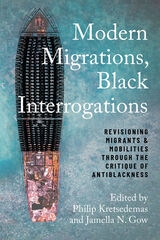 Modern Migrations, Black Interrogations: Revisioning Migrants and Mobilities through the Critique of Antiblackness
Edited by Philip Kretsedemas and Jamella N. Gow
Temple University Press, 2024 Modern Migrations, Black Interrogations uses reflections on the Black experience to consider the “unasked question of blackness” in modern migration and movement. The editors and contributors use the lens of Black Studies to show how migration—compelled by force or suggestion, from the transatlantic African slave trade to the Great Migration and the current refugee crisis—has been structured to reinforce white supremacy.
Focusing on antiblackness in immigration and examining restrictions on freedom of movement and on settling alike, chapters address how Black im/mobility operates and how it can be distinguished from that of the migrant and the colonial settler, as well as from the transgressive mobilities of Indigenous populations. Looking at blackness, borders and border practices, and displacement, Modern Migrations, Black Interrogations investigates racialized boundaries that determine immigration policy, citizenship, legality, and inclusion. Additional chapters analyze communities, such as the Haitian diaspora in Miami, antiblackness in the context of Australian migration, and explore literary representations of justice, slavery and Black feminist consciousness.
Modern Migrations, Black Interrogations uses (anti)blackness to rethink the way we understand borders, immigrant identity, barriers to integration, and the dynamics of migrant exclusion, while also providing an understanding of “otherness” for Black populations across nationalities.
Contributors: Maya Hislop, P. Khalil Saucier, Hyacinth Udah, Paula von Gleich, Tryon P. Woods, and the editors
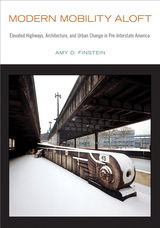 Modern Mobility Aloft: Elevated Highways, Architecture, and Urban Change in Pre-Interstate America
Amy D. Finstein
Temple University Press, 2020 In the first half of the twentieth century, urban elevated highways were much more than utilitarian infrastructure, lifting traffic above the streets; they were statements of civic pride, asserting boldly modern visions for a city’s architecture, economy, and transportation network. Yet three of the most ambitious projects, launched in Chicago, New York, and Boston in the spirit of utopian models by architects such as Le Corbusier and Hugh Ferriss, ultimately fell short of their ideals. Modern Mobility Aloft is the first study to focus on pre-Interstate urban elevated highways within American architectural and urban history. Amy Finstein traces the idealistic roots of these superstructures, their contrasting realities once built, their impacts on successive development patterns, and the recent challenges they have posed to contemporary urban designers. Filled with more than 100 historic photographs and illustrations of beaux arts and art deco architecture, Modern Mobility Aloft provides a critical understanding of urban landscapes, transportation, and technological change as cities moved into the modern era.
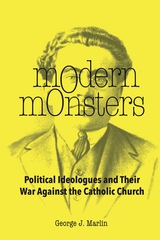 Modern Monsters: Political Ideologues and Their War Against the Catholic Church
George J. Marlin
St. Augustine's Press, 2025 There is no mystery shrouding the toppling pillars of Western civilization and human culture, and George Marlin can no longer watch. Like many readers who are seeing the same destructive forces roaming unchecked and wish to confront them, Marlin has with keenness composed a kind of response that contextualizes the problem and its historical masters, these so-called post-modern "monsters." Among these are Martin Luther, Machiavelli, Hobbes, Hegel, Comte, Mussolini, Hitler, and Marx. His treatment of Antonio Gramsci's "anti-Church" is particularly jolting and redeems the underrepresented efforts of two Catholic popes to defend human dignity. Marlin is notorious for making sense sting a bit in the reader who has been too complacent, and encouraging those who wish to fortify and steel the intuitions of the intellect.
Modern Monsters exposes the lack of coherency and bitterness (the only 'natural' attributes of ideology) and claims that ideological thinking in the post-modern era is waging open war with the foundations of Judeo-Christian society. Its chief target is the Catholic Church. Marlin rightly calls out the irony in ideologues, as theirs is simply another kind of idolatry and "secular religion."
This concise review of the fatal attraction to ideologies and their applications takes the reader quickly to the heart of the matter and introduces him to a plethora of voices that ought to be heard instead. Indeed, one of the delights of this book is the host of true intellects he calls upon to make his point. In that sense, despite his emphasis on a society in ruin, Marlin's lasting effect is leaving us in the company of those who model what it is to live as worthy heirs of the Western tradition.
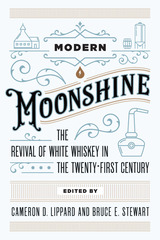 Modern Moonshine: The Revival of White Whiskey in the Twenty-First Century
Cameron D. Lippard
West Virginia University Press, 2019 The craft of making moonshine—an unaged white whiskey, often made and consumed outside legal parameters—nearly went extinct in the late twentieth century as law enforcement cracked down on illicit producers, and cheaper, lawful alcohol became readily available. Yet the twenty-first century has witnessed a resurgence of artisanal distilling, as both connoisseurs and those reconnecting with their heritage have created a vibrant new culture of moonshine. While not limited to Appalachia, moonshine is often entwined with the region in popular understandings. The first interdisciplinary examination of the legal moonshine industry, Modern Moonshine probes the causes and impact of the so-called moonshine revival. What does the moonshine revival tell us about our national culture? How does it shape the image of Appalachia and rural America? Focusing mostly on southern Appalachia, the book’s eleven essays chronicle such popular figures as Popcorn Sutton and explore how and why distillers promote their product as “traditional” and “authentic.” This edited collection draws from scholars across the disciplines of anthropology, history, geography, and sociology to make sense of the legal, social, and historical shifts behind contemporary production and consumption of moonshine, and offers a fresh perspective on an enduring topic of Appalachian myth and reality.
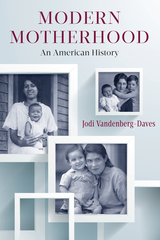 Modern Motherhood: An American History
Vandenberg-Daves, Jodi
Rutgers University Press, 2014 How did mothers transform from parents of secondary importance in the colonies to having their multiple and complex roles connected to the well-being of the nation? In the first comprehensive history of motherhood in the United States, Jodi Vandenberg-Daves explores how tensions over the maternal role have been part and parcel of the development of American society.
Modern Motherhood travels through redefinitions of motherhood over time, as mothers encountered a growing cadre of medical and psychological experts, increased their labor force participation, gained the right to vote, agitated for more resources to perform their maternal duties, and demonstrated their vast resourcefulness in providing for and nurturing their families. Navigating rigid gender role prescriptions and a crescendo of mother-blame by the middle of the twentieth century, mothers continued to innovate new ways to combine labor force participation and domestic responsibilities. By the 1960s, they were poised to challenge male expertise, in areas ranging from welfare and abortion rights to childbirth practices and the confinement of women to maternal roles. In the twenty-first century, Americans continue to struggle with maternal contradictions, as we pit an idealized role for mothers in children’s development against the social and economic realities of privatized caregiving, a paltry public policy structure, and mothers’ extensive employment outside the home.
Building on decades of scholarship and spanning a wide range of topics, Vandenberg-Daves tells an inclusive tale of African American, Native American, Asian American, working class, rural, and other hitherto ignored families, exploring sources ranging from sermons, medical advice, diaries and letters to the speeches of impassioned maternal activists. Chapter topics include: inventing a new role for mothers; contradictions of moral motherhood; medicalizing the maternal body; science, expertise, and advice to mothers; uplifting and controlling mothers; modern reproduction; mothers’ resilience and adaptation; the middle-class wife and mother; mother power and mother angst; and mothers’ changing lives and continuous caregiving. While the discussion has been part of all eras of American history, the discussion of the meaning of modern motherhood is far from over.
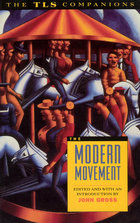 The Modern Movement: A TLS Companion
Edited by John Gross
University of Chicago Press, 1993 For the past ninety years the Times Literary Supplement has scrutinized, dissected, applauded, and occasionally disparaged the work of the twentieth century's leading writers. It has taken a major role in the making—and breaking—of literary reputations.
In The Modern Movement, John Gross has assembled an entertaining selection of 155 articles and reviews about and by the great figures of literary modernism. The focus is on twelve key modernist writers: W. B. Yeats, Ezra Pound, D. H. Lawrence, James Joyce, T. S. Eliot, Wyndham Lewis, Virginia Wolf, W. H. Auden, Marcel Proust, Thomas Mann, Rainer Maria Rilke, and Franz Kafka. Another section gathers ten reviews and articles by Eliot and Woolf on then current writers and writing. In addition, there are more general articles on literary trends and issues by such prominent writers and critics as Anthony Burgess, Wallace Stevens, Anthony Powell, and Erich Heller.
This fascinating array reveals early opinions on what have come to be the classics of modernist literature. Readers will be treated to astute and often surprising opinions of their favorite writers on the most important literature of this century.
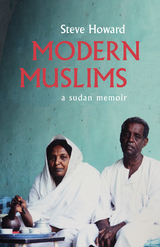 Modern Muslims: A Sudan Memoir
Steve Howard
Ohio University Press, 2016 Steve Howard departed for the Sudan in the early 1980s as an American graduate student beginning a three-year journey in which he would join and live with the Republican Brotherhood, the Sufi Muslim group led by the visionary Mahmoud Mohamed Taha. Taha was a religious intellectual who participated in the early days of Sudan’s anticolonial struggle, but quickly turned his movement into a religious reform effort based on his radical reading of the Qur’an. He was executed in 1985 for apostasy. Decades after returning to the life of an academic in the United States, Howard brings us this memoir of his time with the Republican Brotherhood, who advocated, among other things, equality for women. Modern Muslims describes Howard’s path to learning not only about Islam and Sufism but also about Sudan’s history and culture. When the Brotherhood was thrust into confrontation with Sudan’s then-president Jaafar Nimeiry, Howard had a front-line perspective on the difficult choices communities make as they try to reform and practice their faith freely. As well as a story of personal transformation, the book offers an insider’s perspective on a modernist nonviolent Islamic movement that thrived and was brutally suppressed. An important book for our times, Modern Muslims yields significant insights for our understanding of modern Islam, African history, and contemporary geopolitics.
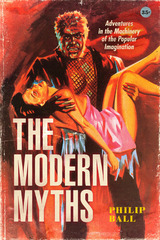 The Modern Myths: Adventures in the Machinery of the Popular Imagination
Philip Ball
University of Chicago Press, 2021 With The Modern Myths, brilliant science communicator Philip Ball spins a new yarn. From novels and comic books to B-movies, it is an epic exploration of literature, new media and technology, the nature of storytelling, and the making and meaning of our most important tales.
Myths are usually seen as stories from the depths of time—fun and fantastical, but no longer believed by anyone. Yet, as Philip Ball shows, we are still writing them—and still living them—today. From Robinson Crusoe and Frankenstein to Batman, many stories written in the past few centuries are commonly, perhaps glibly, called “modern myths.” But Ball argues that we should take that idea seriously. Our stories of Dracula, Dr. Jekyll and Mr. Hyde, and Sherlock Holmes are doing the kind of cultural work that the ancient myths once did. Through the medium of narratives that all of us know in their basic outline and which have no clear moral or resolution, these modern myths explore some of our deepest fears, dreams, and anxieties. We keep returning to these tales, reinventing them endlessly for new uses. But what are they really about, and why do we need them? What myths are still taking shape today? And what makes a story become a modern myth?
In The Modern Myths, Ball takes us on a wide-ranging tour of our collective imagination, asking what some of its most popular stories reveal about the nature of being human in the modern age.
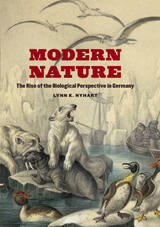 Modern Nature: The Rise of the Biological Perspective in Germany
Lynn K. Nyhart
University of Chicago Press, 2009 In Modern Nature,Lynn K. Nyhart traces the emergence of a “biological perspective” in late nineteenth-century Germany that emphasized the dynamic relationships among organisms, and between organisms and their environment. Examining this approach to nature in light of Germany’s fraught urbanization and industrialization, as well the opportunities presented by new and reforming institutions, she argues that rapid social change drew attention to the role of social relationships and physical environments in rendering a society—and nature—whole, functional, and healthy. This quintessentially modern view of nature, Nyhart shows, stood in stark contrast to the standard naturalist’s orientation toward classification. While this new biological perspective would eventually grow into the academic discipline of ecology, Modern Nature locates its roots outside the universities, in a vibrant realm of populist natural history inhabited by taxidermists and zookeepers, schoolteachers and museum reformers, amateur enthusiasts and nature protectionists. Probing the populist beginnings of animal ecology in Germany, Nyhart unites the history of popular natural history with that of elite science in a new way. In doing so, she brings to light a major orientation in late nineteenth-century biology that has long been eclipsed by Darwinism.
 Modern Noise, Fluid Genres: Popular Music in Indonesia, 1997–2001
Jeremy Wallach
University of Wisconsin Press, 2008 What happens to “local” sound when globalization exposes musicians and audiences to cultural influences from around the world? Jeremy Wallach explores this question as it plays out in the eclectic, evolving world of Indonesian music after the fall of the repressive Soeharto regime. Against the backdrop of Indonesia’s chaotic and momentous transition to democracy, Wallach takes us to recording studios, music stores, concert venues, university campuses, video shoots, and urban neighborhoods. Integrating ground-level ethnographic research with insights drawn from contemporary cultural theory, he shows that access to globally circulating music and technologies has neither extinguished nor homogenized local music-making in Indonesia. Instead, it has provided young Indonesians with creative possibilities for exploring their identity in a diverse nation undergoing dramatic changes in an increasingly interconnected world. Ultimately, he finds, the unofficial, multicultural nationalism of Indonesian popular music provides a viable alternative to the religious, ethnic, regional, and class-based extremism that continues to threaten unity and democracy in that country.
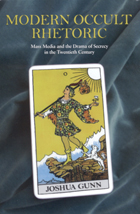 Modern Occult Rhetoric: Mass Media and the Drama of Secrecy in the Twentieth Century
Joshua Gunn
University of Alabama Press, 2005 A broadly interdisciplinary study of the pervasive secrecy in America cultural, political, and religious discourse.
The occult has traditionally been understood as the study of secrets of the practice of mysticism or magic. This book broadens our understanding of the occult by treating it as a rhetorical phenomenon tied to language and symbols and more central to American culture than is commonly assumed.
Joshua Gunn approaches the occult as an idiom, examining the ways in which acts of textual criticism and interpretation are occultic in nature, as evident in practices as diverse as academic scholarship, Freemasonry, and television production. Gunn probes, for instance, the ways in which jargon employed by various social and professional groups creates barriers and fosters secrecy. From the theory wars of cultural studies to the Satanic Panic that swept the national mass media in the late 1980s and early 1990s, Gunn shows how the paradox of a hidden, buried, or secret meaning that cannot be expressed in language appears time and time again in Western culture.
These recurrent patterns, Gunn argues, arise from a generalized, popular anxiety about language and its limitations. Ultimately, Modern Occult Rhetoric demonstrates the indissoluble relationship between language, secrecy, and publicity, and the centrality of suspicion in our daily lives.
 Modern Occultism in Late Imperial Russia
Julia Mannherz
Northern Illinois University Press, 2012 Modern Occultism in Late Imperial Russia traces the history of occult thought and practice from its origins in private salons to its popularity in turn-of-the-century mass culture. In lucid prose, Julia Mannherz examines the ferocious public debates of the 1870s on higher dimensional mathematics and the workings of séance phenomena, discusses the world of cheap instruction manuals and popular occult journals, and looks at haunted houses, which brought together the rural settings and the urban masses that obsessed over them. In addition, Mannherz looks at reactions of Russian Orthodox theologians to the occult.
In spite of its prominence, the role of the occult in turn-of-the-century Russian culture has been largely ignored, if not actively written out of histories of the modern state. For specialists and students of Russian history, culture, and science, as well as those generally interested in the occult, Mannherz’s fascinating study remedies this gap and returns the occult to its rightful place in the popular imagination of late nineteenth- and early twentieth-century Russian society.
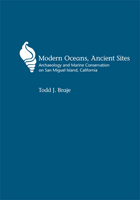 Modern Oceans, Ancient Sites: Archaeology and Marine Conservation on San Miguel Island, California
Todd J Braje
University of Utah Press, 2010 There is a growing consensus in the scientific realm that the world’s oceans are reaching a state of crisis as commercial fisheries are more widely overexploited and many coastal ecosystems are approaching collapse. A number of scientists and resource managers have argued that a successful understanding of the current crisis can be found through the development of a deeper historical perspective of the ecology of coastal ecosystems and the impacts that humans have had on them. In Modern Oceans, Ancient Sites: Archaeology and Marine Conservation on San Miguel Island, California, Todd Braje works to provide just such an understanding, bridging the divide between the archaeological record and the modern crisis.
Using archaeological, paleoecological, and historical datasets from California’s Channel Islands and the larger Santa Barbara Channel region, Braje explores the evolving relationship between humans and fragile island ecosystems. San Miguel Island, westernmost of the Northern Channel Islands, holds archaeological records spanning 10,000 years, providing a backdrop for the examination of changes in human demography, subsistence, and technology over time. Braje’s systematic excavations of five well-preserved sitesranging from a 9500-year-old shell midden to a 150-year-old abalone fishing camptranslate into a long-term case study that enables a unique assessment of the human impacts on marine ecosystems.
Modern Oceans, Ancient Sites: Archaeology and Marine Conservation on San Miguel Island, California helps to provide a more complete picture of human sea and land use through time, offering vital information for understanding, interpreting, and managing the past, present, and future of both the Channel Islands and global marine ecosystems. Braje demonstrates the relevance of archaeological, historical, and paleoecological data to extant environmental problems and concludes with tangible and practical recommendations for managing modern marine ecosystems and fisheries.
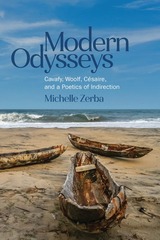 Modern Odysseys: Cavafy, Woolf, Césaire, and a Poetics of Indirection
Michelle Zerba
Ohio State University Press, 2021 Michelle Zerba’s Modern Odysseys explores three major writers in global modernism from the Mediterranean, Anglo-European Britain, and the Caribbean whose groundbreaking literary works have never been studied together before. Using language as an instrument of revolution and social change, C. P. Cavafy, Virginia Woolf, and Aimé Césaire gave expression to the forms of human experience we now associate with modernity: homoeroticism, transsexuality, and racial consciousness. More specifically, Zerba argues that Odyssean tropes of diffusion, isolation, passage, and return give form to works by these writers but in ways that invite us to reconsider and revise the basic premises of reception studies and intellectual history. Combining close readings of literary texts with the study of interviews, essays, diaries, and letters, Zerba advances a revisionary account of how to approach relationships between antiquity and modernity. Instead of frontal encounters with the Odyssey, Cavafy, Woolf, and Césaire indirectly—but no less significantly—engage with Homer’s epic poem. In demonstrating how such encounters operate, Modern Odysseys explores issues of race and sexuality that connect antiquity with the modern period.
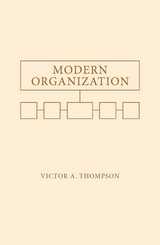 Modern Organization
Victor A. Thompson
University of Alabama Press, 1961 Modern Organization is a classic text of organization development that addresses the complications that occur in power structures within which workers with specialized skills are managed by superiors without those skills. Thompson is interested in exploring and righting the creative tensions between knowledge and power, demonstrating that within hierarchical structures, the wielders of power often lack not only the technical know-how of their employees but charisma and other attributes that would win the loyalty and confidence of those employees. Thompson coins the phrase “bureaupathic” behavior to describe the rise in a perceived need for regulations and rituals that result from the insecurity in these structures. This behavior only confounds working life and efficiency. Technical specialization is rapidly advancing, while cultural definitions of authority are not. Authority must be redefined in order to make allowances for its limitations. What once made a leader, namely charisma, may no longer suffice.
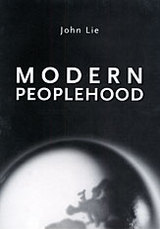 Modern Peoplehood
John Lie
Harvard University Press, 2004 In modern states, John Lie argues, ideas of race, ethnicity, and nationality can be subsumed under the rubric of "peoplehood." He argues indeed, that the modern state has created the idea of peoplehood. That is, the seemingly primitive, atavistic feelings of belonging associated with ethnic, racial, and national identity are largely formed by the state. Not only is the state responsible for the development and nurturing of these feelings, it is also responsible for racial and ethnic conflict, even genocide. When citizens think of themselves in terms of their peoplehood identity, they will naturally locate the cause of all troubles--from neighborhood squabbles to wars--in racial, ethnic, or national attitudes and conflicts.
Far from being transhistorical and transcultural phenomena, race, ethnicity, and nation, Lie argues, are modern notions--modernity here associated with the rise of the modern state, the industrial economy, and Enlightenment ideas.
Modern Personal Radio Systems
R.C.V. Macario
The Institution of Engineering and Technology, 1996 This topical book builds upon an earlier IEE text Personal & mobile radio systems, by the same editor, which set out the fundamental issues in a discipline that appeared to have global expansion potential. That potential has now become a reality, and something more than a new edition of the previous book was needed to bring it up to date. This book is completely new, drawing on the experience and the many intensive studies that have been concentrated in this field in the past five years.
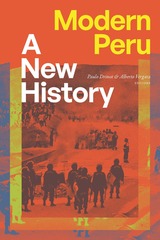 Modern Peru: A New History
Paulo Drinot and Alberto Vergara, editors
Duke University Press, 2025 Modern Peru: A New History offers a sweeping account of Peru’s history from the wars of independence to the present day. Delving into a past characterized by instability and a series of interrupted national projects, the contributors examine the legacies of Tupac Amaru’s 1780s rebellion and the intense ideological debates between conservatives and liberals about the newly independent nation. They analyze the mid-nineteenth-century guano state, the catastrophic defeat in the War of the Pacific, and the establishment of an exclusionary oligarchic state—the "Aristocratic Republic"—based on a diverse export economy. Outlining Peru’s twentieth-century transition from a rural, agrarian society to a primarily urban one, the contributors explore the 1968 coup and its unfulfilled promise of top-down social transformation, which was followed by years of democratic rule marked by internal armed conflict and economic mismanagement. This period culminated in the authoritarian neoliberal revolution of Alberto Fujimori, whose economic and political legacies in the new century resulted in a booming economy, now in abeyance, and a deeply dysfunctional democracy. Accessible and wide-ranging, Modern Peru provides a singularly panoramic perspective on Peru’s history.
Contributors. Eduardo Dargent, Paulo Drinot, Cynthia McClintock, José Luis Rénique, Natalia Sobrevilla Perea, Alberto Vergara, Charles Walker
Modern Philology, volume 119 number 2 (November 2021)
The University of Chicago Press
University of Chicago Press Journals, 2021 This is volume 119 issue 2 of Modern Philology. Modern Philology (MP) publishes original work in literary criticism, literary history, and archival scholarship. The journal welcomes contributions on literature in all modern world languages and encourages productive comparisons of texts and traditions from any part of the world. It accepts essays that focus on earlier periods as well as the present. MP also aims to publish timely review articles, reviews of recent books, and research on archival documents.
Modern Philology, volume 119 number 3 (February 2022)
The University of Chicago Press
University of Chicago Press Journals, 2022 This is volume 119 issue 3 of Modern Philology. Modern Philology (MP) publishes original work in literary criticism, literary history, and archival scholarship. The journal welcomes contributions on literature in all modern world languages and encourages productive comparisons of texts and traditions from any part of the world. It accepts essays that focus on earlier periods as well as the present. MP also aims to publish timely review articles, reviews of recent books, and research on archival documents.
Modern Philology, volume 119 number 4 (May 2022)
The University of Chicago Press
University of Chicago Press Journals, 2022 This is volume 119 issue 4 of Modern Philology. Modern Philology (MP) publishes original work in literary criticism, literary history, and archival scholarship. The journal welcomes contributions on literature in all modern world languages and encourages productive comparisons of texts and traditions from any part of the world. It accepts essays that focus on earlier periods as well as the present. MP also aims to publish timely review articles, reviews of recent books, and research on archival documents.
Modern Philology, volume 120 number 1 (August 2022)
The University of Chicago Press
University of Chicago Press Journals, 2022 This is volume 120 issue 1 of Modern Philology. Modern Philology (MP) publishes original work in literary criticism, literary history, and archival scholarship. The journal welcomes contributions on literature in all modern world languages and encourages productive comparisons of texts and traditions from any part of the world. It accepts essays that focus on earlier periods as well as the present. MP also aims to publish timely review articles, reviews of recent books, and research on archival documents.
Modern Philology, volume 120 number 2 (November 2022)
The University of Chicago Press
University of Chicago Press Journals, 2022 This is volume 120 issue 2 of Modern Philology. Modern Philology (MP) publishes original work in literary criticism, literary history, and archival scholarship. The journal welcomes contributions on literature in all modern world languages and encourages productive comparisons of texts and traditions from any part of the world. It accepts essays that focus on earlier periods as well as the present. MP also aims to publish timely review articles, reviews of recent books, and research on archival documents.
Modern Philology, volume 120 number 3 (February 2023)
The University of Chicago Press
University of Chicago Press Journals, 2023 This is volume 120 issue 3 of Modern Philology. Modern Philology (MP) publishes original work in literary criticism, literary history, and archival scholarship. The journal welcomes contributions on literature in all modern world languages and encourages productive comparisons of texts and traditions from any part of the world. It accepts essays that focus on earlier periods as well as the present. MP also aims to publish timely review articles, reviews of recent books, and research on archival documents.
Modern Philology, volume 120 number 4 (May 2023)
The University of Chicago Press
University of Chicago Press Journals, 2023 This is volume 120 issue 4 of Modern Philology. Modern Philology (MP) publishes original work in literary criticism, literary history, and archival scholarship. The journal welcomes contributions on literature in all modern world languages and encourages productive comparisons of texts and traditions from any part of the world. It accepts essays that focus on earlier periods as well as the present. MP also aims to publish timely review articles, reviews of recent books, and research on archival documents.
Modern Philology, volume 121 number 1 (August 2023)
The University of Chicago Press
University of Chicago Press Journals, 2023 This is volume 121 issue 1 of Modern Philology. Modern Philology (MP) publishes original work in literary criticism, literary history, and archival scholarship. The journal welcomes contributions on literature in all modern world languages and encourages productive comparisons of texts and traditions from any part of the world. It accepts essays that focus on earlier periods as well as the present. MP also aims to publish timely review articles, reviews of recent books, and research on archival documents.
Modern Philology, volume 121 number 2 (November 2023)
The University of Chicago Press
University of Chicago Press Journals, 2023 This is volume 121 issue 2 of Modern Philology. Modern Philology (MP) publishes original work in literary criticism, literary history, and archival scholarship. The journal welcomes contributions on literature in all modern world languages and encourages productive comparisons of texts and traditions from any part of the world. It accepts essays that focus on earlier periods as well as the present. MP also aims to publish timely review articles, reviews of recent books, and research on archival documents.
Modern Philology, volume 121 number 3 (February 2024)
The University of Chicago Press
University of Chicago Press Journals, 2024 This is volume 121 issue 3 of Modern Philology. Modern Philology (MP) publishes original work in literary criticism, literary history, and archival scholarship. The journal welcomes contributions on literature in all modern world languages and encourages productive comparisons of texts and traditions from any part of the world. It accepts essays that focus on earlier periods as well as the present. MP also aims to publish timely review articles, reviews of recent books, and research on archival documents.
Modern Philology, volume 121 number 4 (May 2024)
The University of Chicago Press
University of Chicago Press Journals, 2024 This is volume 121 issue 4 of Modern Philology. Modern Philology (MP) publishes original work in literary criticism, literary history, and archival scholarship. The journal welcomes contributions on literature in all modern world languages and encourages productive comparisons of texts and traditions from any part of the world. It accepts essays that focus on earlier periods as well as the present. MP also aims to publish timely review articles, reviews of recent books, and research on archival documents.
Modern Philology, volume 122 number 1 (August 2024)
The University of Chicago Press
University of Chicago Press Journals, 2024 This is volume 122 issue 1 of Modern Philology. Modern Philology (MP) publishes original work in literary criticism, literary history, and archival scholarship. The journal welcomes contributions on literature in all modern world languages and encourages productive comparisons of texts and traditions from any part of the world. It accepts essays that focus on earlier periods as well as the present. MP also aims to publish timely review articles, reviews of recent books, and research on archival documents.
Modern Philology, volume 122 number 2 (November 2024)
The University of Chicago Press
University of Chicago Press Journals, 2024 This is volume 122 issue 2 of Modern Philology. Modern Philology (MP) publishes original work in literary criticism, literary history, and archival scholarship. The journal welcomes contributions on literature in all modern world languages and encourages productive comparisons of texts and traditions from any part of the world. It accepts essays that focus on earlier periods as well as the present. MP also aims to publish timely review articles, reviews of recent books, and research on archival documents.
Modern Philology, volume 122 number 3 (February 2025)
The University of Chicago Press
University of Chicago Press Journals, 2025 This is volume 122 issue 3 of Modern Philology. Modern Philology (MP) publishes original work in literary criticism, literary history, and archival scholarship. The journal welcomes contributions on literature in all modern world languages and encourages productive comparisons of texts and traditions from any part of the world. It accepts essays that focus on earlier periods as well as the present. MP also aims to publish timely review articles, reviews of recent books, and research on archival documents.
Modern Philology, volume 122 number 4 (May 2025)
The University of Chicago Press
University of Chicago Press Journals, 2025 This is volume 122 issue 4 of Modern Philology. Modern Philology (MP) publishes original work in literary criticism, literary history, and archival scholarship. The journal welcomes contributions on literature in all modern world languages and encourages productive comparisons of texts and traditions from any part of the world. It accepts essays that focus on earlier periods as well as the present. MP also aims to publish timely review articles, reviews of recent books, and research on archival documents.
Modern Philology, volume 123 number 1 (August 2025)
The University of Chicago Press
University of Chicago Press Journals, 2025 This is volume 123 issue 1 of Modern Philology. Modern Philology (MP) publishes original work in literary criticism, literary history, and archival scholarship. The journal welcomes contributions on literature in all modern world languages and encourages productive comparisons of texts and traditions from any part of the world. It accepts essays that focus on earlier periods as well as the present. MP also aims to publish timely review articles, reviews of recent books, and research on archival documents.
Modern Philosophies of the Will
Reiner Schürmann
Diaphanes, 2020 Through the lenses of Kant, Nietzsche, and Heidegger, this edited volume traces the development of the relation between the will and the law as self-given. Modern Philosophies of the Will explores a variety of topics including: the ontological turn in philosophy of the will; the will’s playful character and the problem of teleology; the will as principle of morality as discussed by Kant, of lifeforms as discussed by Nietzsche, and of technology as discussed by Heidegger; the formal identity of legislation; and transgression of the law. This volume traces three strategies in the development of the philosophy of will from Kant to Heidegger, through rationality and irrationality of the will, the ontological turn, and law.
 Modern Physics and Ancient Faith
Stephen M. Barr
University of Notre Dame Press, 2003
A considerable amount of public debate and media print has been devoted to the “war between science and religion.” In his accessible and eminently readable new book, Stephen M. Barr demonstrates that what is really at war with religion is not science itself, but a philosophy called scientific materialism. Modern Physics and Ancient Faith argues that the great discoveries of modern physics are more compatible with the central teachings of Christianity and Judaism about God, the cosmos, and the human soul than with the atheistic viewpoint of scientific materialism.
Scientific materialism grew out of scientific discoveries made from the time of Copernicus up to the beginning of the twentieth century. These discoveries led many thoughtful people to the conclusion that the universe has no cause or purpose, that the human race is an accidental by-product of blind material forces, and that the ultimate reality is matter itself. Barr contends that the revolutionary discoveries of the twentieth century run counter to this line of thought. He uses five of these discoveries—the Big Bang theory, unified field theories, anthropic coincidences, Gödel’s Theorem in mathematics, and quantum theory—to cast serious doubt on the materialist’s view of the world and to give greater credence to Judeo-Christian claims about God and the universe.
Written in clear language, Barr’s rigorous and fair text explains modern physics to general readers without oversimplification. Using the insights of modern physics, he reveals that modern scientific discoveries and religious faith are deeply consonant. Anyone with an interest in science and religion will find Modern Physics and Ancient Faith invaluable.
“A modern physicist who writes with extraordinary clarity and verve, and is familiar with the intellectual arguments long used by the ancient faiths, Stephen Barr gives a brilliant defense of the integrity of science in the teeth of its most powerful modern bias, by telling the exciting story of the rise, complacency, and fall of scientific materialism. As his story crackles along, and just at the point of reaching really difficult concepts, he has a knack for inventing illustrations that make one's inner light bulbs flash again and again.” —Michael Novak, Winner of the 1994 Templeton Prize for Progress in Religion
“Barr has produced a brilliant and authoritative defense of Biblical faith in the light of contemporary science. He perceives a serious conflict, not between modern physics and ancient faith, but between religion and materialism. I know of no other book that makes the case against materialism so lucidly, honestly, and deftly.” —Owen Gingerich, Harvard-Smithsonian Center for Astrophysics
“Written from the viewpoint of an accomplished physicist, this book is an invaluable contribution to the growing interest in the relationship between science and religion. The arguments are rigorously logical and the documentation is excellent.” —Robert Scherrer, Ohio State University
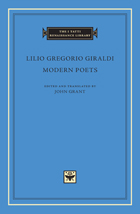 Modern Poets
Lilio Gregorio Giraldi
Harvard University Press, 2011 Born in Ferrara, Lilio Gregorio Giraldi (1479–1552) received an excellent classical education at the world-famous humanist schools of his native city. On his various travels in search of a patron, he visited Naples, frequenting the Academy there; Mirandola, where he entered the service of Gianfrancesco Pico; Milan, where he studied Greek under Demetrius Chalcondyles; and Rome, where he enjoyed the munificence of Pope Leo X. Following the sack of Rome in 1527, Giraldi eventually made his way back to Ferrara, where he spent the last years of his life.
Giraldi was the author of many works on literary history, mythology, and antiquities. Among the most famous are his dialogues, translated here into English for the first time. Modeled on Cicero’s Brutus, the work discusses hundreds of contemporary neo-Latin and vernacular poets, giving a panoramic view of European poetry in the late fifteenth and early sixteenth century from Great Britain to Greece, but concentrating above all on Italy.
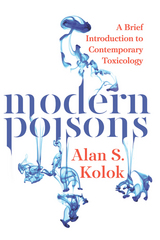 Modern Poisons: A Brief Introduction to Contemporary Toxicology
Alan S. Kolok
Island Press, 2014 Traditional toxicology textbooks tend to be doorstops: tomes filled with important but seemingly abstract chemistry and biology. Meanwhile, magazine and journal articles introduce students to timely topics such as BPA and endocrine disruption or the carcinogenic effects of pesticides, but don’t provide the fundamentals needed to understand the science of toxicity. Written by a longtime professor of toxicology, Modern Poisons bridges this gap.
This accessible book explains basic principles in plain language while illuminating the most important issues in contemporary toxicology. Kolok begins by exploring age-old precepts of the field such as the dose-response relationship and the concept, first introduced by Ambroise Paré in the sixteenth century, that a chemical’s particular action depends on its inherent chemical nature. The author goes on to show exactly how chemicals enter the body and elicit their toxic effect, as well as the body’s methods of defense.
With the fundamentals established, Kolok digs into advances in toxicology, tracing the field’s development from World War II to the present day. The book examines both technical discoveries and their impacts on public policy. Highlights include studies of endocrine-disrupting chemicals in toiletries and prescriptions, the emerging science on prions, and our growing understanding of epigenetics.
Readers learn not only how toxic exposure affects people and wildlife, but about the long-term social and environmental consequences of our chemicals. Whether studying toxicology itself, public health, or environmental science, readers will develop a core understanding of—and curiosity about—this fast-changing field.
Modern Power Electronic Devices: Physics, applications, and reliability
Francesco Iannuzzo
The Institution of Engineering and Technology, 2020 Power devices are key to modern power systems, performing essential functions such as inverting and changing voltages, buffering, and switching. The increasing complexity of power systems, with distributed renewable generation on the rise, is posing challenges to these devices. In recent years, several new devices have emerged, including wide bandgap devices, each with advantages and weaknesses depending on circumstances and applications.
 Modern Proverbs and Proverbial Sayings
Bartlett Jere Whiting
Harvard University Press, 1989 This new collection by our greatest connoisseur of proverbs is the first and only comprehensive compilation of proverbial sayings, British and American, that are actually in current use in this century—old ones still part of common parlance, others recently coined, and familiar ones with new twists. It will be of inestimable value to students of the proverb, of more than passing interest to folklorists and cultural historians, and to the casual browser and language buff a delight.
Whiting has, in the course of fifty years' reading, culled these proverbial expressions from a huge range of sources, some seven thousand books as well as newspapers and magazines. Since proverbs are by nature popular, he has drawn heavily on popular writing such as detective stories and science fiction; with certain notable exceptions (James Joyce among them), major authors, writers of belles-lettres, have proved less fertile terrain than the purveyors of fiction for the masses. No one else has combed a comparable cross-section of the popular literature of this century in search of proverbial matter—and no one now could, given the ephemeral nature of those books. Moreover, only a scholar of Whiting's expertise could confidently identify the proverbial expressions therein, with all their inversions, variations, and parodies.
The volume is patterned after its predecessor, Whiting's Early American Proverbs and Proverbial Phrases. The sayings are alphabetized by key words, usually the first important noun or verb, and there are cross-references to other items of similar gist. The body of each entry consists of quotations, with their sources, in chronological order. For those who may wish to trace the prior history of a proverb or phrase, citations are provided to earlier collections and reference works in which it appears.
Modern Public Finance
John M. Quigley
Harvard University Press, 1994 In Modern Public Finance, senior scholars in the field review and synthesize recent theoretical developments in important areas--optimal taxation, public sector dynamics, distribution theory, and club theory, to name a few--which challenge us to understand and improve public policy. Each chapter highlights original research by a recognized leader in the field, relates this work to cumulative developments, and frames important questions for further study.
Modern Radar Detection Theory
Antonio De Maio
The Institution of Engineering and Technology, 2016 Recently, various algorithms for radar signal detection that rely heavily upon complicated processing and/or antenna architectures have been the subject of much interest. These techniques owe their genesis to several factors. One is revolutionary technological advances in high-speed signal processing hardware and digital array radar technology. Another is the stress on requirements often imposed by defence applications in areas such as airborne early warning and homeland security.
Modern Radar for Automotive Applications
Zhengyu Peng
The Institution of Engineering and Technology, 2022 Radar is a key technology in the safety system of a modern vehicle. Automotive radars are the critical sensors in advanced driver-assistance systems, which are used in adaptive cruise control, collision avoidance, blind spot detection, lane change assistance, and parking assistance.
Modern Russian I
Clayton L. Dawson, Vesna Cicin-Sain, and Assya A. Humesky
Georgetown University Press Stressing the fundamental structural features of contemporary spoken Russian, these eighteen audio-lingual lessons primarily employ imitation and repetition exercises. Also included are reading selections, a pronunciation guide, a Russian-English vocabulary, and an index—all keyed to the first-year studies of a two-year speaking proficiency program.
 Modern Sampling Methods: Theory, Experimentation, Application
Palmer Johnson
University of Minnesota Press, 1959
Modern Sampling Methods: Theory, Experimentation, Application was first published in 1959. Minnesota Archive Editions uses digital technology to make long-unavailable books once again accessible, and are published unaltered from the original University of Minnesota Press editions.Of both theoretical and practical use to statisticians and research workers using sampling techniques, this book describes five new multi-stage sampling models. The models are described, compared, and evaluated through a skillfully designed experiment. The number of stages in all five models is the same; the manner in which they differ is in the particular sampling technique applied at each of the several stages. Recommendations are given on the choice of the most suitable model for a given practical situation. A mathematical appendix presents two lemmas that are useful for derivation of sampling formulas in multi-stage sampling.
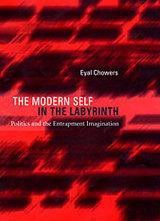 The Modern Self in the Labyrinth: Politics and the Entrapment Imagination
Eyal Chowers
Harvard University Press, 2004 This book explores the distinct historical-political imagination of the self in the twentieth century and advances two arguments. First, it suggests that we should read the history of modern political philosophy afresh in light of a theme that emerges in the late eighteenth century: the rift between self and social institutions. Second, it argues that this rift was reformulated in the twentieth century in a manner that contrasts with the optimism of nineteenth-century thinkers regarding its resolution. It proposes a new political imagination of the twentieth century found in the works of Weber, Freud, and Foucault, and characterizes it as one of "entrapment."
Eyal Chowers shows how thinkers working within diverse theoretical frameworks and fields nevertheless converge in depicting a self that has lost its capacity to control or transform social institutions. He argues that Weber, Freud, and Foucault helped shape the distinctive thought and culture of the past century by portraying a dehumanized and distorted self marked by sameness. This new political imagination proposes coping with modernity through the recovery, integration, and assertion of the self, rather than by mastering and refashioning collective institutions.
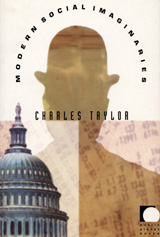 Modern Social Imaginaries
Charles Taylor
Duke University Press, 2004 One of the most influential philosophers in the English-speaking world, Charles Taylor is internationally renowned for his contributions to political and moral theory, particularly to debates about identity formation, multiculturalism, secularism, and modernity. In Modern Social Imaginaries, Taylor continues his recent reflections on the theme of multiple modernities. To account for the differences among modernities, Taylor sets out his idea of the social imaginary, a broad understanding of the way a given people imagine their collective social life. Retelling the history of Western modernity, Taylor traces the development of a distinct social imaginary. Animated by the idea of a moral order based on the mutual benefit of equal participants, the Western social imaginary is characterized by three key cultural forms—the economy, the public sphere, and self-governance. Taylor’s account of these cultural formations provides a fresh perspective on how to read the specifics of Western modernity: how we came to imagine society primarily as an economy for exchanging goods and services to promote mutual prosperity, how we began to imagine the public sphere as a metaphorical place for deliberation and discussion among strangers on issues of mutual concern, and how we invented the idea of a self-governing people capable of secular “founding” acts without recourse to transcendent principles. Accessible in length and style, Modern Social Imaginaries offers a clear and concise framework for understanding the structure of modern life in the West and the different forms modernity has taken around the world.
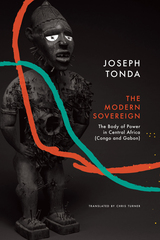 Modern Sovereign: The Body of Power in Central Africa (Congo and Gabon)
Joseph Tonda
Seagull Books, 2020 The “Modern Sovereign,” a notion indebted both to Hobbes’s Leviathan and Marx’s conception of capital, refers to the power that governed the African multitudes from the earliest colonial days to the post-colonial era. It is an internalized power, responsible for the multiform violence exerted on bodies and imaginations. Joseph Tonda contends that in Central Africa—and particularly in Gabon and the Congo—the body is at the heart of political, religious, sexual, economic, and ritual power. This, he argues, is confirmed by the strong link between corporeal and political matters, and by the ostentatious display of bodies in African life. The body of power asserts itself as both matter and spirit, and it incorporates the seductive force of money, commodities, sex, and knowledge. Tonda’s incisive analysis reveals how this sovereign power is a social relation, historically constituted by the violence of the African cultural Imaginary and the realities of State, Market, and Church. It is to be understood, he asserts, through a generalized theory economic, political, and religious fetishism. By introducing this crucial critical voice from contemporary Africa into the English language, The Modern Sovereign makes a significant contribution to field of anthropology, political science, and African studies.
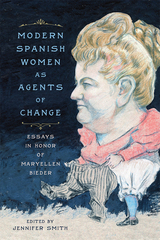 Modern Spanish Women as Agents of Change: Essays in Honor of Maryellen Bieder
Smith, Jennifer
Bucknell University Press, 2019 This volume brings together cutting-edge research on modern Spanish women as writers, activists, and embodiments of cultural change, and simultaneously honors Maryellen Bieder’s invaluable scholarly contribution to the field. The essays are innovative in their consideration of lesser-known women writers, focus on women as political activists, and use of post-colonialism, queer theory, and spatial theory to examine the period from the Enlightenment until World War II. The contributors study women as agents and representations of social change in a variety of genres, including short stories, novels, plays, personal letters, and journalistic pieces. Canonical authors such as Emilia Pardo Bazán, Leopoldo Alas “Clarín,” and Carmen de Burgos are considered alongside lesser known writers and activists such as María Rosa Gálvez, Sofía Tartilán, and Caterina Albert i Paradís. The critical analyses are situated within their specific socio-historical context, and shed new light on nineteenth- and early twentieth-century Spanish literature, history, and culture.
Published by Bucknell University Press. Distributed worldwide by Rutgers University Press.
Modern Swedish Prose in Translation
Karl Erik Lagerlof, Editor
University of Minnesota Press, 1979
Modern Swedish Prose in Translation was first published in 1979. Minnesota Archive Editions uses digital technology to make long-unavailable books once again accessible, and are published unaltered from the original University of Minnesota Press editions.
These excerpts from Swedish prose works - mostly novels - reflect major shifts in mood and style in the 25 years since 1950. Editor Karl Erik Lagerlof traces cultural and political developments in Sweden from the post-World War II era, when writers felt themselves in a world devoid of political meaning and rejected realism as a literary mode, down to the intensely political years of the Vietnam era. The selections in this anthology range from the anti-ideological works of the postwar years to recent documentary methods influenced by Marxism, structuralism, and a renewed political consciousness.
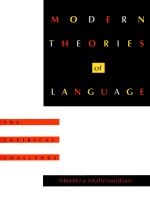 Modern Theories of Language: The Empirical Challenge
Mortéza Mahmoudian
Duke University Press, 1993 In a controversial look at the study of linguistics today, Mortéza Mahmoudian examines twentieth-century theories of language in light of empirical evidence. In the past, linguists have had to choose between a general linguistic theory aimed at universal explanatory power and specific, limited linguistic models. Arguing that at various levels of linguistic analysis different theories offer more or less explanatory power, Mahmoudian makes a persuasive case for an integrated approach incorporating the strengths of both methods.
The author begins with the identification of principles which, despite differences in terminology, are held in common by most twentieth-century linguists. He shows the implications, merits, and shortcomings of the major schools of linguistic thought, as well as the techniques one can use in gathering data. Ranging over a wide variety of international linguistic thinking, Mahmoudian takes up the question of what he calls experimentation, or the extent to which the application of certain linguistic theories have validity in constucting models.
Simultaneously a survey of the current state of linguistic theory and a case for the necessity of empirical verification in linguistics, Modern Theories of Language builds a bridge across the gulf between many long-standing conflicts in the theory of language. Accessibly written, this provocative work predicts future theorerical and epistemological developments and will prove essential reading for students and scholars of linguistics, as well as specialists in cognitive psychology and Romance languages.
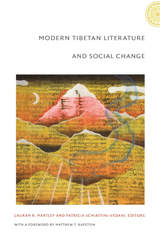 Modern Tibetan Literature and Social Change
Lauran R. Hartley and Patricia Schiaffini-Vedani, eds.
Duke University Press, 2008 Modern Tibetan Literature and Social Change is the first systematic and detailed overview of modern Tibetan literature, which has burgeoned only in the last thirty years. This comprehensive collection brings together fourteen pioneering scholars in the nascent field of Tibetan literary studies, including authors who are active in the Tibetan literary world itself. These scholars examine the literary output of Tibetan authors writing in Tibetan, Chinese, and English, both in Tibet and in the Tibetan diaspora. The contributors explore the circumstances that led to the development of modern Tibetan literature, its continuities and breaks with classical Tibetan literary forms, and the ways that writers use forms such as magical realism, satire, and humor to negotiate literary freedom within the People’s Republic of China. They provide crucial information about Tibetan writers’ lives in China and abroad, the social and political contexts in which they write, and the literary merits of their oeuvre. Along with deep social, cultural, and political analysis, this wealth of information clarifies the complex circumstances that Tibetan writers face in the PRC and the diaspora. The contributors consider not only poetry, short stories, and novels but also other forms of cultural production—such as literary magazines, films, and Web sites—that provide a public forum in the Tibetan areas of the PRC, where censorship and restrictions on public gatherings remain the norm. Modern Tibetan Literature and Social Change includes a previously unavailable list of modern Tibetan works translated into Western languages and a comprehensive English-language index of names, subjects, and terms. Contributors: Pema Bhum, Howard Y. F. Choy, Yangdon Dhondup, Lauran R. Hartley, Hortsang Jigme, Matthew T. Kapstein, Nancy G. Lin, Lara Maconi, Françoise Robin, Patricia Schiaffini-Vedani, Ronald D. Schwartz, Tsering Shakya, Sangye Gyatso (aka Gangzhün), Steven J. Venturino,
Riika Virtanen
 Modern Tragedy and the End of Worlds: Lillo, Leopardi, Ibsen
Leonardo F. Lisi
Northwestern University Press, 2026 Studying three tragic authors to explore the meanings—and consequences—of modernity
The emergence of a distinctly modern form of tragedy is often associated with the introduction of middle-class characters and settings to high drama during the early eighteenth century. What has not been explored previously, however, is how such tragedy uses modernity’s social circumstances to stage metaphysical conditions that are destructive to human worlds. Leonardo F. Lisi pursues this argument by focusing on three central yet distinct figures in the history of modern thought and theater: eighteenth-century English dramatist George Lillo, early nineteenth-century Italian poet Giacomo Leopardi, and late nineteenth-century Norwegian iconoclast Henrik Ibsen. Modern Tragedy and the End of Worlds: Lillo, Leopardi, Ibsen shows that their works share a critical theme: the impossibility of sustaining human forms of meaning in the face of modern materialism, finance, and reason. Viewed in this light, Lisi argues that modern tragedy requires thinking together the incommensurable scales of human existence and the inhuman processes on which it rests—a task that continues to have profound relevance for imagining the end of worlds in the Anthropocene.
Modern Trends in Islam
H. A. R. Gibb
University of Chicago Press, 1974 Based on a series of lectures delivered at the University of Chicago 1945, Modern Trends in Islam analyzes the evolving religious beliefs of practicing Muslims during the author’s own time. It was one of the first texts in English to treat Islam not as an unchanging set of beliefs and practices but as a dynamic religion whose meaning is continually redefined by its adherents. In six chapters, this concise book covers Islam’s confrontation with Western Modernism in the first half of the twentieth century in realms of law, society, and religious thought. In doing so, these essays anticipate many of the tensions between progressivism and fundamentalism that have characterized Islamic life, thought, and politics over the last seventy years.
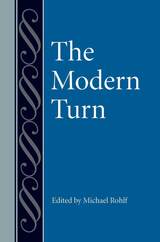 The Modern Turn
Michael Rohlf
Catholic University of America Press, 2017 What is the modern turn in philosophy? In other words, what are the features that make modern philosophy distinctively “modern” in contrast with the pre-modern philosophy from which it emerged – for example, medieval scholasticism, Renaissance philosophy, and ancient Greek and Roman thought? How did the modern turn in philosophy transpire? That is, what did specific philosophers contribute that shaped the distinctive character of modern philosophy? The twelve essays in this volume seek to address these questions, and in doing so they exemplify and contribute to a rich debate about the nature and value of modern philosophy.
This volume approaches the modern turn not as an event that occurred all at once, but rather as a series of shifts in different areas of philosophy at different times. The essays are arranged broadly in chronological order of the topics they treat. Among the themes that recur most often in these essays are, first, that modern philosophy is characteristically preoccupied with questions about foundations and, second, that it ultimately prioritizes practice over theory. But the virtues of this text is in presenting a wide range or perspectives on modern philosophy – what constitutes it as modern, when it arose, and what its shortcomings may be.
A Modern Ukranian Grammar
George S. N. Luckyj and Jaroslav B. Rudnyckyj
University of Minnesota Press, 1949 A Modern Ukranian Grammar was first published in 1949. Minnesota Archive Editions uses digital technology to make long-unavailable books once again accessible, and are published unaltered from the original University of Minnesota Press editions.
Modern Utopian Fictions from H. G. Wells to Iris Murdoch
Peter Edgerly Firchow
Catholic University of America Press, 2007 This book aims to put the fiction back into utopian fictions. While tracing the development of fiction in the writing of modern utopias, especially in Britain, it seeks to demonstrate in specific ways how those utopias have become increasingly literary--possibly as a reaction not only against the "social scientification" of modern utopias but also in reaction against the modern attempt to institute "utopia" in reality, notably in the former Soviet Union but also in consumerist, late-twentieth-century America.
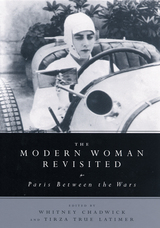 The Modern Woman Revisited: Paris Between the Wars
Chadwick, Whitney
Rutgers University Press, 2003 The contributions of female artists to the development of literary and artistic modernism in early twentieth century France remain poorly understood. It was during this period that a so-called “modern woman” began occupying urban spaces associated with the development of modern art and modernism’s struggles to define subjectivities and sexualities. Whereas most studies of modernism’s formal innovations and its encouragement of artistic autonomy neglect or omit necessary discussions of gender, race, class, and sexual orientation, the contributors of The Modern Woman Revisited inject these perspectives into the discussion. Between the two World Wars, Paris served as the setting for unparalleled freedom for expatriate as well as native-born French women, who enjoyed unprecedented access to education and opportunities to participate in public artistic and intellectual life. Many of these women made lasting contributions in art and literature. Some of the artists discussed include Colette, Tamara de Lempicka, Sonia Delaunay, Djuna Barnes, Augusta Savage, and Lee Miller.
Inthis book, an internationally recognized roster of art historians, literary critics, and other scholars offers a nuanced portrait of what it meant to be a modern woman during this decisive period of modernism’s development. Individual essays explore the challenges faced by women in the early decades of the twentieth century, as well as the strategies these women deployed to create their art and to build meaningful lives and careers. The introduction underscores the importance of the contributors’ efforts to engender larger questions about modernity, sexuality, race, and class.
 Modernising Protestantism: A Cultural History of the Dutch Reformed, 1650-1750
Jo Spaans
Amsterdam University Press, 2025 This book provides a thorough revision of the image of the public church under the Dutch Republic after the Peace of Westphalia and before the onset of the ‘high Enlightenment’. Traditional church history considers the seventeenth and eighteenth centuries a period of decline. Yet this was the high tide of Dutch expansion when Dutch society was extremely rich. In its five universities and its highly literate population internationally acknowledged scholarship, arts and sciences flowered. Did really nothing of all this vitality rub off on the public religion?
Rather than the traditional static image of a rather joyless and ossified orthodoxy, an exploration of the interface between the Reformed church and Dutch society at large reveals a religious culture that had much to offer to various audiences, in the sphere of knowledge production as well as in the form of spiritual solace and everything in between.
Modernism - Dada - Postmodernism
Richard Sheppard
Northwestern University Press, 1999 This new collection updates, integrates, and contextualizes Richard Sheppard's essays on the historical avant-garde. Sheppard examines responses of modernist writers, artists, and philosophers to a changed sense of reality and human nature. With its combination of previously published and new essays and its perspective on the theoretical avant-garde-modernism debate in the U.S., the volume provides the specialist and the general reader insight into European scholarly discourse on this hotly debated subject.
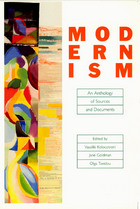 Modernism: An Anthology of Sources and Documents
Edited by Vassiliki Kolocotroni, Jane Goldman, and Olga Taxidou
University of Chicago Press, 1998 From Bauhaus to Dada, from Virginia Woolf to John Dos Passos, the Modernist movement revolutionized the way we perceive, portray, and participate in the world. This landmark anthology is a comprehensive documentary resource for the study of Modernism, bringing together more than 150 key essays, articles, manifestos, and other writings of the political and aesthetic avant-garde between 1840 and 1950.
By favoring short extracts over lengthier originals, the editors cover a remarkable range and variety of modernist thinking. Included are not just the familiar high modernist landmarks such as Gustave Flaubert, Ezra Pound, and James Joyce, but also a diverse representation from the sciences, politics, philosophy, and the arts, including Charles Darwin, Thorstein Veblen, W. E. B. Du Bois, Isadora Duncan, John Reed, Adolf Hitler, and Sergei Eisenstein. Another welcome feature is a substantial selection of hard-to-find manifestos from the many modernist movements, among them futurism, cubism, Dada, surrealism, and anarchism.
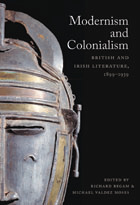 Modernism and Colonialism: British and Irish Literature, 1899–1939
Richard Begam and Michael Valdez Moses, eds.
Duke University Press, 2007 This collection of essays by renowned literary scholars offers a sustained and comprehensive account of the relation of British and Irish literary modernism to colonialism. Bringing postcolonial studies into dialogue with modernist studies, the contributors move beyond depoliticized appreciations of modernist aesthetics as well as the dismissal of literary modernism as irredeemably complicit in the evils of colonialism. They demonstrate that the modernists were not unapologetic supporters of empire. Many were avowedly and vociferously opposed to colonialism, and all of the writers considered in this volume were concerned with the political and cultural significance of colonialism, including its negative consequences for both the colonizer and the colonized. Ranging over poetry, fiction, and criticism, the essays provide fresh appraisals of Joseph Conrad, T. S. Eliot, Ezra Pound, Virginia Woolf, D. H. Lawrence, Wyndham Lewis, E. M. Forster, W. B. Yeats, James Joyce, Elizabeth Bowen, Hugh MacDiarmid, and Evelyn Waugh, as well as Robert Louis Stevenson and H. Rider Haggard. The essays that bookend the collection connect the modernists to their Victorian precursors, to postwar literary critics, and to postcolonial poets. The rest treat major works written or published between 1899 and 1939, the boom years of literary modernism and the period during which the British empire reached its greatest geographic expanse. Among the essays are explorations of how primitivism figured in the fiction of Lawrence and Lewis; how, in Ulysses, Joyce used modernist techniques toward anticolonial ends; and how British imperialism inspired Conrad, Woolf, and Eliot to seek new aesthetic forms appropriate to the sense of dislocation they associated with empire. Contributors. Nicholas Allen, Rita Barnard, Richard Begam, Nicholas Daly, Maria DiBattista, Ian Duncan, Jed Esty, Andrzej Gąsiorek, Declan Kiberd, Brian May, Michael Valdez Moses, Jahan Ramazani, Vincent Sherry
 Modernism and Hegemony: A Materialist Critique of Aesthetic Agencies
Neil LarsenForeword by Jaime Concha
University of Minnesota Press, 1990 Modernism and Hegemony was first published in 1990. Minnesota Archive Editions uses digital technology to make long-unavailable books once again accessible, and are published unaltered from the original University of Minnesota Press editions. In Modernism and Hegemony, Neil Larsen exposes the underlying political narratives of modernist aesthetic theory and practice. Unlike earlier Marxist critics, Larsen insists that modernist ideology be approached as a "displaced politics" and not simply as an aesthetic phenomenon. In this view, modernism is broadly ideological project comprising not only the literary-artist canon but also a wide array of theoretical discourses from aesthetics to philosophy, culture, and politics. Larsen gives postmodernism some credit for the apparent breakup of modernism, and for exposing the philosophical and political nature of its aesthetic stance. But he parts company with its ideological and epistemological notions, proposing to change the terms, and thus the framework, of the debate. For Larsen, modernism is intimately linked to a crisis of representation that affected all aspects of life in the late nineteenth century - a period when capitalism itself was undergoing transformation from its "classical" free market phase into a more abstract, monopolistic and imperialistic stage. Larsen finds the resultant loosening of ties between individuals and society - the breakdown of social and historical agency - behind the growth of modernism. He employs speculative cross-readings of key texts by Marx and Adorno, an examination of Manet's "The Execution of Maximilian," and an analysis of modernism in a Third World setting to explain why modernism made special claims upon the aesthetic, and how it ultimately ascribed historical agency to "works of art."
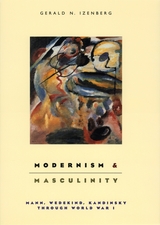 Modernism and Masculinity: Mann, Wedekind, Kandinsky through World War I
Gerald Izenberg
University of Chicago Press, 2000 Modernism and Masculinity argues that a crisis of masculinity among European writers and artists played a key role in the modernist revolution. Gerald Izenberg revises the notion that the feminine provided a premodern refuge for artists critical of individualism and materialism. Industrialization and the growing power of the market inspired novelist Thomas Mann, playwright Frank Wedelind, and painter Wassily Kandinsky to feel the problematic character of their own masculinity. As a result, these artists each came to identify creativity, transcendence, and freedom with the feminine.
But their critique of masculinity created enormous challenges: How could they appropriate a feminine aesthetic while retaining their own masculine idenitites? How did appropiating the feminine affect their personal relationships or their political views? Modernism and Masculinity seeks to answer these questions. In this absorbing combination of biography and formal critique, Izenberg reconsiders the works of Mann, Wedekind, Kandinsky and semonstrates how the cirses of masculinity they endure are found not just within the images and forms of their art, but in the distinct and very personal impulses that inspired it.
Modernism and Music: An Anthology of Sources
Edited and with Commentary by Daniel Albright
University of Chicago Press, 2004 If in earlier eras music may have seemed slow to respond to advances in other artistic media, during the modernist age it asserted itself in the vanguard. Modernism and Music provides a rich selection of texts on this moment, some translated into English for the first time. It offers not only important statements by composers and critics, but also musical speculations by poets, novelists, philosophers, and others-all of which combine with Daniel Albright's extensive, interlinked commentary to place modernist music in the full context of intellectual and cultural history.
 Modernism and Revolution: Russian Literature in Transition
Victor Erlich
Harvard University Press, 1994 The period before 1917 was a brilliant one for Russian literature, marked by the innovations and experimentation of modernism. With the Bolshevik seizure of power, a parallel process of drastic social innovation and experimentation began. How did revolution in the arts and revolution in society and politics relate to one another? Victor Erlich, an eminent authority on modern Slavic culture, takes up this question in Modernism and Revolution, a masterful appraisal of Russian literature during its most turbulent years.
Probing the salient literary responses to the upheaval that changed the face of Russia, Erlich offers a new perspective on this period of artistic and political ferment. He begins by revisiting the highlights of early twentieth-century Russian poetry—including the works of such masters as Akhmatova, Mandelstam, and Pasternak—and goes on to examine the major prose writers of the first post-revolutionary decade. In an inquiry that ranges over poetry, criticism, and artistic prose, Erlich explores the work of, among others, Symbolists Bely, Blok, and Ivanov, Futurists Khlebnikov and Mayakovsky, Formalists Jakobson and Shklovsky, the novelists Pilnyak and Zamyatin, the short-story master Babel, and the humorist Zoshchenko. He delineates a complex and ambiguous relationship between Russian literary modernism and the emerging Soviet state.
Here, following the artistic experimentation and cultural diversity begun early in the century, we witness a trend toward regimentation and conformity as the literary avant garde's modus vivendi with the new regime becomes increasingly precarious. As this regime recedes into history, along with the passions and prejudices it aroused, the accomplishments and failures of writers caught up in its early revolutionary fervor can at last be seen for what they were. From a perspective formed over a lifetime of study of Russian literature, Victor Erlich helps us look clearly, judiciously, and deeply into this long obscured part of the literary past.
Modernism and the Harlem Renaissance
Houston A. Baker Jr.
University of Chicago Press, 1989 "Mr. Baker perceives the harlem Renaissance as a crucial moment in a movement, predating the 1920's, when Afro-Americans embraced the task of self-determination and in so doing gave forth a distinctive form of expression that still echoes in a broad spectrum of 20th-century Afro-American arts. . . . Modernism and the Harlem Renaissance may well become Afro-America's 'studying manual.'"—Tonya Bolden, New York Times Book Review
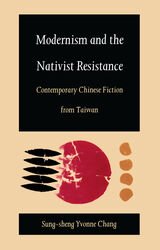 Modernism and the Nativist Resistance: Contemporary Chinese Fiction from Taiwan
Sung-sheng Yvonne Chang
Duke University Press, 1993 The first comprehensive English-language study of literary trends in the fiction of Taiwan over the last forty years, this pioneering work explores a rich tradition of literary Modernism in its shifting relationship with Chinese politics and culture.
Situating her subject in its historical context, Sung-sheng Yvonne Chang traces the connection between Taiwan's Modernists and the liberal scholars of pre-Communist China. She discusses the Modernists' ambivalent relationship with contemporary Taiwan's conservative culture, and provides a detailed critical survey of the strife between the Modernists and the socialistically inclined, anti-Western Nativists. Chang's approach is comprehensive, combining Chinese and comparative perspectives. Employing the critical insights of Raymond Williams, Peter Burger, M. M. Bahktin, and Fredric Jameson, she investigates the complex issues involved in Chinese writers' appropriation of avant-gardism, aestheticism, and various other Western literary concepts and techniques. Within this framework, Chang offers original, challenging interpretations of major works by the best-known Chinese Modernists from Taiwan.
As an intensive introduction to a literature of considerable quality and impact, and as a case study of the global spread of Western literary Modernism, this book will be of great interest to students of Chinese and comparative literature, and to those who wish to understand the broad patterns of twentieth-century literary history.
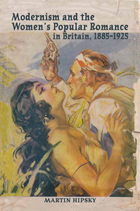 Modernism and the Women’s Popular Romance in Britain, 1885–1925
Martin Hipsky
Ohio University Press, 2011 Today’s mass-market romances have their precursors in late Victorian popular novels written by and for women. In Modernism and the Women’s Popular Romance Martin Hipsky scrutinizes some of the best-selling British fiction from the period 1885 to 1925, the era when romances, especially those by British women, were sold and read more widely than ever before or since.
Recent scholarship has explored the desires and anxieties addressed by both “low modern” and “high modernist” British culture in the decades straddling the turn of the twentieth century. In keeping with these new studies, Hipsky offers a nuanced portrait of an important phenomenon in the history of modern fiction. He puts popular romances by Mrs. Humphry Ward, Marie Corelli, the Baroness Orczy, Florence Barclay, Elinor Glyn, Victoria Cross, Ethel Dell, and E. M. Hull into direct relationship with the fiction of Virginia Woolf, Katherine Mansfield, James Joyce, and D. H. Lawrence, among other modernist greats.
 Modernism at Mid-Century: The Architecture of the United States Air Force Academy
Edited by Robert Bruegmann
University of Chicago Press, 1994 One of the country's largest and most important postwar architectural projects, the United States Air Force Academy opened in 1958. With its spectacular natural setting and stunning Modernist design, the Academy was quickly hailed as a national landmark and attracts over a million visitors each year.
The contributors to this volume (Jory Johnson, Robert Nauman, Sheri Olson, James Russell, and Kristen Schaffer) and editor Robert Bruegmann chronicle the complex history of the planning, design, and construction of the Air Force Academy. As the most conspicuous commission of the American military at the height of the Cold War, the design of the Academy generated intense popular interest and was a lightning rod for conflicting values in postwar society. The design, by architects Skidmore, Owings & Merrill, has been hailed as the final triumph of the International Style and as a monument to military bureaucracy.
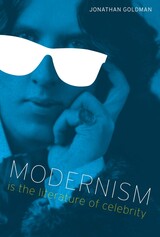 Modernism Is the Literature of Celebrity
By Jonathan Goldman
University of Texas Press, 2011 The phenomenon of celebrity burst upon the world scene about a century ago, as movies and modern media brought exceptional, larger-than-life personalities before the masses. During the same era, modernist authors were creating works that defined high culture in our society and set aesthetics apart from the middle- and low-brow culture in which celebrity supposedly resides. To challenge this ingrained dichotomy between modernism and celebrity, Jonathan Goldman offers a provocative new reading of early twentieth-century culture and the formal experiments that constitute modernist literature's unmistakable legacy. He argues that the literary innovations of the modernists are indeed best understood as a participant in the popular phenomenon of celebrity. Presenting a persuasive argument as well as a chronicle of modernism's and celebrity's shared history, Modernism Is the Literature of Celebrity begins by unraveling the uncanny syncretism between Oscar Wilde's writings and his public life. Goldman explains that Wilde, in shaping his instantly identifiable public image, provided a model for both literary and celebrity cultures in the decades that followed. In subsequent chapters, Goldman traces this lineage through two luminaries of the modernist canon, James Joyce and Gertrude Stein, before turning to the cinema of mega-star Charlie Chaplin. He investigates how celebrity and modernism intertwine in the work of two less obvious modernist subjects, Jean Rhys and John Dos Passos. Turning previous criticism on its head, Goldman demonstrates that the authorial self-fashioning particular to modernism and generated by modernist technique helps create celebrity as we now know it.
Modernism Reconsidered
Robert Kiely
Harvard University Press, 1983 The thirteen essays in this volume range freely over the literature of the modernist period, from about the turn of the century to World War II. The contributors were invited to examine less familiar works—or aspects of the work—of major writers; to reconsider authors not usually thought of as modernist; or to explore received opinions about modernist theories and the assumptions that inform the literature of the time. Collectively the essays demonstrate, in fresh and varied ways, that reconsideration is not recapitulation, and that modernism is a phenomenon more supple, live, and approximate than we had imagined.
Modernism: Representations of National Culture
Ahmet Ersoy
Central European University Press, 2010 Fifty-one texts illustrate the evolution of modernism in Eastern Europe. Essays, articles, poems, or excerpts from longer works offer new opportunities of possible comparisons of the respective national cultures. The volume focuses on the literary and scientific attempts at squaring the circle of individual and collective identities. Often outspokenly critical of the romantic episteme, these texts reflect a more sophisticated and critical stance than in the preceding periods. At the same time, rather than representing a complete rupture, they often continue and confirm the romantic identity narratives, albeit with "other means". The volume also presents the ways national minorities sought to legitimize their existence with reference to their cultural and institutional peculiarity.
Modernism: The Creation of Nation-States
Michal Kopecek
Central European University Press, 2010 This volume presents and illustrates the development of the ideologies of nation states, the "modern" successors of former empires. They exemplify the use modernist ideological framaeworks, from liberalism to socialism, in the context of the fundamental reconfiguration of the political system in this part of Europe between the 1860s and the 1930s. It also gives a panorama of the various solutions proposed for the national question in the region.
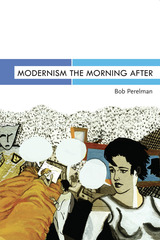 Modernism the Morning After
Bob Perelman
University of Alabama Press, 2017 Articulates a more capacious model for thinking about modernism, past, present, and future
Modernism the Morning After is a superb, lively, engaging series of essays and talks, dating from 1995 to 2016, by the eminent scholar, critic, and poet Bob Perelman. Throughout his career, Perelman has focused on the persistence of modernist ambition in poetry, with all of its admirable articulations and tragicomic short-circuits. Poetry, it turns out, is not simply “news that stays news,” as Ezra Pound postulated. Instead, as Perelman demonstrates, poetry often gropes toward whatever news can be found in the broader contexts of public speech—the cultural commons, the almost-real or much-too-real language of people and our hyperactive media.
Working in a variety of modes from the poetic to the dramatic to the conversational, and ranging across an expansive historical register from Dickinson, Whitman, and Dunbar in the nineteenth century to Kenneth Goldsmith and Stephen Colbert in the twenty-first, Perelman’s readings are unfailingly illuminating and, in many cases, his witty expositions take us strikingly close to the original intent of the text concerned.
Perelman also places intermittent, yet artful, pressure on some basic questions about the very nature of poetry. What does the transcription of poems tell us about them? How do hoaxes like the Ern Malley affair compel us to reconsider fundamental assumptions about what constitutes “authentic” poetry? How does the bathetic register relate to tones and idiom in recent poetic production? In Modernism the Morning After, Perelman writes as a poet, teacher, and critic, addressing a broad audience of readers and writers without choosing between them, inviting all to consider along with him modernism’s future through a dynamic consideration of its past.
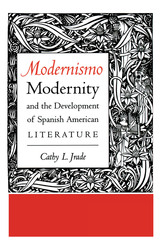 Modernismo, Modernity and the Development of Spanish American Literature
By Cathy L. Jrade
University of Texas Press, 1998 A CHOICE Outstanding Academic Book Modernismo arose in Spanish American literature as a confrontation with and a response to modernizing forces that were transforming Spanish American society in the later nineteenth century. In this book, Cathy L. Jrade undertakes a full exploration of the modernista project and shows how it provided a foundation for trends and movements that have continued to shape literary production in Spanish America throughout the twentieth century. Jrade opens with a systematic consideration of the development of modernismo and then proceeds with detailed analyses of works-poetry, narrative, and essays-that typified and altered the movement's course. In this way, she situates the writing of key authors, such as Rubén Darío, José Martí, and Leopoldo Lugones, within the overall modernista project and traces modernismo's influence on subsequent generations of writers. Jrade's analysis reclaims the power of the visionary stance taken by these creative intellectuals. She firmly abolishes any lingering tendency to associate modernismo with affectation and effete elegance, revealing instead how the modernistas' new literary language expressed their profound political and epistemological concerns.
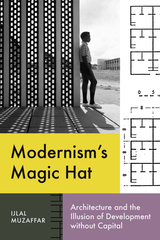 Modernism’s Magic Hat: Architecture and the Illusion of Development without Capital
Ijlal Muzaffar
University of Texas Press, 2024 Examines the role of architecture in the history of global development and decolonization. In Modernism’s Magic Hat, Ijlal Muzaffar examines how modern architects and planners help resolve one of the central dilemmas of the mid-twentieth-century world order: how to make decolonization plausible without accounting for centuries of capital drain under colonial rule. In the years after World War II, architects and planners found extensive opportunities in new international institutions—such as the World Bank, the UN, and the Ford Foundation—and helped shape new models of global intervention that displaced the burden of change onto the inhabitants. Muzaffar argues that architecture in this domain didn’t just symbolically represent power, but formed the material domain through which new modes of power acquired sense. Looking at a series of architectural projects across the world, from housing in Ghana to village planning in Nigeria and urban planning in Venezuela and Pakistan, Muzaffar explores how architects and planners shaped new ideas of time, land, climate, and the decolonizing body, making them appear as sources of untapped value. What resulted, Muzaffar argues, is a widespread belief in spontaneous Third World “development” without capital, which continues to foreclose any global discussion of colonial theft.
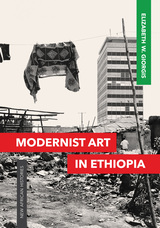 Modernist Art in Ethiopia
Elizabeth W. Giorgis
Ohio University Press, 2019 Short-listed for the Fage & Oliver Prize for outstanding scholarly work published on Africa. Finalist, African Studies Association Book Prize. Finalist, ASA Bethwell A. Ogot Prize for best book in east African studies. If modernism initially came to Africa through colonial contact, what does Ethiopia’s inimitable historical condition—its independence save for five years under Italian occupation—mean for its own modernist tradition? In Modernist Art in Ethiopia—the first book-length study of the topic—Elizabeth W. Giorgis recognizes that her home country’s supposed singularity, particularly as it pertains to its history from 1900 to the present, cannot be conceived outside the broader colonial legacy. She uses the evolution of modernist art in Ethiopia to open up the intellectual, cultural, and political histories of it in a pan-African context. Giorgis explores the varied precedents of the country’s political and intellectual history to understand the ways in which the import and range of visual narratives were mediated across different moments, and to reveal the conditions that account for the extraordinary dynamism of the visual arts in Ethiopia. In locating its arguments at the intersection of visual culture and literary and performance studies, Modernist Art in Ethiopia details how innovations in visual art intersected with shifts in philosophical and ideological narratives of modernity. The result is profoundly innovative work—a bold intellectual, cultural, and political history of Ethiopia, with art as its centerpiece.
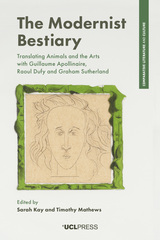 The Modernist Bestiary: Translating Animals and the Arts with Guillaume Apollinaire, Raoul Dufy and Graham Sutherland
Edited by Sarah Kay and Timothy Mathews
University College London, 2020 The Modernist Bestiary centres on Le Bestiaire ou Cortège d’Orphée (1911), a multimedia collaborative work by French-Polish poet Guillaume Apollinaire and French artist Raoul Dufy, and its homonym, The Bestiary or Procession of Orpheus (1979), by British artist Graham Sutherland. Rather than reconstructing the lineage of these two compositions, the book uncovers the aesthetic and intellectual processes involved that operate in different times, places and media. The Apollinaire and Dufy Bestiary is an open-ended collaboration, a feature that Sutherland develops in his re-visiting, and this book shows how these neglected works are caught up in many-faceted networks of traditions and genres. The contributors’ encounters with these works take the form of poetry and essays, all moving freely between different disciplines and practices, humanistic and posthumanist critical dimensions, as well as different animals and art forms. They draw on disciplines ranging from music, art history, translation, Classical poetry, and French poetry, and are nurtured by approaches including phenomenology, cultural studies, sound studies, and critical animal studies. Collectively the book shows that the aesthetic encounter, by nature effective, is by nature also interdisciplinary and motivating and that it spurs the critical in addressing the complex issues of 'human animality'.
The Modernist City: An Anthropological Critique of Brasilia
James Holston
University of Chicago Press, 1989 The utopian design and organization of Brasília—the modernist new capital of Brazil—were meant to transform Brazilian society. In this sophisticated, pioneering study of Brasília from its inception in 1957 to the present, James Holston analyzes this attempt to change society by building a new kind of city and the ways in which the paradoxes of constructing an imagined future subvert its utopian premises. Integrating anthropology with methods of analysis from architecture, urban studies, social history, and critical theory, Holston presents a critique of modernism based on a powerfully innovative ethnography of the city.
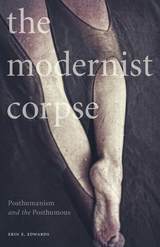 The Modernist Corpse: Posthumanism and the Posthumous
Erin E. Edwards
University of Minnesota Press, 2018 An unconventional take on the corpse challenges traditional conceptions of who—and what—counts as human, while offering bold insights into the modernist project
Too often regarded as the macabre endpoint of life, the corpse is rarely discussed and largely kept out of the public eye. In The Modernist Corpse, Erin E. Edwards unearths the critically important but previously buried life of the corpse, which occupies a unique place between biology and technology, the living and the dead. Exploring the posthumous as the posthuman, Edwards argues that the corpse is central to understanding relations between the human and its “others,” including the animal, the machine, and the thing. From photographs of lynchings to documentation of World War I casualties, the corpse is also central to the modernist project. Edwards turns critical attention to the corpse through innovative, posthumanist readings of canonical thinkers such as William Faulkner, Jean Toomer, W. E. B. Du Bois, Mina Loy, Djuna Barnes, and Gertrude Stein, offering new insights into the intersections among race, gender, technical media, and matter presumed to be dead. Edwards’s expansive approach to modernism includes diverse materials such as Hollywood film, experimental photography, autopsy discourses, and the comic strip Krazy Kat, producing a provocatively broad understanding of the modernist corpse and its various “lives.” The Modernist Corpse both establishes important new directions for modernist inquiry and overturns common thought about the relationship between living and dead matter.
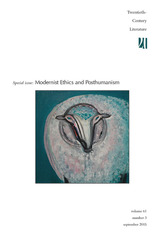 Modernist Ethics and Posthumanism
Derek Ryan and Mark West, special issue editors
Duke University Press From snakes to sheep, from hyenas to moths, from rural landscapes to childhood objects, this special issue examines the role of nonhuman alterity in the ethics of modernism. Drawing on the posthumanist theory of Jacques Derrida, Bruno Latour, Jane Bennett, and others, “Modernist Ethics and Posthumanism” offers original close readings of both canonical and more marginalized modernist figures. The contributors analyze unrecognizable creatures in D. H. Lawrence and Virginia Woolf; indeterminate animals in E. M. Forster; networks of human and nonhuman agents in Rainer Maria Rilke and Woolf; pacifism among people, animals, and things in Samuel Beckett; responsibility and rural environments in Mary Butts; and objects, both lost and found, and the threat of extinction in Elizabeth Bowen. What emerges from these essays is an account of modernist ethics that is embedded in relations between human and nonhuman and that gains its force through experiments in both content and form. Derek Ryan is lecturer in modernist literature at the University of Kent and the author of Animal Theory: A Critical Introduction. Mark West is a recent PhD graduate of the University of Glasgow. Contributors: Gabriel Hankins, Laci Mattison, Stephen Ross, Derek Ryan, Jeff Wallace, Sam Wiseman
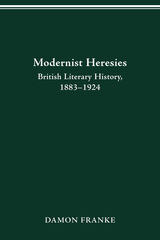 Modernist Heresies: British Literary History, 1883–1924
Damon Franke
Ohio State University Press, 2008 In Modernist Heresies, Damon Franke presents the discourse of heresy as central to the intellectual history of the origins of British modernism. The book examines heretical discourses from literature and culture of the fin de siècle and the Edwardian period in order to establish continuities between Victorian blasphemy and modernist obscenity by tracing the dialectic of heresy and orthodoxy, and the pragmatic shifting of both heterodox and authoritative discourses.
Franke documents the untold history of the Cambridge Heretics Society and places the concerns of this discussion society in dialogue with contemporaneous literature by such authors as Pater, Hardy, Shaw, Joyce, Woolf, Lawrence, and Orwell. Since several highly influential figures of the modernist literati were members of the Heretics or in dialogue with the group, heresy and its relation to synthesis now become crucial to an understanding of modernist aesthetics and ethics.
From the 1880s through the 1920s, heresy commonly appears in literature as a discursive trope, and the literary mode of heresy shifts over the course of this time from one of syncretism to one based on the construction of modernist artificial or "synthetic" wholes. In Franke’s work, the discourse of heresy comes forth as a forgotten dimension of the origins of modernism, one deeply entrenched in Victorian blasphemy and the crisis in faith, and one pointing to the censorship of modernist literature and some of the first doctrines of literary criticism.
The Modernist Impulse in American Protestantism
William R. Hutchison
Duke University Press, 1992 This landmark study of American religion, recipient of the National Religious Book Award in 1976, is being brought back into print with an updated bibliography. The Modernist Impulse in American Protestantism traces the history of American Protestant thought from the early part of the nineteenth century to the present. William R. Hutchison deals especially with the "modernist" movement that flourished in the years around 1900, and with the colorful personalities and disputes associated with that movement.
 The Modernist Impulse in American Protestantism
William R. Hutchison
Harvard University Press, 1976 One of the nation's foremost authorities on American religion here traces the immensely important strand of liberal thought in American Protestantism during the last century. From a refreshingly candid viewpoint that religious ideas operate with some autonomy and religious thought is only partially reducible to social experience--or explained by it, William R. Hutchison has produced an original, lasting work that will appeal to readers interested in the formation of American culture and in the shaping role played by religion.
Modernism, the author demonstrates, was a carefully wrought theological affirmation of those "generous hopes for the world's destiny" (Hawthorne's phrase) that energized nineteenth- and early twentieth-century reform. Although the modern religious impulse has been widely and correctly remembered as having called for the adjustment of religious ideas and practices to the demands of science and contemporary thought, more profound ideas gave the trend its force and integrity. Particularly, modernism formulated positive theological convictions about the presence and action of God in cultural development.
Combining judiciousness with a finely wrought style, Hutchison depicts the uncertain development of liberalism before 1875 in Unitarianism, in Congregationalism, in the concepts of individual regeneration preached by Horace Bushnell, and in the New School Presbyterianism of Chicago. The liberals' determination to preserve the special claims of Christianity in the face of doubts raised by Darwinism and the Higher Criticism is fully discussed, as is the evolution of forms of theism that found God revealed in many places besides Holy Writ. The social crises of the early twentieth century, together with developing doubts about human nature and progress, form the backdrop for an evaluation of external and internal criticisms of liberal thought. The Social Gospel and associated movements are skillfully explored. Hutchison also weighs the attacks upon liberal and modernist thought that followed World War I, when fundamentalism and then humanism and Reinhold Niebuhr's neo-orthodoxy protested with increasing stridency against the liberal world view.
The author views modernism as a faith arising from an extraordinary confidence, now largely dissipated, in the coming of an earthly kingdom. But he also believes that the modernist form of thought continues to have powerful effects, particularly in modifying the sense of alienation between religion and culture that historically has been a trait of Western society.
This volume, imbued with the deeply felt vision of a remarkable author, is a model of clarity and a work of great historical importance.
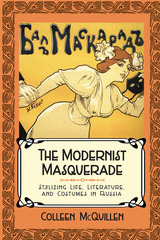 The Modernist Masquerade: Stylizing Life, Literature, and Costumes in Russia
Colleen McQuillen
University of Wisconsin Press, 2013 Masked and costume balls thrived in Russia in the late nineteenth and early twentieth centuries during a period of rich literary and theatrical experimentation. The first study of its kind, The Modernist Masquerade examines the cultural history of masquerades in Russia and their representations in influential literary works. The masquerade's widespread appearance as a literary motif in works by such writers as Anna Akhmatova, Leonid Andreev, Andrei Bely, Aleksandr Blok, and Fyodor Sologub mirrored its popularity as a leisure-time activity and illuminated its integral role in the Russian modernist creative consciousness. Colleen McQuillen charts how the political, cultural, and personal significance of lavish costumes and other forms of self-stylizing evolved in Russia over time. She shows how their representations in literature engaged in dialog with the diverse aesthetic trends of Decadence, Symbolism, and Futurism and with the era's artistic philosophies.
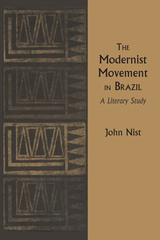 The Modernist Movement in Brazil: A Literary Study
By John Nist
University of Texas Press, 1967 “Ask an authority on Brazilian culture what he considers to be the most significant artistic event in Brazil during this century,” observes John Nist, “and he will quickly reply, ‘The Modern Art Week Exhibition, staged in Sao Paulo in February, 1922.’ This public demonstration and aesthetic manifesto represented a cut with the past, a violent break with tradition unparalleled in Brazilian history. The fact that Brazilians still discuss the poetical renovation achieved by Modernism shows how strongly the movement attacked and questioned traditional attitudes, cherished preconceptions, prejudiced aspects of a national sensibility that still persists, in some quarters, to this day. As a movement of research and experimentation, Modernism was, in the words of its principal prophet, Mário de Andrade, ‘a rupture, a revolt against the national intelligence.’ In time it became a national affirmation that resulted in the integration of Brazilian literature into the literature of the Western world—an integration too long overlooked by members of the English-speaking community.” The literary revolution thus unleashed in 1922 in Latin America’s largest country is the subject of this book by Nist. Initially fostered by the Brazilian poets in response to new challenges in painting, sculpture, architecture, and music, the Modernist Movement has passed through four clear phases, which are traced by the author: first, the destructive and iconoclastic phase, 1922–1930; second, the serious and socially concerned phase, 1930–1940; third, the aesthetically formal phase, 1940–1950; fourth, the Concretist experimental phase, 1950 to the mid-1960s. With similar competence Nist examines the fourfold achievement sought by these same poets: (1) a new age of humanity as well as a new artistic attitude; (2) a new aesthetic purity; (3) the termination of the divorce between humanity and nature, artist and human; (4) the discovery and establishment of a common ground between culture and spontaneity, tradition and originality, social and natural reality. In addition to presenting the origin and evolution of the Modernist Movement from a historical perspective, the author pays critical attention to the artistic achievements of the leading poets of twentieth-century Brazil: Mário de Andrade, Oswald de Andrade, Manuel Bandeira, Jorge de Lima, Cassiano Ricardo, Carlos Drummond de Andrade, Cecília Meireles, Vinícius de Moraes, Augusto Frederico Schmidt, Murilo Mendes, João Cabral de Melo Neto, Domingos Carvalho da Silva, and others of similar stature.
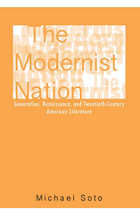 The Modernist Nation: Generation, Renaissance, and Twentieth-Century American Literature
Michael Soto
University of Alabama Press, 2007 The Modernist Nation examines why America's modern literary movements have come to be characterized as "generations" and "renaissances," such as the Lost Generation and the Beat Generation or the Harlem, Southern, and San Francisco Renaissances. The metaphor of rebirth, Michael Soto argues, offered and continues to offer American writers a kind of shorthand for imagining American cultural history, especially as a departure from Old World (English) trappings.
Soto highlights the interracial dynamics of American literary movements, touching on authors as varied as James Weldon Johnson, Malcolm Cowley, W. E. B. DuBois, Gertrude Stein, Ernest Hemingway, Zora Neale Hurston, and Jack Kerouac. After assessing the origins of the Lost Generation and the Harlem Renaissance, Soto traces the rise of the "bohemian artist" narrative, and demonstrates how a polyethnic cast of writers and critics constructed American literary production in terms of symbolic rebirth.
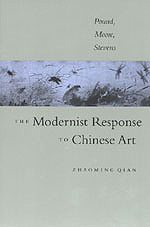 The Modernist Response to Chinese Art: Pound, Moore, Stevens
Zhaoming Qian
University of Virginia Press, 2003 "[A] richly illustrated and convincingly argued book.... Qian has opened wide the gates of understanding and appreciation to a subject few had the linguistic and cultural background to explain. Highly recommended."
--CHOICE
What role did Chinese art play in the poetic development of Ezra Pound, Marianne Moore, and Wallace Stevens? How could they share Chinese artists' Dao, an aesthetic held to be beyond verbal representation? In this sequel to his critically acclaimed study Orientalism and Modernism, Zhaoming Qian investigates the ways in which these three modernist poets received Chinese artistic notions and assimilated them into their literary masterpieces. With forty rare and previously unpublished photographs presented with accompanying analysis, this study reconstructs the three poets' dialogue with the Chinese masters.
In addition to examining Canto 49, "Nine Nectarines," and "Six Significant Landscapes," by Pound, Moore, and Stevens, respectively, Qian provides indispensable historical and cultural material never before recorded in a single work. The Modernist Response to Chinese Art pays long-overdue attention to the role of several early collections of Chinese art in England and America; it clarifies some common misconceptions about Confucianism and Daoism; it identifies in the modernist poets both linkage to and revolt against their predecessors'--and peers'--hegemonic Orientalism; and it intensifies awareness of modernist Orientalism not as a monolithic and constant conception but as a slippery and shifting process.
--------------------------------------------------------------------------------
Zhaoming Qian, Professor of English at the University of New Orleans, is the author of Orientalism and Modernism: The Legacy of China in Pound and Williams and the editor of Ezra Pound and China.
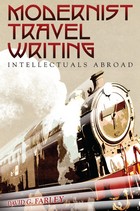 Modernist Travel Writing: Intellectuals Abroad
David G. Farley
University of Missouri Press, 2010 As the study of travel writing has grown in recent years, scholars have largely ignored the literature of modernist writers. Modernist Travel Writing: Intellectuals Abroad, by David Farley, addresses this gap by examining the ways in which a number of writers employed the techniques and stylistic innovations of modernism in their travel narratives to variously engage the political, social, and cultural milieu of the years between the world wars. Modernist Travel Writing argues that the travel book is a crucial genre for understanding the development of modernism in the years between the wars, despite the established view that travel writing during the interwar period was largely an escapist genre—one in which writers hearkened back to the realism of nineteenth-century literature in order to avoid interwar anxiety. Farley analyzes works that exist on the margins of modernism, generically and geographically, works that have yet to receive the critical attention they deserve, partly due to their classification as travel narratives and partly because of their complex modernist styles. The book begins by examining the ways that travel and the emergent travel regulations in the wake of the First World War helped shape Ezra Pound’s Cantos. From there, it goes on to examine E. E. Cummings’s frustrated attempts to navigate the “unworld” of Soviet Russia in his book Eimi,Wyndham Lewis’s satiric journey through colonial Morocco in Filibusters in Barbary,and Rebecca West’s urgent efforts to make sense of the fractious Balkan states in Black Lamb and Grey Falcon. These modernist writers traveled to countries that experienced most directly the tumult of revolution, the effects of empire, and the upheaval of war during the years between World War I and World War II. Farley’s study focuses on the question of what constitutes “evidence” for Pound, Lewis, Cummings, and West as they establish their authority as eyewitnesses, translate what they see for an audience back home, and attempt to make sense of a transformed and transforming modern world.
Modernist Travel Writing makes an original contribution to the study of literary modernism while taking a distinctive look at a unique subset within the growing field of travel writing studies. David Farley’s work will be of interest to students and teachers in both of these fields as well as to early-twentieth-century literary historians and general enthusiasts of modernist studies.
Modernists and Mystics
C. J. T Talar
Catholic University of America Press, 2009 In the six original essays included in this volume, the authors discuss how von Hügel, Blondel, Bremond, and Loisy all found inspiration in the great mystics of the past.
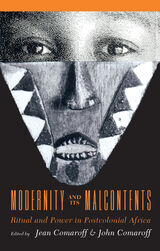 Modernity and Its Malcontents: Ritual and Power in Postcolonial Africa
Edited by Jean Comaroff and John L. Comaroff
University of Chicago Press, 1993 What role does ritual play in the everyday lives of modern Africans? How are so-called "traditional" cultural forms deployed by people seeking empowerment in a world where "modernity" has failed to deliver on its promises?
Some of the essays in Modernity and Its Malcontents address familiar anthropological issues—like witchcraft, myth, and the politics of reproduction—but treat them in fresh ways, situating them amidst the polyphonies of contemporary Africa. Others explore distinctly nontraditional subjects—among them the Nigerian popular press and soul-eating in Niger—in such a way as to confront the conceptual limits of Western social science. Together they demonstrate how ritual may be powerfuly mobilized in the making of history, present, and future.
Addressing challenges posed by contemporary African realities, the authors subject such concepts as modernity, ritual, power, and history to renewed critical scrutiny. Writing about a variety of phenomena, they are united by a wish to preserve the diversity and historical specificity of local signs and practices, voices and perspectives. Their work makes a substantial and original contribution toward the historical anthropology of Africa.
The contributors, all from the Africanist circle at the University of Chicago, are Adeline Masquelier, Deborah Kaspin, J. Lorand Matory, Ralph A. Austen, Andrew Apter, Misty L. Bastian, Mark Auslander, and Pamela G. Schmoll.
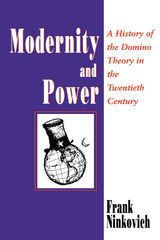 Modernity and Power: A History of the Domino Theory in the Twentieth Century
Frank Ninkovich
University of Chicago Press, 1994 Modernity and Power provides a fresh conceptual overview of twentieth-century United States foreign policy, from the Roosevelt and Taft administrations through the presidencies of Kennedy and Johnson. Beginning with Woodrow Wilson, American leaders gradually abandoned the idea of international relations as a game of geopolitical interplays, basing their diplomacy instead on a symbolic opposition between "world public opinion" and the forces of destruction and chaos. Frank Ninkovich provocatively links this policy shift to the rise of a distinctly modernist view of history.
To emphasize the central role of symbolism and ideological assumptions in twentieth-century American statesmanship, Ninkovich focuses on the domino theory—a theory that departed radically from classic principles of political realism by sanctioning intervention in world regions with few financial or geographic claims on the national interest. Ninkovich insightfully traces the development of this global strategy from its first appearance early in the century through the Vietnam war.
Throughout the book, Ninkovich draws on primary sources to recover the worldview of the policy makers. He carefully assesses the coherence of their views rather than judge their actions against "objective" realities. Offering a new alternative to realpolitic and economic explanations of foreign policy, Modernity and Power will change the way we think about the history of U.S. international relations.
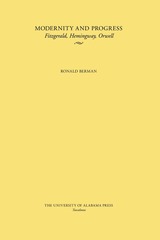 Modernity and Progress: Fitzgerald, Hemingway, Orwell
Ronald Berman
University of Alabama Press, 2007 Breaks new critical ground by exploring philosophical and aesthetic issues germane to the writings of three major modern literary figures. In the 1920s and ‘30s, understandings of time, place, and civilization were subjected to a barrage of new conceptions. Ronald Berman probes the work of three writers who wrestled with one or more of these issues in ways of lasting significance.
Hemingway, Fitzgerald, and Orwell all grappled with fluid notions of time: Hemingway’s absolute present, Fitzgerald’s obsession with what might be and what might have been, and Orwell’s concerns with progress. For these authors, progress is also tied to competing senses of place--for Fitzgerald, the North versus the South; for Hemingway, America versus Europe. At stake for each is an understanding of what constitutes true civilization in a post-war world. Berman discusses Hemingway’s deployment of language in tackling the problems of thinking and knowing. Berman follows this notion further in examining the indisputable impact upon Hemingway’s prose of Paul Cézanne’s painting and the nature of perception.
Finally, Berman considers the influence on Orwell of Aristotle and Freud’s ideas of civilization, translated by Orwell into the fabric of 1984 and other writings.
Ronald Berman is Professor of English at the University of California at San Diego and past chairman of the National Endowment for the Humanities. He is author of six books, including “The Great Gatsby” and Fitzgerald’s World of Ideas and Fitzgerald-Wilson-Hemingway: Language and Experience.
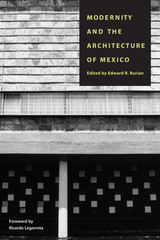 Modernity and the Architecture of Mexico
Edited by Edward R. Burian
University of Texas Press, 1997 Since the mid 1970s, there has been an extraordinary renewal of interest in early modern architecture, both as a way of gaining insight into contemporary architectural culture and as a reaction to neoconservative postmodernism. This book undertakes a critical reappraisal of the notion of modernity in Mexican architecture and its influence on a generation of Mexican architects whose works spanned the 1920s through the 1960s. Nine essays by noted architects and architectural historians cover a range of topics from broad-based critical commentaries to discussions of individual architects and buildings. Among the latter are the architects Enrique del Moral, Juan O'Gorman, Carlos Obregón Santacilia, Juan Segura, Mario Pani, and the campus and stadium of the Ciudad Universitaria in Mexico City. Relatively little has been published in English regarding this era in Mexican architecture. Thus, Modernity and the Architecture of Mexico will play a groundbreaking role in making the underlying assumptions, ideological and political constructs, and specific architect's agendas known to a wide audience in the humanities. Likewise, it should inspire greater appreciation for this undervalued body of works as an important contribution to the modern movement.
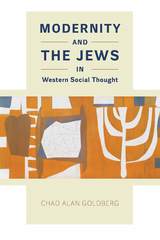 Modernity and the Jews in Western Social Thought
Chad Alan Goldberg
University of Chicago Press, 2017 In the late nineteenth and early twentieth centuries, prominent social thinkers in France, Germany, and the United States sought to understand the modern world taking shape around them. Although they worked in different national traditions and emphasized different features of modern society, they repeatedly invoked Jews as a touchstone for defining modernity and national identity in a context of rapid social change.
In Modernity and the Jews in Western Social Thought, Chad Alan Goldberg brings us a major new study of Western social thought through the lens of Jews and Judaism. In France, where antisemites decried the French Revolution as the “Jewish Revolution,” Émile Durkheim challenged depictions of Jews as agents of revolutionary subversion or counterrevolutionary reaction. When German thinkers such as Karl Marx, Georg Simmel, Werner Sombart, and Max Weber debated the relationship of the Jews to modern industrial capitalism, they reproduced, in secularized form, cultural assumptions derived from Christian theology. In the United States, William Thomas, Robert Park, and their students conceived the modern city and its new modes of social organization in part by reference to the Jewish immigrants concentrating there. In all three countries, social thinkers invoked real or purported differences between Jews and gentiles to elucidate key dualisms of modern social thought. The Jews thus became an intermediary through which social thinkers discerned in a roundabout fashion the nature, problems, and trajectory of their own wider societies. Goldberg rounds out his fascinating study by proposing a novel explanation for why Jews were such an important cultural reference point. He suggests a rethinking of previous scholarship on Orientalism, Occidentalism, and European perceptions of America, arguing that history extends into the present, with the Jews—and now the Jewish state—continuing to serve as an intermediary for self-reflection in the twenty-first century.
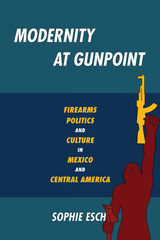 Modernity at Gunpoint: Firearms, Politics, and Culture in Mexico and Central America
Sophie Esch
University of Pittsburgh Press, 2018 Winner, 2019 LASA Best Book in the Humanities (Mexico section)
Modernity at Gunpoint provides the first study of the political and cultural significance of weaponry in the context of major armed conflicts in Mexico and Central America. In this highly original study, Sophie Esch approaches political violence through its most direct but also most symbolic tool: the firearm. In novels, songs, and photos of insurgency, firearms appear as artifacts, tropes, and props, through which artists negotiate conceptions of modernity, citizenship, and militancy. Esch grounds her analysis in important rereadings of canonical texts by Martín Luis Guzman, Nellie Campobello, Omar Cabezas, Gioconda Belli, Sergio Ramirez, Horacio Castellanos Moya, and others. Through the lens of the iconic firearm, Esch relates the story of the peasant insurgencies of the Mexican Revolution, the guerrilla warfare of the Sandinista Revolution, and the ongoing drug-related wars in Mexico and Central America, to highlight the historical, cultural, gendered, and political significance of weapons in this volatile region.
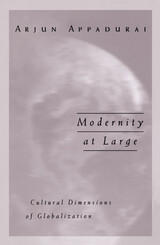 Modernity At Large: Cultural Dimensions of Globalization
Arjun Appadurai
University of Minnesota Press, 1996 Examines the role of imagination in the cultural development of our shrinking world. The world is growing smaller. Every day we hear this idea expressed and witness its reality in our lives-through the people we meet, the products we buy, the foods we eat, and the movies we watch. In this bold look at the cultural effects of a shrinking world, leading cultural theorist Arjun Appadurai places these challenges and pleasures of contemporary life in a broad global perspective. Offering a new framework for the cultural study of globalization, Modernity at Large shows how the imagination works as a social force in today's world, providing new resources for identity and energies for creating alternatives to the nation-state, whose era some see as coming to an end. Appadurai examines the current epoch of globalization, which is characterized by the twin forces of mass migration and electronic mediation, and provides fresh ways of looking at popular consumption patterns, debates about multiculturalism, and ethnic violence. He considers the way images-of lifestyles, popular culture, and self-representation-circulate internationally through the media and are often borrowed in surprising (to their originators) and inventive fashions. Appadurai simultaneously explores and explodes boundaries-between how we imagine the world and how that imagination influences our self-understanding, between social institutions and their effects on the people who participate in them, between nations and peoples that seem to be ever more homogeneous and yet ever more filled with differences. Modernity at Large offers a path to move beyond traditional oppositions between culture and power, tradition and modernity, global and local, pointing out the vital role imagination plays in our construction of the world of today-and tomorrow.
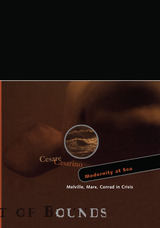 Modernity At Sea: Melville, Marx, Conrad In Crisis
Cesare Casarino
University of Minnesota Press, 2002 Analyzes nineteenth-century seafaring narratives and their importance to ideas of modernity At once a literary-philosophical meditation on the question of modernity and a manifesto for a new form of literary criticism, Modernity at Sea argues that the nineteenth-century sea narrative played a crucial role in the emergence of a theory of modernity as permanent crisis. In a series of close readings of such works as Herman Melville’s White-Jacket and Moby Dick, Joseph Conrad’s The Nigger of the "Narcissus” and The Secret Sharer, and Karl Marx’s Grundrisse, Cesare Casarino draws upon the thought of twentieth-century figures including Giorgio Agamben, Louis Althusser, Walter Benjamin, Leo Bersani, Gilles Deleuze, Félix Guattari, and Antonio Negri to characterize the nineteenth-century ship narrative as the epitome of Michel Foucault’s "heterotopia"—a special type of space that simultaneously represents, inverts, and contests all other spaces in culture.Elaborating Foucault’s claim that the ship has been the heterotopia par excellence of Western civilization since the Renaissance, Casarino goes on to argue that the nineteenth-century sea narrative froze the world of the ship just before its disappearance—thereby capturing at once its apogee and its end, and producing the ship as the matrix of modernity.
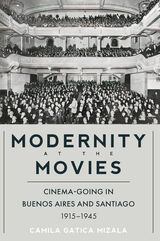 Modernity at the Movies: Cinema-going in Buenos Aires and Santiago, 1915-1945
Camila Gatica Mizala
University of Pittsburgh Press, 2023 Cinema can both reflect the world as it is and offer escape from it. In Modernity at the Movies, Camila Gatica Mizala explores the ideas of reflection versus escapism and examines how modes of understanding the current moment emerged through the practice of going to the movies in Santiago and Buenos Aires between 1915 and 1945. Using cinema and variety magazines published in both cities, she analyzes the technology, architecture, attendance, behavior, language, censorship, and overall experience of cinema-going. These publications regularly engaged with important topics such as morality and urbanization and helped build a cinematographic audience. Gatica Mizala brings together the perception and reception of cinema as a modern art form, shifting the focus from the production of films to the experience of the audience when viewing them. By focusing on the audience instead of the films, this study is able to articulate the ways that cinema, as a modern activity, was incorporated into everyday life and discuss what it meant to be modern in early to midcentury Latin America.
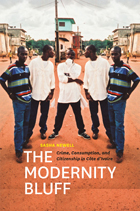 The Modernity Bluff: Crime, Consumption, and Citizenship in Côte d’Ivoire
Sasha Newell
University of Chicago Press, 2012 In Côte d’Ivoire, appearing modern is so important for success that many young men deplete their already meager resources to project an illusion of wealth in a fantastic display of Western imitation, spending far more than they can afford on brand name clothing, accessories, technology, and a robust nightlife. Such imitation, however, is not primarily meant to deceive—rather, as Sasha Newell argues in The Modernity Bluff, it is an explicit performance so valued in Côte d’Ivoire it has become a matter of national pride.
Called bluffeurs, these young urban men operate in a system of cultural economy where reputation is essential for financial success. That reputation is measured by familiarity with and access to the fashionable and expensive, which leads to a paradoxical state of affairs in which the wasting of wealth is essential to its accumulation. Using the consumption of Western goods to express their cultural mastery over Western taste, Newell argues, bluffeurs engage a global hierarchy that is profoundly modern, one that values performance over authenticity—highlighting the counterfeit nature of modernity itself.
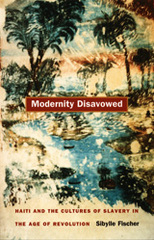 Modernity Disavowed: Haiti and the Cultures of Slavery in the Age of Revolution
Sibylle Fischer
Duke University Press, 2004 Modernity Disavowed is a pathbreaking study of the cultural, political, and philosophical significance of the Haitian Revolution (1791–1804). Revealing how the radical antislavery politics of this seminal event have been suppressed and ignored in historical and cultural records over the past two hundred years, Sibylle Fischer contends that revolutionary antislavery and its subsequent disavowal are central to the formation and understanding of Western modernity. She develops a powerful argument that the denial of revolutionary antislavery eventually became a crucial ingredient in a range of hegemonic thought, including Creole nationalism in the Caribbean and G. W. F. Hegel’s master-slave dialectic. Fischer draws on history, literary scholarship, political theory, philosophy, and psychoanalytic theory to examine a range of material, including Haitian political and legal documents and nineteenth-century Cuban and Dominican literature and art. She demonstrates that at a time when racial taxonomies were beginning to mutate into scientific racism and racist biology, the Haitian revolutionaries recognized the question of race as political. Yet, as the cultural records of neighboring Cuba and the Dominican Republic show, the story of the Haitian Revolution has been told as one outside politics and beyond human language, as a tale of barbarism and unspeakable violence. From the time of the revolution onward, the story has been confined to the margins of history: to rumors, oral histories, and confidential letters. Fischer maintains that without accounting for revolutionary antislavery and its subsequent disavowal, Western modernity—including its hierarchy of values, depoliticization of social goals having to do with racial differences, and privileging of claims of national sovereignty—cannot be fully understood.
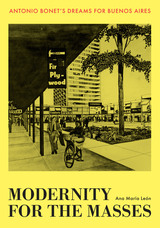 Modernity for the Masses: Antonio Bonet's Dreams for Buenos Aires
By Ana María León
University of Texas Press, 2021 2022 PROSE Award Finalist in Architecture and Urban Planning
2022 Association for Latin American Art Arvey Foundation Book Award, Honorable Mention Throughout the early twentieth century, waves of migration brought working-class people to the outskirts of Buenos Aires. This prompted a dilemma: Where should these restive populations be situated relative to the city’s spatial politics? Might housing serve as a tool to discipline their behavior? Enter Antonio Bonet, a Catalan architect inspired by the transatlantic modernist and surrealist movements. Ana María León follows Bonet's decades-long, state-backed quest to house Buenos Aires's diverse and fractious population. Working with totalitarian and populist regimes, Bonet developed three large-scale housing plans, each scuttled as a new government took over. Yet these incomplete plans—Bonet's dreams—teach us much about the relationship between modernism and state power. Modernity for the Masses finds in Bonet's projects the disconnect between modern architecture’s discourse of emancipation and the reality of its rationalizing control. Although he and his patrons constantly glorified the people and depicted them in housing plans, Bonet never consulted them. Instead he succumbed to official and elite fears of the people's latent political power. In careful readings of Bonet's work, León discovers the progressive erasure of surrealism's psychological sensitivity, replaced with an impulse, realized in modernist design, to contain the increasingly empowered population.
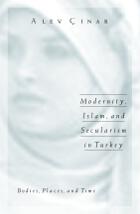 Modernity, Islam, and Secularism in Turkey: Bodies, Places, and Time
Alev Cinar
University of Minnesota Press, 2005 What would an Islamic modernism look like? The question is a pressing one, as cultures rebel against modernity in its almost exclusively European forms. Alev Cinar's groundbreaking examination of contemporary Turkey, which stands at the threshold of East and West, of religious and secular nationalism, explores modernity through daily practices and the social construction of identity and political agency in relation to nationalism, secularism, and Islam. Focusing on developments of the 1990s, Modernity, Islam, and Secularism in Turkey argues that Islamist ideology generated an alternative modernization project, which applied the same strategies and techniques as that of the modernizing state to produce and institutionalize its own version of an equally thorough nationalist program. Using local details and debates - including a fascinating discussion of veiling as symbolic of both the "liberation" of Western appearance and the Islamists' struggle to rescue their nation's culture - Cinar reveals modernity as a transformative intervention in bodies, places, and times.Bringing a much-needed critical theory approach to bear on the politics of an Islamic nation, Cinar's work introduces a new way of conceptualizing modernity based on the analysis of a non-Western context.
The Modernity of Tradition: Political Development in India
Lloyd I. Rudolph and Susanne Hoeber Rudolph
University of Chicago Press, 1984 Stressing the variations in meaning of modernity and tradition, this work shows how in India traditional structures and norms have been adapted or transformed to serve the needs of a modernizing society. The persistence of traditional features within modernity, it suggests, answers a need of the human condition.
Three areas of Indian life are analyzed: social stratification, charismatic leadership, and law. The authors question whether objective historical conditions, such as advanced industrialization, urbanization, or literacy, are requisites for political modernization.
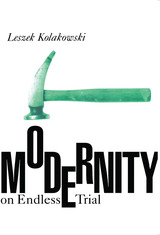 Modernity on Endless Trial
Leszek Kolakowski
University of Chicago Press, 1990 Leszek Kolakowski delves into some of the most intellectually vigorous questions of our time in this remarkable collection of essays garnished with his characteristic wit. Ten of the essays have never appeared before in English.
"Exemplary. . . . It should be celebrated." —Arthur C. Danto, New York Times Book Review
"This book . . . express[es] Kolakowski's thought on God, man, reason, history, moral truth and original sin, prompted by observation of the dramatic struggle among Christianity, the Enlightenment and modern totalitarianism. It is a wonderful collection of topics." —Thomas Nagel, Times Literary Supplement
"No better antidote to bumper-sticker thinking exists than this collection of 24 'appeals for moderation in consistency,' and never has such an antidote been needed more than it is now." —Joseph Coates, Chicago Tribune
"Whether learned or humorous, these essays offer gems in prose of diamond hardness, precision, and brilliance." —Thomas D'Evelyn, The Christian Science Monitor
A "Notable Books of the Year 1991" selection, New York Times Book Review—a "Noted with Pleasure" selection, New York Times Book Review—a "Summer Reading 1991" selection, New York Times Book Review—a "Books of the Year" selection, The Times.
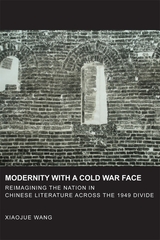 Modernity with a Cold War Face: Reimagining the Nation in Chinese Literature across the 1949 Divide
Xiaojue Wang
Harvard University Press, 2013 The year 1949 witnessed China divided into multiple political and cultural entities. How did this momentous shift affect Chinese literary topography? Modernity with a Cold War Face examines the competing, converging, and conflicting modes of envisioning a modern nation in mid-twentieth century Chinese literature. Bridging the 1949 divide in both literary historical periodization and political demarcation, Xiaojue Wang proposes a new framework to consider Chinese literature beyond national boundaries, as something arising out of the larger global geopolitical and cultural conflict of the Cold War.
Examining a body of heretofore understudied literary and cultural production in mainland China, Taiwan, Hong Kong, and overseas during a crucial period after World War II, Wang traces how Chinese writers collected artistic fragments, blended feminist and socialist agendas, constructed ambivalent stances toward colonial modernity and an imaginary homeland, translated foreign literature to shape a new Chinese subjectivity, and revisited the classics for a new time. Reflecting historical reality in fictional terms, their work forged a path toward multiple modernities as they created alternative ways of connection, communication, and articulation to uncover and undermine Cold War dichotomous antagonism.
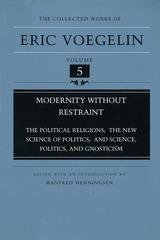 Modernity without Restraint (CW5): Political Religions; The New Science of Politics; and Science, Politics and Gnosticism
Eric Voegelin, Edited & Intro by Manfred Henningsen
University of Missouri Press, 2000 Published together for the first time in one volume are Eric Voegelin's Political Religions, The New Science of Politics, and Science, Politics, and Gnosticism.Political Religions was first published in 1938 in Vienna, the year of Voegelin's forced emigration from Austria to the United States. The New Science of Politics was written in 1952 and established Voegelin's reputation as a political philosopher in America. Science, Politics, and Gnosticism was Voegelin's Inaugural Lecture at the University of Munich in 1958 and introduced him to the West German intellectual public. Although these books were written during remarkably different historical circumstances of Voegelin's life, all three present an analysis of modern Western civilization that has lost its spiritual foundations and is challenged by various ideological persuasions. Voegelin critiques in these texts a "modernity without restraint." It is a modernity with Hegelian, Marxian, Nietzschean, Heideggerian, positivist, Fascist, and other predominantly German characteristics. The author confronts this modernity with Western meaning as it emerged in ancient Greece, Rome, Israel, and Christianity and became transformed in the European Middle Ages, the Italian Renaissance, and the Anglo- American political formation. This three-in-one volume delves into the intellectual and spiritual complications of modernity, tracing its evolution from the ancient civilizations to the twentieth century. In his substantial new introduction, Manfred Henningsen explores the experiential background that motivated Voegelin's theoretical analyses and the new relevance that his work has gained in recent years with the unexpected collapse of state socialism in East Germany, Eastern Europe, and the Soviet Union. Modernity without Restraint will be a valuable addition to intellectual history and Voegelin studies.
|
|
